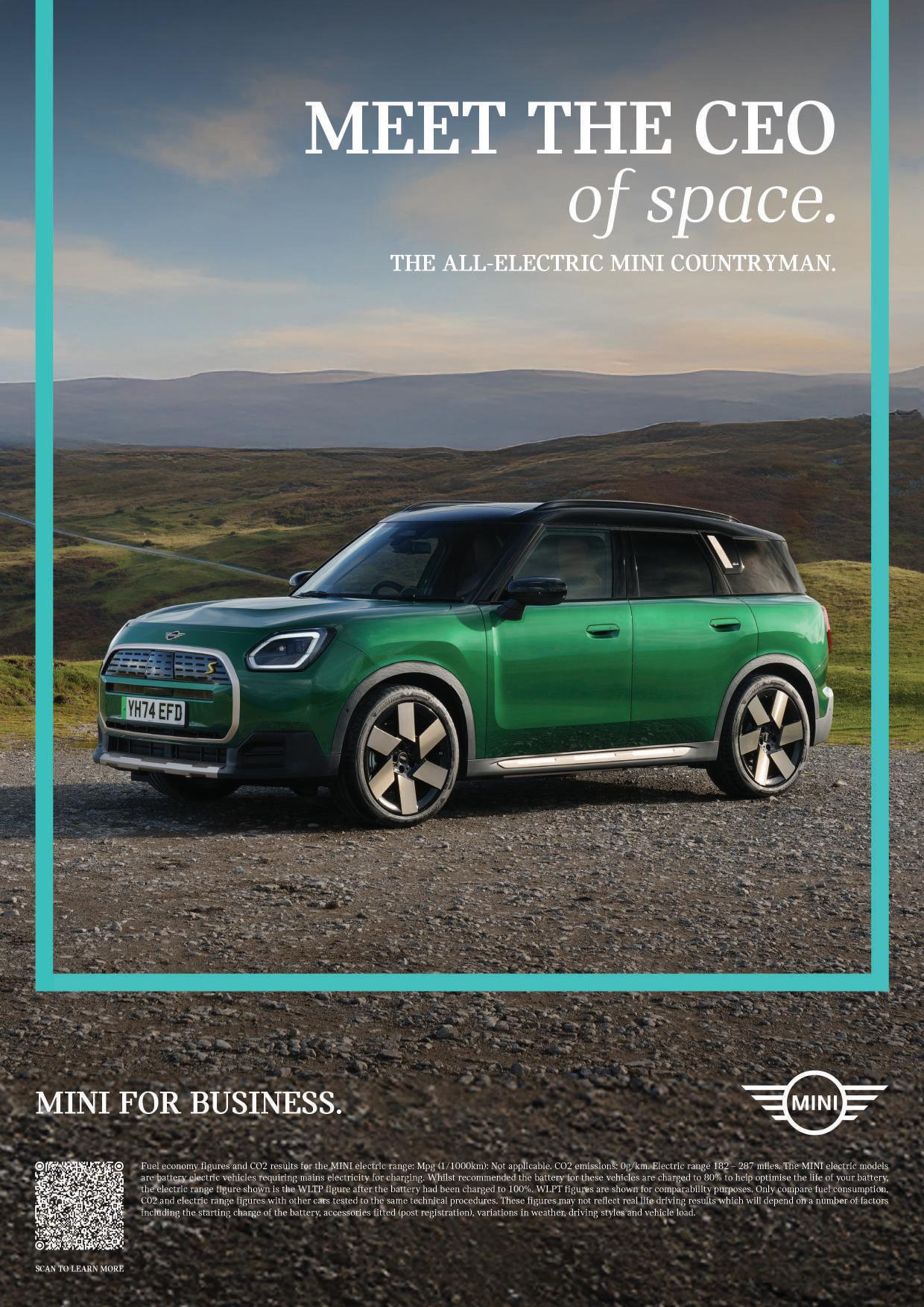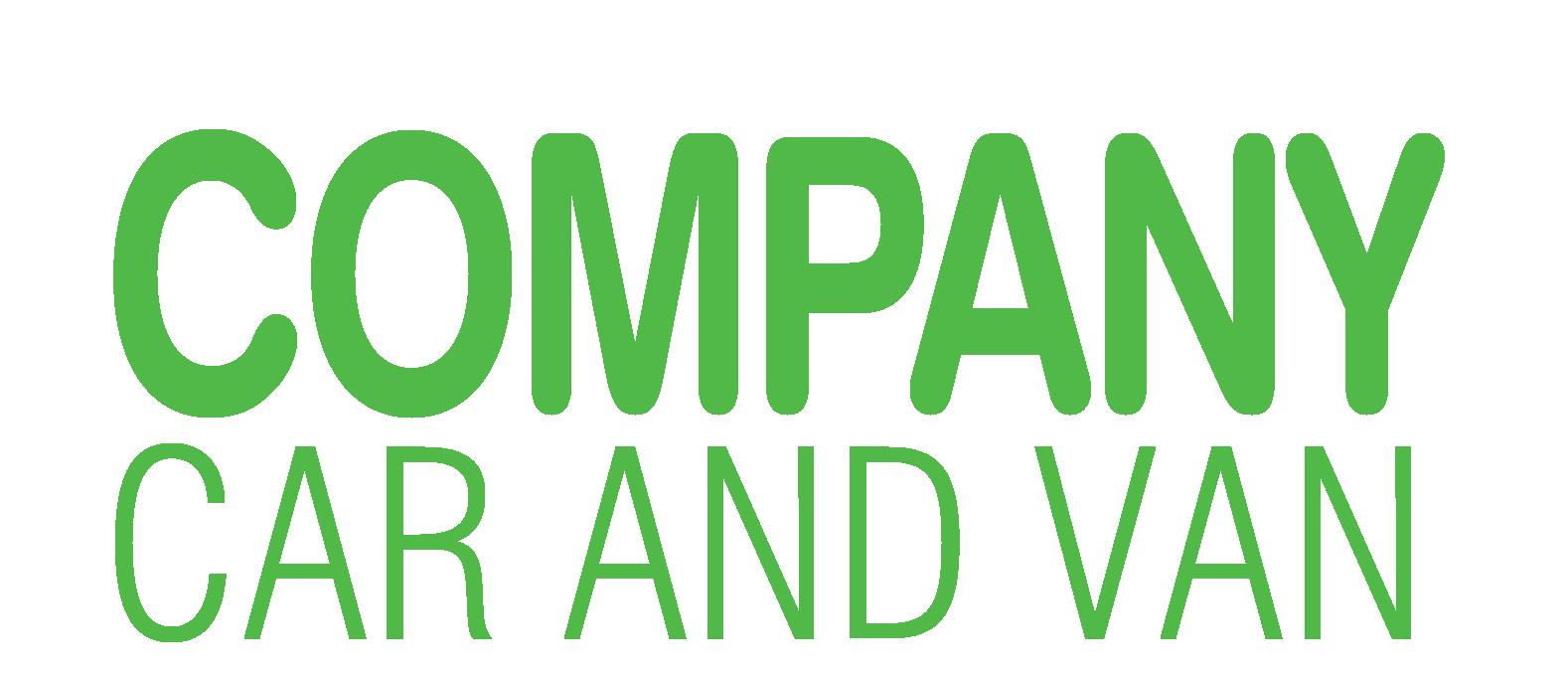

MINI Cooper Electric

Fun in a small package

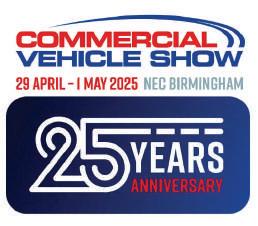
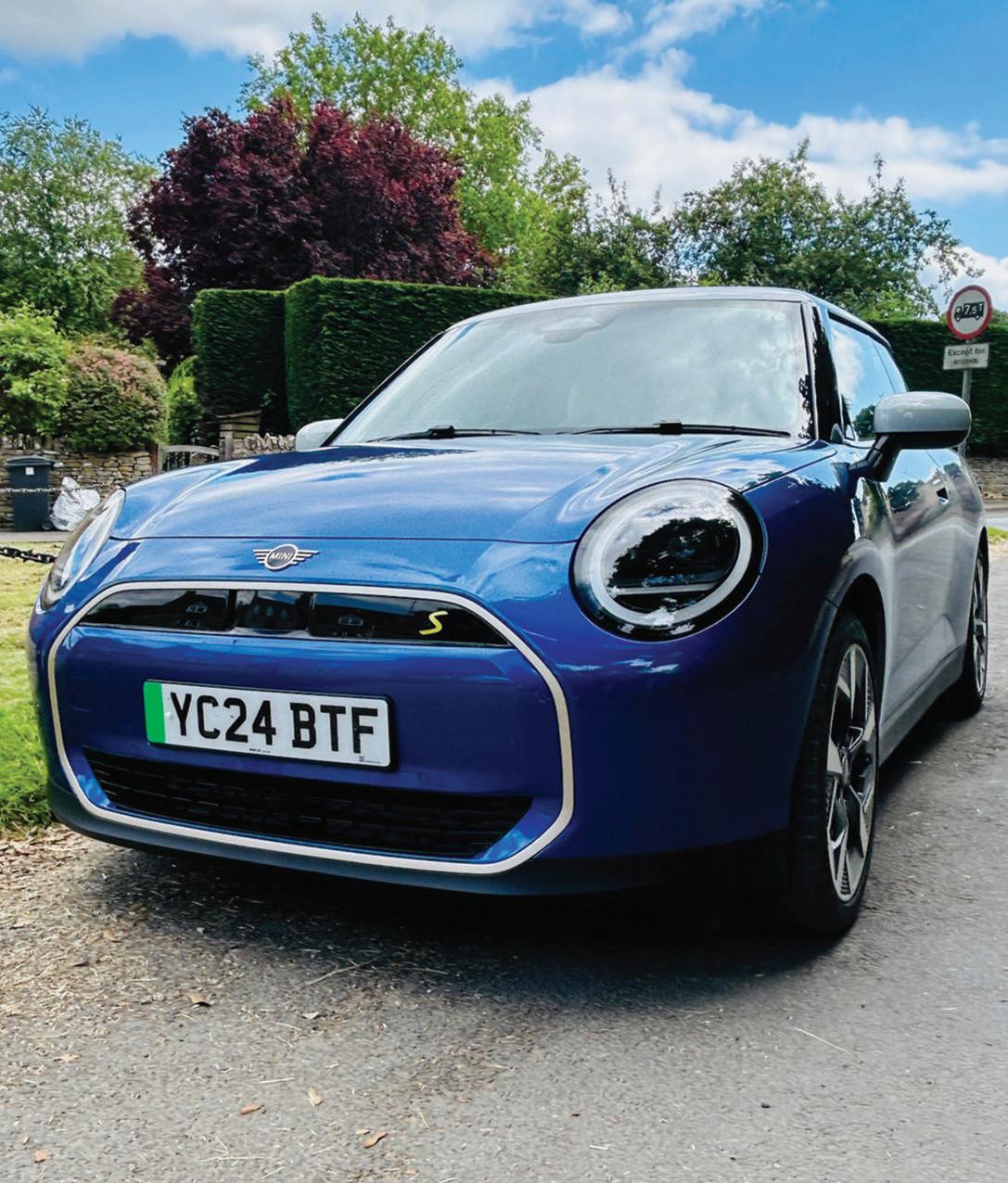
ŠKODA ELROQ
It’s a clever car all round JAECOO
Plug-in 7 enters the fray

CITROEN Ë-C3
The electric car you’ve been waiting for
D-Max EV gets world-first launch


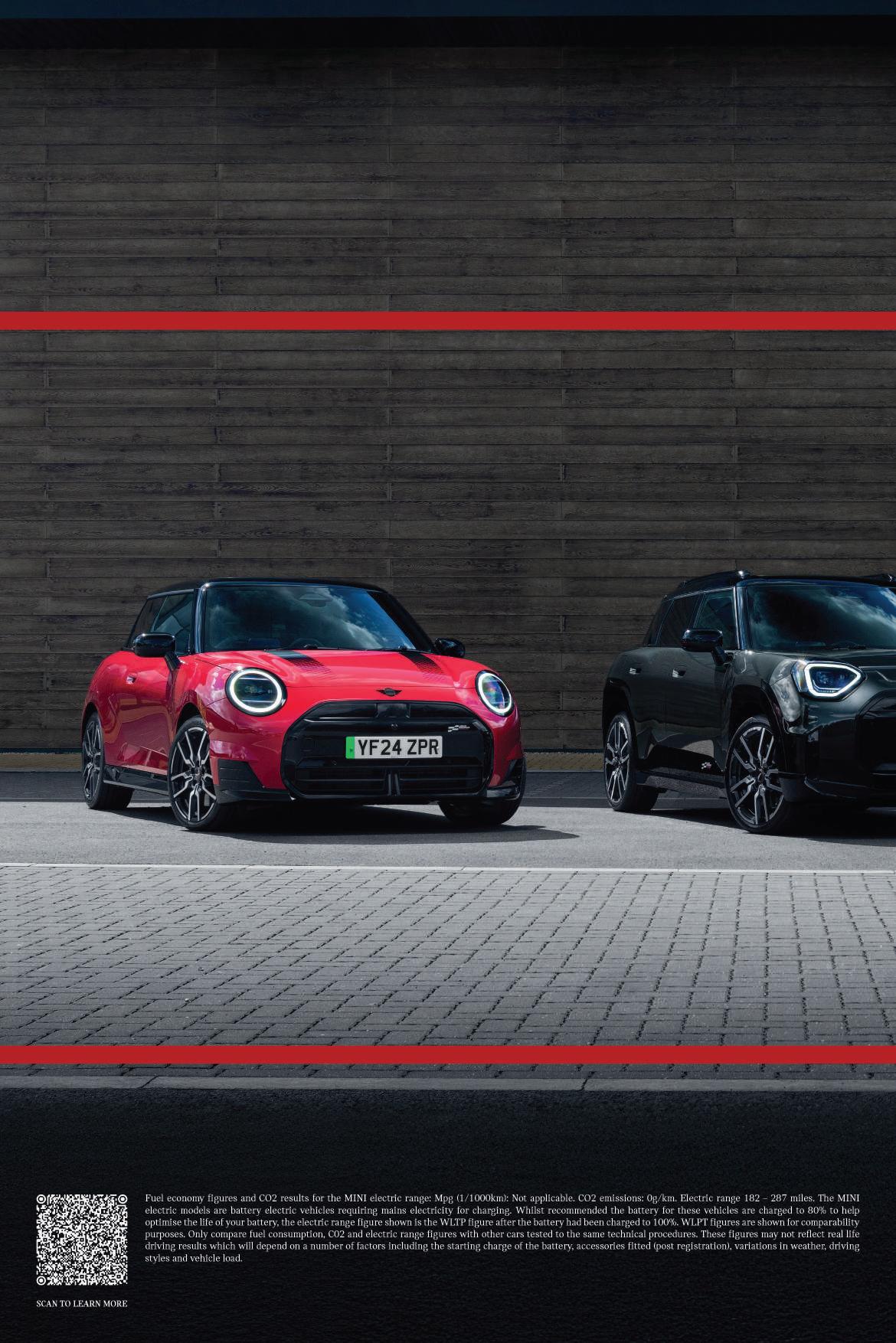
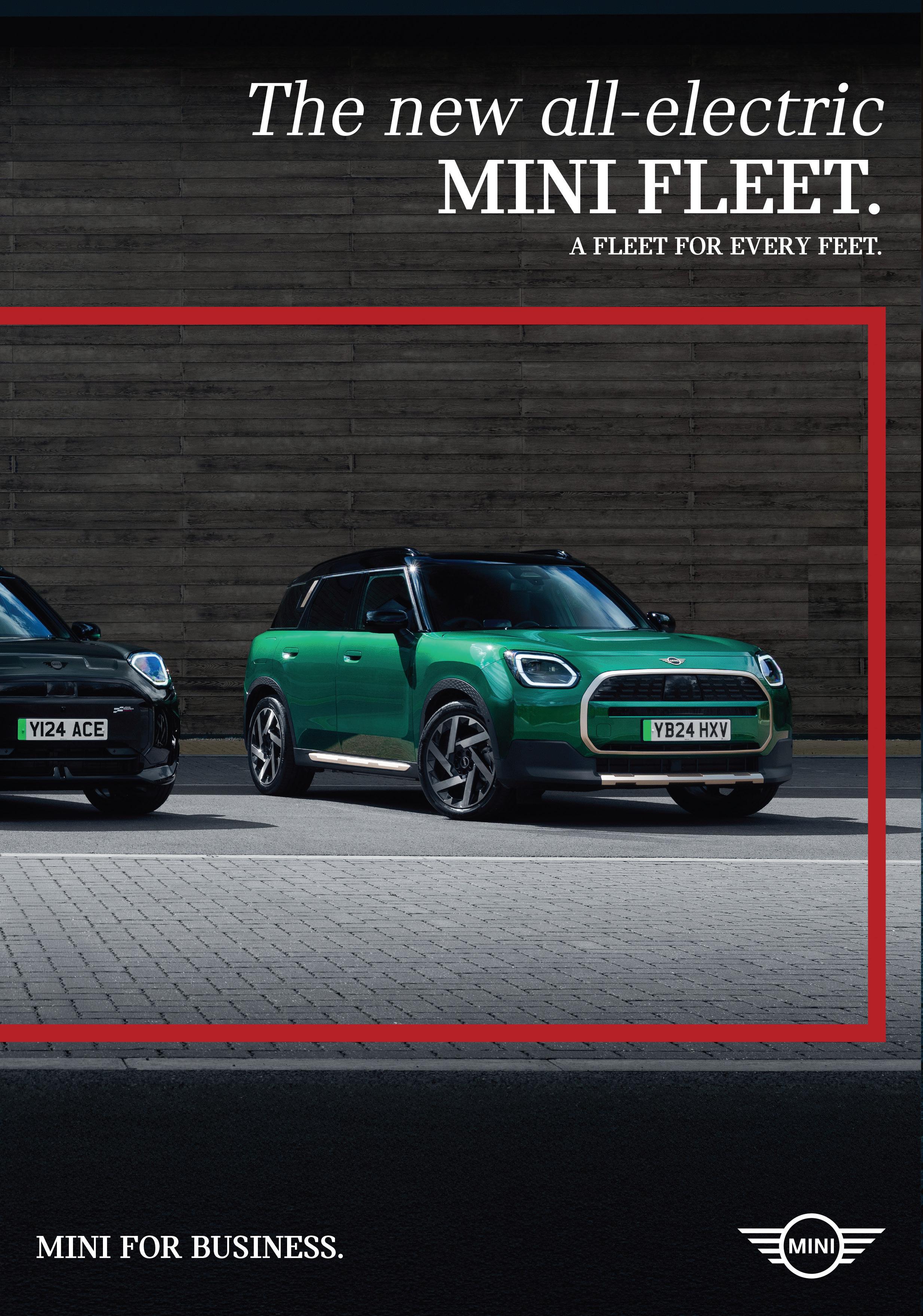
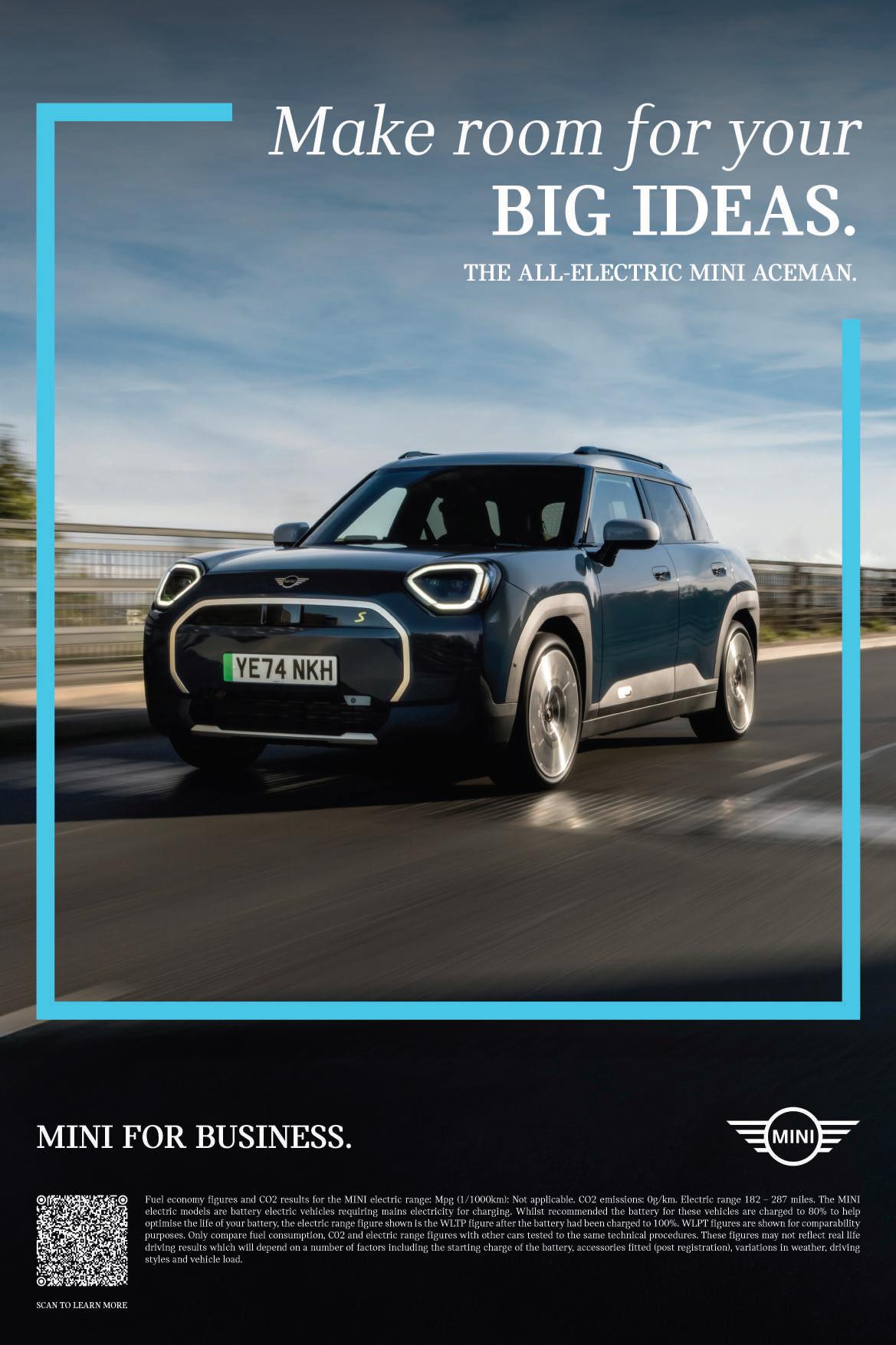




Electrics dominate the CV Show limelight
BACK in April, Birmingham’s NEC played host to the CV Show, and Company Car & Van was there to check out the new vehicle launches – most of which were, unsurprisingly, electric focused.
Renault, Ford, Isuzu, Farizon, Renault Truck, Flexis and Kia were the principal manufacturers in attendance, and from page 24 we highlight the Show in greater detail.
BMW and Mini were our joint winners of the CC&V Fleet manufacturer of the Year. In this issue we take a look at the smallest electric Mini, the Cooper, and discover a small electric car that comes with a sprinkling of pzazz.
Continuing the electric theme, we review Citroen’s new cute-as-can-be ë-C3, and our 2024 Car of the Year really did deliver. Chinese brand BYD launched the SEALION 7 SUV recently and we get behind the wheel of this electric competitor.
The JEEP Avenger was our 2024 Small Electric Car of The Year and it is spearheading a Jeep sales charge, with in one-in-four of these tough off-roaders currently sold as electrics. And we also take to the road in Kia’s updated EV6, report on MG’s S5 EV and Vauxhall’s Grandland Electric, and there’s a review of a potential future award-winner, the Skoda Elroq. Plug-in tech is not dead though, as we found

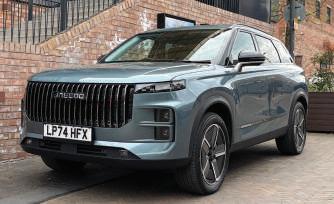
out in the new JAECOO 7 SHS, another new Chinese entry that aims to offer a premium experience at an economical price. Our first impressions are positive.
And we have conversations with two manufacturers: Skoda’s Nick O’Neill tells us more about the all-new Elroq, and Copra’s Martin Gray waxes lyrical about the Spanish brand’s plans for the Tavascan and Terramar.
On the commercial front, we drove the Volkswagen Transporter diesel and discovered much to like. Mercedes-Benz’s smallest van, the Citan, in electric form, is also on test this month, as is the Maxus eDeliver 7, an electric medium size van that’s offered in plenty of formats, with two batteries and a 200-mile range. And back at the CV Show Isuzu also launched a couple of new diesel models, the AT35 and Huntsman, which we take a look at.
Regular contributors Rolec supply us hassle-free with their new EVO wallbox, while Vanaways continue to rewrite the LCV sales handbook.
And finally we find out more about three of our advertisers: Fish Brothers Nissan in Swindon, Rivervale Maxus in Brighton and Culverwell’s Isuzu in East Sussex.
Plenty to read as summer approaches. Andrew Walker, Publisher
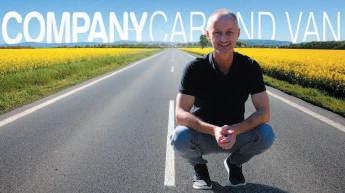
Walker Advertising & Marketing Ltd 12 Oakwood Lane, Bowdon, Cheshire WA14 3DL t: 07734 264735 e: andrewmaxwalker@icloud.com w: www.companycarandvan.co.uk
Follow us at twitter.com/andrewmaxwalker and www.linkedin.com/in/companycarandvan Although every effort

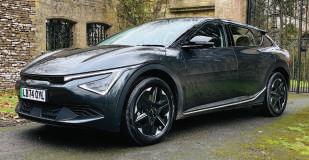

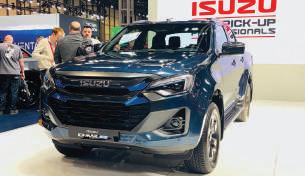

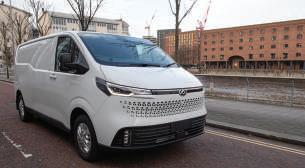

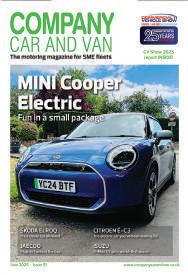
Charging points have EVOlved
ROLEC has been manufacturing and supplying affordable electric vehicle charging stations to families and businesses globally for over 17 years. Eight years ago Company Car & Van had its first EV charger supplied and installed by Rolec, and three years ago this was updated to a new Rolec smart charger.
The charging industry doesn’t stand still and at the beginning of 2025, Rolec launched a new version, the EVO, a product designed to be sophisticated as well as cost effective. It’s also smaller than Rolec’s previous chargers and was an obvious choice for CC&V when we updated our chargepoint again in April.
Tell me more?
EVO features a highly modular design with three key components: a base, a click-in module, and a cover that provides easy access for installers. This practical and efficient design allows for quick, hassle-free installation and configuration in our case, in under two hours.
Available in 7.4kW and 22kW models, it offers an easy-to-use, fully compatible charging solution for all EVs and PHEVs. But more than that, it is a powerful and compact charger that makes itself at home in any setting. It is equipped with a passive cooling system that uses an aluminium heat sink to guarantee a safe maximum charging rate, and a customisable LED indicator that displays clear charging status, providing personalisation and enhanced accessibility.
It also looks great, winning the Red Dot Award for Product Design 2024.
Smarter, more efficient charging
Supporting dynamic load balancing as standard and three-to-one phase switching, the unit can adjust its charger output based on your property’s available electricity usage, preventing grid overload, optimising energy use and protecting your power supply, for easy charging and peace of mind.
With three charging modes – Charge Now (plug & go), ECO (solar + grid), and ECO+ (surplus solar only) – EVO offers flexibility to suit your lifestyle.
All of this comes with a price of just £375 + VAT.
Solar charge
With the ECO+ smart solar feature, EVO can detect and allocate surplus solar energy generated from your home to charge your electric vehicle, creating an opportunity for zero-cost charging.
Native EVO app
After installation of our new EVO at CC&V,


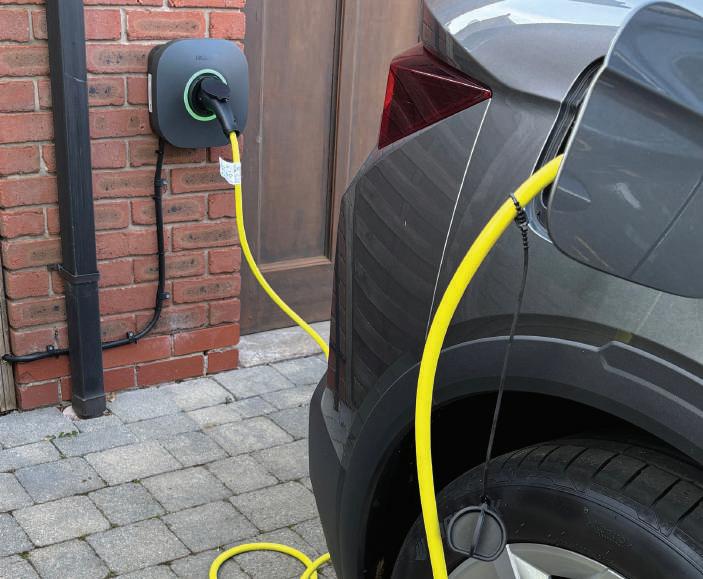
“The EVO’s practical and efficient design allows for quick, hassle-free installation... and it looks pretty cool, too, which many customers will appreciate...”
we simply downloaded the EVO app onto our iPhone which then connected to the charger via our Wi-Fi.
The app is incredibly useful, allowing you to receive live updates on charging sessions, easily plan your journey with the scheduled charging feature, and integrate smart tariff’s to use off-peak rates.
Alternatively, as with all Rolec units, users can opt to connect their charger to any OCPP-compatible app of their choice.
Warranty
Rolec is so confident in its product that it is providing customers with an extended five-year warranty. Units are available now, with next-day delivery in the UK.
Fitting
Rolec has a national network of charge point fitters and Stockport Electrical, who fitted our previous Rolec charger, did the honours again.
To say it was hassle-free is an understatement. Not only did engineer John explain the process from beginning to end, it was all finished with a minimum of fuss.

The finished installation looked neat and tidy on our garage wall. The EVO also looks cool, something many customers will appreciate as well.
Find out more about our fitters at https://www.stockportelectrical.co.uk/
How is the EVO faring?
We’ve had the EVO for a month now and so far, so good. As we have a different vehicle every week, both cars and vans which we review for this publication, the EVO is in use whenever we are driving an EV or PHEV. We’ve set the charger to come on at midnight until 5am when our electricity provider offers an off-peak rate of 8.99p a kWh, so five hours of charging costs just £3.33 and adds 37kWh of charge.
Our thoughts
This is our third Rolec charger and we would have no hesitation in recommending Rolec to all Company Car & Van readers. Its customer services team is extremely helpful and provided a quick solution in the one and only time we contacted them in the past eight years!
Whether you’re looking at just one or multiple charging solutions, Rolec managing director Frankie Mellon and the team should be your first port of call.
For more on Rolec:
T: 01205 724754
E: fleetcharging@rolecserv.co.uk
W: www.rolecsev.com
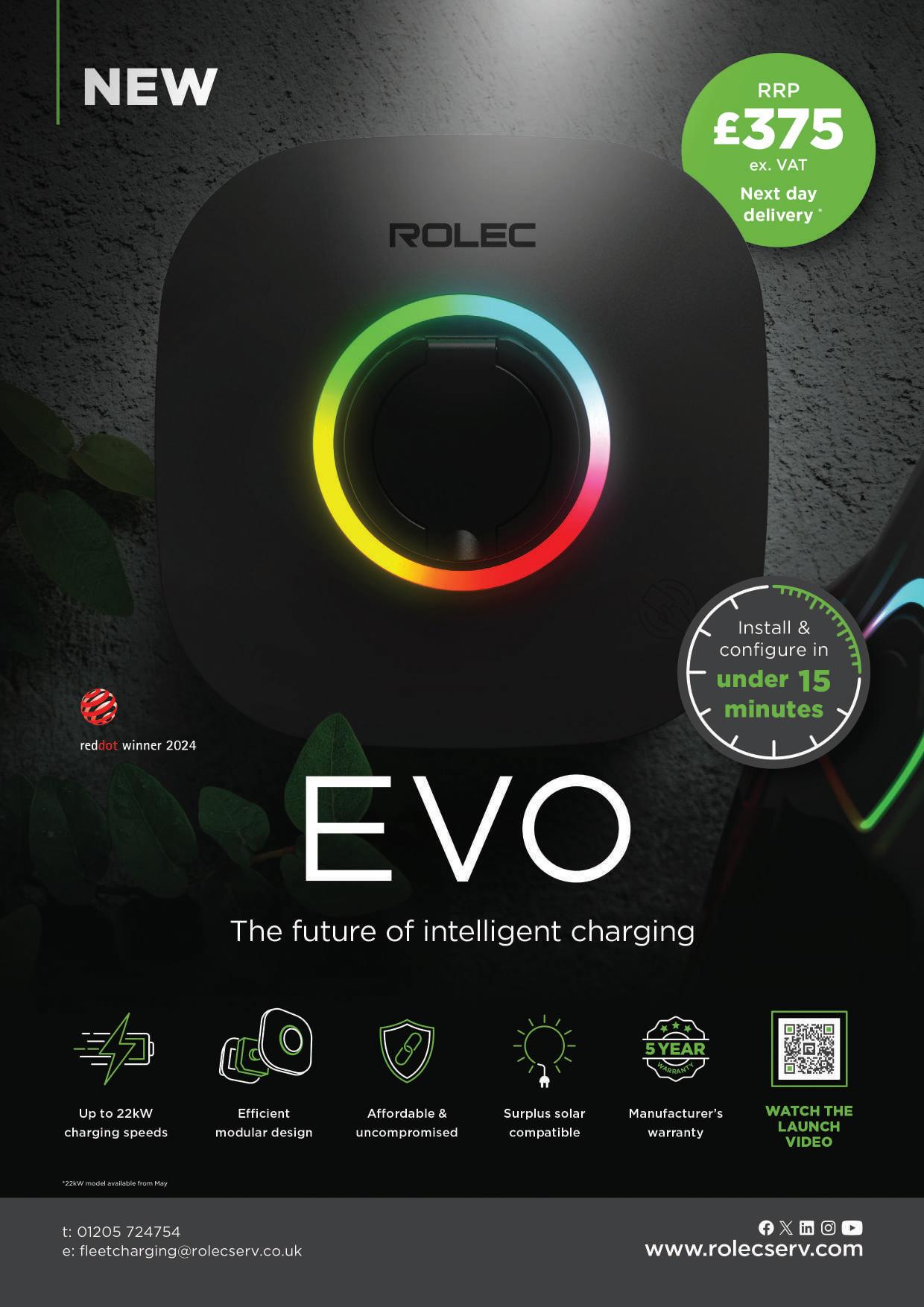
We’ve come a long way, but Skoda has plans to do so much more
Way back in the early noughties we did our first campaign with Skoda fleet as they targeted driving schools with the Fabia. Fast forward 25 years and it’s fair to say that things have moved on a long way for the Czech brand, which now has a proven track record in every sector, including fleet. 2025 is another important year for Skoda with the launch of the electric Elroq and the arrival of a face-lifted Enyaq. In recent years, Skoda has managed the tricky task of making desirable cars that are also value for money. We put some questions to Skoda’s Nick O’Neill, to find out what their plans are for SMEs as both new electric cars enter the fray.
CC&V. With the arrival of the Elroq, you’ve doubled your electric car offering. What are your hopes for the Elroq in the SME company car sector and do you think it can be your electric best seller?
Nick O’Neill: The arrival of the Elroq really broadens our electric offering – it’s a more compact, affordable EV SUV that opens up a bigger part of the market for us. The response so far has been fantastic: it’s already picking up awards and performing well beyond what we initially expected.
Looking ahead to 2025, SMEs are a big focus for us. We’re about to launch a nationwide CRM programme aimed at SMEs, with electric vehicles right at the heart of it. It’s not just about the cars, it’s about helping businesses understand the tax advantages and running cost benefits of going electric.
We know EVs aren’t the perfect fit for every company just yet, but with 2030 approaching fast, we want to be right there supporting SMEs through the transition. With our growing EV and PHEV range, we’re confident we’ve got the right options to meet a wide range of needs.
And in true Škoda fashion, we’re not just here to sell—we want to be a real partner to businesses, making the move to electric as smooth and straightforward as possible.
CC&V: The Enyaq is our current SUV Car of the Year and for good reason. It’s just been updated for 2025. Can you tell us what’s better?



NN: First off, thank you for the award, we really appreciate the recognition.
The most noticeable update is the design. While it’s technically a facelift, it’s a pretty major one. It now features our new Modern Solid design language, which we first introduced with the Elroq. The front end has been completely reworked, giving it a bold, fresh look that marks an exciting step forward for the brand.
Another big plus? We’ve kept pricing stable. Despite all the enhancements, we’ve worked hard to keep the Enyaq competitively priced, with only minimal increases across the range.
In terms of substance, the Enyaq still leads the pack in several key areas. It offers loads of space – 585 litres of luggage room with the seats up, and up to 1,710 litres with them down – making it a great option for those who need more practicality than the Elroq offers.
We’ve also added even more tech as standard: wireless charging, keyless entry, tri-zone climate control, adaptive cruise
“We’re not just here to sell. We want to be a real partner to businesses, making the move to electric as smoother and straight forward as possible...”
control, and an electric tailgate are all included. Plus, it’s available in three powertrain options, including an all-wheel drive version exclusive to the Enyaq, with a WLTP range between 268 and 365 miles.
There’s also more choice than ever - six interior design themes, eight wheel designs, and nine exterior colours—so customers can really make it their own.
With the updated Enyaq and the new Elroq, we’re entering an exciting new era for Škoda. These cars set the tone for where we’re headed, and I couldn’t be more excited about what’s to come.
CC&V: Skoda’s plug-in hybrid iV models have proved popular in fleet, with both Superb & Octavia Company Car & Van winners. With the April increase in company car tax on plug-ins, will corporate sales of plug-ins suffer?
NN: So far, we haven’t seen any real slowdown in corporate or SME orders for our plug-in hybrids, despite the April increase in company car tax.
That said, with some ongoing uncertainty around CO₂ values, we do expect things might start to shift a bit. But for now, our order intake has remained strong.
What’s really encouraging is that demand for our PHEVs has been strong across all fleet channels—not just those influenced by Benefit-in-Kind tax. That tells us they have a broader appeal beyond just tax incentives.
Continued on page 8

Skoda’s Elroq gives rivals and siblings plenty to think about
If you’re a regular reader you’ll already know that at CC&V, we are big Skoda fans. Pretty much everything the company makes is a winner and in almost all cases proves to be more satisfying than the equivalent Audi or Volkswagen. Skoda’s latest electric car, the Elroq, shares the Volkswagen Group MEB platform with models such as the Audi Q4 e-Tron and Volkswagen ID models, and as we found out, yet again Skoda has struck gold.
Tell us more?
We were testing the 60 model in Edition trim which starts from £34,460. Below this sits a 50 model offered in SE trim, a 60 in SE-L trim, while above are the Edition 85, Sportline 60, Sportline 85 and vRS.
The numbers refer to the battery size, so the 50 comes with a usable 55kWh battery and up to 232 mile range, the 60 a 63kWh battery and up to 265 miles of range, and the 85, the 82kWh battery and a range of up to 355 miles.
Performance
Entry model 50 offers 168bhp with 310Nm, whilst the 60 has 201bhp, reaching 62mph in 9 seconds and 8 seconds respectively. The more powerful 85 comes with 282bhp and 545Nm so is quicker to 62mph taking just 6.6


seconds. The vRS will do the 0-62mph sprint in 5.4 seconds.
Specs
The 50 in SE trim features a 13” touchscreen, LED headlights, a 5” digital cockpit, a rear view camera, wireless smart link, Speed assist, Advanced driver attention and drowsiness monitor and emergency turning assist.
SE-L adds SatNav, heated front seats and

steering wheel, front and rear parking sensors and drive mode select. Edition, our test car, goes further with dark chrome roof rails and window surrounds, wireless charging with air cooling, keyless entry with walk away locking, rear USB C inputs and adaptive cruise control.
Next up is the Sport Line with matrix LED headlights, rear LED headlights, front sports seats, a three spoke steering wheel, regenerative braking paddles, aluminium pedals, suede effect seats and an electric
In conversation with... Nick O’Neill, Skoda UK
Continued from page 6
We’re still fully committed to PHEVs as part of our drivetrain strategy. It’s clear there’s still a strong role for plug-in hybrids to play, especially as businesses look for flexible, lower-emission solutions during the transition to full electric.
CC&V: If an SME is considering an electric Skoda, you have an in-house fleet team. How do they help customers transition into an electric car?
NN: As I mentioned earlier, SMEs are a major focus for us this year, and a key part of that is making sure we have the right people in place to support them through the switch to electric.
In the second half of the year, we’re doubling the size of our virtual account team to better support SMEs across the country. At the same time, we’re investing in training for our local business development managers, equipping them with the
knowledge and tools they need to guide customers through the transition.
We understand that issues like taxation, charging infrastructure, and overall cost management are top priorities for SMEs, and we know many businesses need tailored advice to make the right decision. Whether you’re running a small five-car fleet or managing a growing operation with 50 vehicles and plans to scale, we have experts both at head office and within our retailer network who are ready to help.
And because we’re a well-established manufacturer with a strong local service network, we can also provide the aftersales support SMEs rely on to keep their businesses running smoothly.
CC&V: Your range has proved incredibly successful with national fleet and public sector company car sales. Looking ahead, where would you like Skoda to be in terms of sales into the SME fleet sector?
NN: We definitely want to grow in the SME fleet sector, it’s a key part of our strategy, going forward. Right now, our share of SME fleet is roughly in line with our overall market share, but we see a real opportunity to expand, especially as more businesses transition to electric.
With an expanding range of EVs and plug-in hybrids, plus a growing network of Fleet Business Centres and a dedicated sales team, we’re in a strong position to support that growth.
We’ve built a proposition that we believe really works for SMEs - reliable, efficient vehicles backed by a team that understands their needs.
More than anything, we focus on keeping that human touch. We know that for SMEs, having a genuine relationship with a brand matters, and we’re here to be more than just a supplier. We want to be a trusted partner as they navigate the next few years of change.
boot with virtual pedal. The range-topping vRS finishes things off with 20” alloys, AWD, metallic paint and dynamic chassis control.
Outside
A familiar SUV shape greets you, with Skoda logos front and rear, narrow front and rear lights and smooth lines along the sides.
Inside
The cabin design is largely the same as the larger Enyaq. So you get a stubby gear selector on the centre console, a large central touchscreen, a line of shortcut buttons lower down with the smallish 5” digital cockpit in front of the driver.
Build quality is excellent with our test car’s ‘Lodge’ styling both tactile and neat, with orange stitching and seat belts. Seat and door finishes are in subtle greys and again, are all nicely put together.
Cabin practicality
It’s all very typical and well thought out by Skoda, with a large glove box and front door pockets plus a size adjustable twin drinks holder, wireless charging pad, storage in the centre binnacle and under armrest storage. In the rear you get front seat back pockets, twin USBs and good sized rear door pockets
There’s excellent head and legroom, even in the rear, and room for five as well. From the driver’s seat the all-round view is good and the rear view camera is a great addition.
Boot space
It’s practical, offering 470-1,580 litres, with space underneath to store two charging cables. You also get some corner shelves and dividers providing additional storage, a storage net that hangs beneath the adjustable parcel shelf, which would be a useful place to put a charge cable if the boot is full, plus Skoda’s clever door-hidden umbrella and in the boot their ice scraper/ tyre-depth gauge. It adds up to making the Elroq supremely practical.
Infotainment
All very easy to work and live with. Elroq doesn’t feature the ICE model’s Smart Dials though, so you have to utilise the shortcut buttons to adjust some functions, but these are extremely logical. The screen homepage is customisable, so drivers can add widgets for their most used functions.
Climate controls sit at the bottom of the screen while Wireless Apple CarPlay and Android Auto feature as standard. The screen graphics are bright and clear and the whole set-up is very good.
Charging and regeneration
The 50 comes with a maximum charging speed of 145kW, so to 80% top up on a rapid charger takes as little as 25 minutes. We utilised our all-new Rolec EVO home charger to add 38kWh overnight in hours for £3.30,

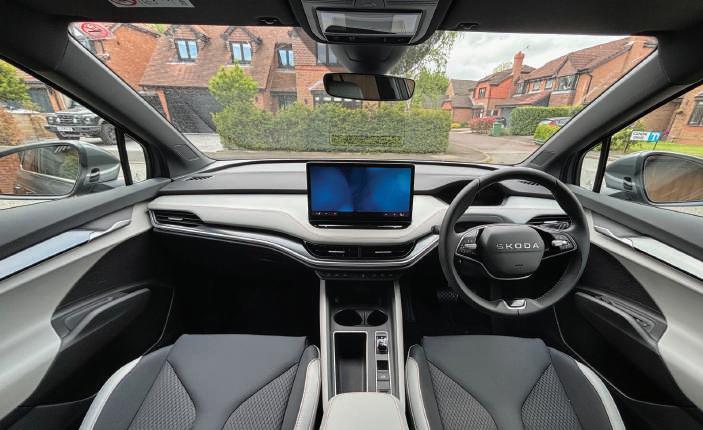
where we have a 9p/a kWh five-hour window between midnight and 5am.
The Elroq 60 has a 165kW charging speed so the bigger battery can take as little as 24 minutes to charge to 80% on a rapid charger, while the 85 peaks at a 135kW charging speed so it will take as little as 28 minutes to do the same.
Our week in the Elroq 60 saw us averaging 3.8 miles per kWh. Most of this was spent on local urban driving, but a couple of 40-mile motorway jaunts at 70mph saw that figure fall
“The Elroq doesn’t just look and feel solid, it drives solidly as well. This is... one of the better EVs as far as refinement is concerned”
slightly. Fully charged in a warmish May the 60 was indicating a 220-mile driving range.
Driving
The Elroq doesn’t just look and feel solid, it drives solidly as well. This is an electric car that is well judged and one of the better EVs as far as refinement is concerned.
The ride isn’t over firm, so rear seat passengers won’t complain. The steering is nicely weighted and precise and the small 9.3m turning circle makes parking easy.
On a series of winding roads between Chester and Fordham Hill, the Elroq stuck to the road like glue, and when we encountered some steeper inclines, the 60 had the punch to handle them with aplomb.
Away from the motorway, we left the regeneration B function on and while it does add a bit of weight to the accelerator pedal it’s really not that intrusive. It also adds some extra range, especially if, as we did, you find a hill to drive down slowly.
In town the Elroq is quiet and composed with enough power on tap to nip in and out of traffic in the city as required. Parking, as we’ve mentioned, is easy and we’d be hard

pressed to think of an easier mid-sized SUV to drive in an urban environment.
On the motorway we selected adaptive cruise control and let the car do the work. Some wind and road noise enters the cabin, partly due, we think, to our test car being fitted with larger 20” alloys.
Be aware that the brakes are quite soft but when once engaged, they bring the Elroq to a halt quickly. Turning off Lane Departure and Speed Warning is simple, via the far left icon under the touchscreen. On a few occasions the Collision Warning sound came on as we passed parked cars. Typical of many modern cars, this is over sensitive.
Outperforms rivals the Kia EV3, Hyundai Kona Electric and Renault Scenic as far as quality is concerned, with a similar ride and feel to the Kia. The Renault offers a crisper drive, but it’s a much better all-rounder than the Hyundai and the VW ID.3 or 4 as well.
Pros
Beautifully built and well thought-out. A good range of battery sizes and specs cater for all. Some clever storage solutions and Skoda’s new ‘Theme’ interiors lift the cabin above the norm. Entry level 50 offers C-SUV practicality at a B-SUV price.
Cons
The 50 and 60 driving ranges, although par for the course, may be too low for many, which means you may be looking at spending almost £5,000 more to get into an 85.
CC&V VERDICT
The Skoda Enyaq was our SUV Car of the Year. If the Elroq had been out in late 2024 when we judged our winners, we have a sneaky suspicion it would have won instead. For company car drivers we’d recommend the 60 Edition or SE-L as the ones to choose, while remembering that all versions sit at just 3% BIK.
CC&V RATING: N N N N N




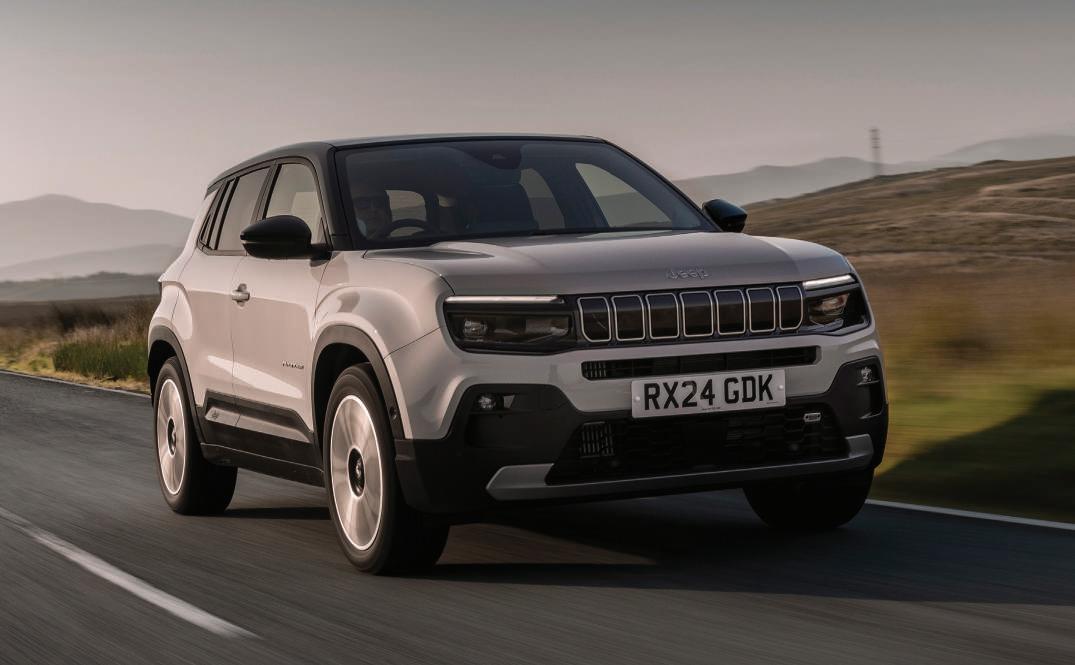
Avenger hits the streets as Jeep goes full throttle on electrics
Over a quarter of Jeep models sold so far this year have been pure electric
THE Jeep philosophy of ‘Go Anywhere, Do Anything’ continues to resonate with UK buyers, with 4,080 units sold year-to-date. The last month of Quarter 1, March, proved to be a particularly strong period for the brand, with a 59% increase in sales compared with the same month in 2024.
The fully-electric Jeep Avenger remains a popular choice, being responsible for over 25% of all Jeep models sold so far in the UK in 2025. This has resulted in electric sales increasing 24% compared to the first quarter of last year.
The Jeep Avenger is the first 100% electric SUV from the brand and is also available as a manual petrol and e-Hybrid version, featuring automatic transmission combined with an efficient 1.2-litre petrol engine, developing 100hp.
The Avenger line-up has now been boosted by the introduction of the Avenger The North Face Edition. This is complete with a 4xe
hybrid powertrain to make it the most capable Avenger in the range.
With the Avenger range complete, the brand momentum will continue with the introduction of the all-new Jeep Compass.
To support this growth Jeep is looking to expand its network to include 60 retailers by the end of the year, enhancing the customer experience and making it easier to experience the brand.
Kristian Cholmondeley, Jeep UK managing
“Jeep is the authentic SUV brand, delivering legendary off-road capability, interior refinement, high-tech features, and versatility.”
director, said: “Following the strong growth in 2024, the momentum has continued in 2025 with a sustained increase in sales across the range and electric cars making up more than a quarter of all Jeep UK sales.
“With the introduction of new Avenger variants and new models set to join the Jeep range we are optimistic that the enthusiasm
for our ‘Go Anywhere, Do Anything’ ethos will continue.”
Jeep - The powerhouse brand
Built on more than 80 years of legendary heritage, Jeep is the authentic SUV brand, delivering legendary off-road capability, interior refinement, high-tech features, and versatility.
The Jeep brand delivers an open invitation to live life to the fullest by offering a broad portfolio of vehicles that continues to provide owners with a sense of safety and security to handle any journey with confidence.
Jeep Wave, a premium owner loyalty and customer care programme that is available to the entire Jeep 4x4 line-up, is filled with benefits and exclusive perks to deliver Jeep brand owners the utmost care and dedicated 24/7 support.
The legendary Jeep brand’s off-road capability is enhanced by a global electrification initiative that is transforming 4xe into the new 4x4 in pursuit of the brand’s vision of accomplishing Zero Emission Freedom and added 4x4 capability.
All Jeep brand vehicles now offer an electrified variant.


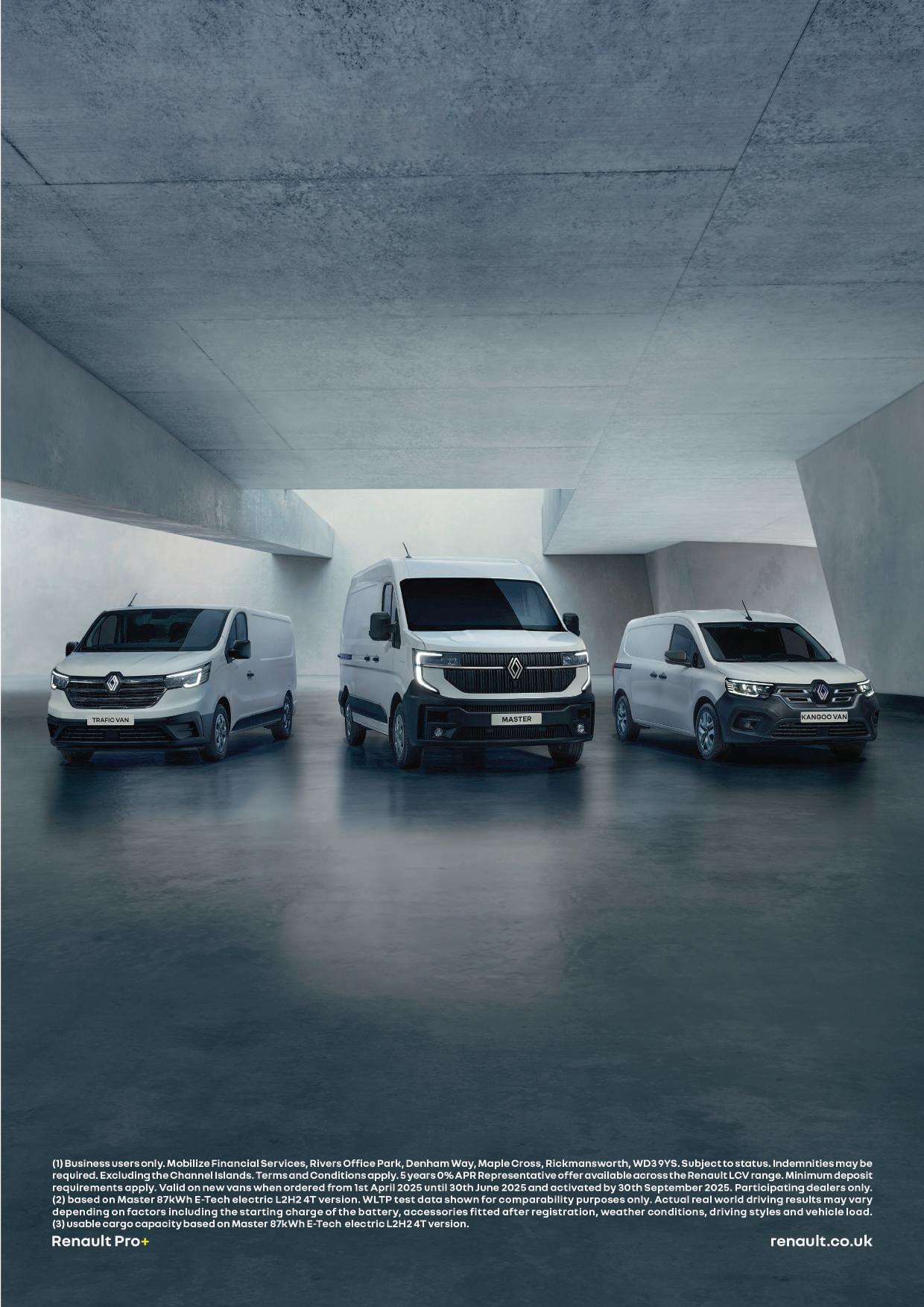
MG committed to setting new EV standards as the S5 takes a bow
MG’s new S5 EV is setting new standards in the SUV electric vehicle segment, offering all the critically-acclaimed attributes of the highly-popular MG4 EV while advancing the driving experience and providing a spacious, premium cabin ambience.
Three MGS5 EV models are being offered. The MGS5 EV SE Standard Range, MGS5 EV SE Long Range and the flagship MGS5 EV Trophy Long Range.
Each MGS5 EV firmly underlines MG’s commitment to offer customers seeking to drive electric with market-defining value. The SE Standard Range is available for £28,495 OTR, SE Long Range at £30,995 OTR and the most generously-equipped Trophy Long Range completes the line-up at £33,495. The MGS5 EV is supported by a 7-year/80,000 mile MG warranty.
Inside the new MGS5 EV: Spacious, versatile and stylish
With its advanced MG Modular Scalable Platform and ultra-thin 110mm Horizontal Cell Design, the MGS5 EV is not only a highly rewarding driver’s car but has the capacity to be a spacious, highly versatile as well as comfortable SUV.
Four adult occupants, with plenty of room for luggage, can be comfortably accommodated.
There’s 1026mm of headroom for front seat occupants and 967mm passengers in the rear, with a 60:40 split fold as standard in the rear. Numerous storage spaces have been created across the cabin and boot space is amongst the best in class. There’s 453 litres standard boot space but with the rear seats folded this increases to 1,441 litres. A two-stage boot floor provides further flexibility and additional features include a boot hook, mesh pockets and anchor points. A smart, electric tailgate is also provided.
A centrally positioned 12.8” HD touchscreen – with enhanced graphics and even faster response times – provides a sophisticated focal point. Additionally, physical buttons – requested by many MG customers – are available to control main functions such as Audio Control, HVAC, Hazard Warning lights and demisting and also features a Home Button. Quick and extremely simple to operate, these manual controls avoid driver distraction and offers greater choice. A 10.25” HD digital drivers display completes the line-up.
The interior space of the MGS5 EV is designed to impress, with the introduction of a wide range new materials including soft touch plastics and stylish touches like the wireless phone charger finished in a suede


style material. The MGS5 EV Trophy seats are finished with dual tone grey leather-style with the MG pattern embossed on the seat strips. MG’s highly distinctive, six-sided steering wheel design – first featured on MG4 – adds a stylish touch.
New technology to entertain, inform and enhance safety
The MGS5 EV provides an extensive suite of accessible and effective new technology. This includes iSMART which offers fast, smart and convenient interaction between driver and vehicle via a mobile device.
The package includes the ability to lock and unlock MGS5 EV, find the parking location, pre-start the climate control ahead of your journey, create travel plans and check key information such as available driving range, battery charge status and tyre pressures. iSMART is a standard offering for all MGS5 EV models.
The centrally positioned High Definition 12.8” touchscreen comes with wireless connection to Apple CarPlay and Android Auto.
MGS5 EV: powerful, dynamic and efficient performance
MGS5 EV is the second MG model to be built on the highly-acclaimed Modular Scalable Platform (MSP). First introduced on the award-winning MG4, this platform is specifically designed for EVs with a lightweight chassis improving electric range and driving dynamics. Rear wheel drive with 47:53 weight distribution, as well as a rear Five-Link suspension, further enhances this MG’s ride and handling.

A high-performance electric drive system, efficient and compact, delivers maximum power of 170kW and maximum torque is 350Nm. Full torque can be delivered in under 50 milliseconds which supports some impressive acceleration across the range. On the SE Long Range 0-62mph can be achieved in just 6.3 seconds.
The introduction of five drive modes gives the MGS5 EV driver even greater choice to suit every road condition or simply drive their way. Normal, Sport, Comfort, Snow and Custom now feature.
Smart efficiency to optimise range has been developed for the MGS5 EV, new bearings reduce rolling resistance by a further 25 percent over previous models and the combination of an Integrated Braking System and Kinetic Energy Recovery System (KERS) can recover energy from deceleration.
MG’s new SUV is equipped with two battery options, a 49kWh option for the SE Standard Range and 64kWh for SE Long Range and the Trophy Long Range. The 64kWh battery provides a combined driving range of 298 miles on the SE Long Range and 288 miles for the Trophy Long Range. An Innovative adaptive pressure control system maintains optimal pressure levels to extend battery life.
Charging performance for both the 49kWH and 64kWh batteries means a minimum of downtime with Rapid Charging (10 to 80 percent) of the 49kWh battery taking just 24 minutes.
The larger 64kWh battery can be charged in 28 minutes. Maximum DC charging is 120kW for the 49KwH battery and 139kW for the Long Range 64kWh battery.



CUPRA’s on the march!
CUPRA has made great strides in recent years, with a growing reputation for its stunning cars backed by great sales figures, too. Martin Gray, CUPRA UK’s National Fleet Sales Manager, spoke to Company Car & Van about the next steps in the company’s ambitious plans
CC&V: You’ve just launched the Tavascan, your second electric model. How has it been received so far and are you aiming for fleet sales with this model?
Martin Gray: So far, the response to the arrival of the Tavascan has been fantastic. It’s made a big impact in such a short space of time. As an all-electric SUV Coupé, it ticks so many boxes – not just from a fleet manager perspective, but also from a company car driver point of view.
It’s one of those rare vehicles that genuinely delivers in every area, offering every benefit of an all-electric powertrain, which is made even more compelling thanks to its unmistakable design, thrilling performance, brilliant practicality and stand-out tech.
CC&V: You’ve also just launched Terramar which comes with conventional ICE powertrains and as a plug-in hybrid. It’s a large SUV a popular sector with UK buyers. Are you expecting the PHEV version to make inroads with company car drivers?
MG: Definitely. In recent years, the popularity of SUVs has soared among businesses and their drivers.and the plug-in hybrid variants of the Terramar are perfectly positioned to make inroads.
Firstly, range: up to 76 miles of pure electric range (WLTP) means it has more than enough for most daily commutes. This unlocks Benefit-in-Kind rates of just 6% in 2025/26, making it attractive for company car drivers


and also the growing number of employees leasing vehicles via salary sacrifice schemes.
While Benefit-in-Kind is set to increase for plug-in hybrids, all the signs suggest that there’s very much a place for these powertrains and strong demand among businesses – many of whom want and often need the best of both worlds.
CC&V: SME fleets are now a lot more comfortable with electric cars than when we last sat down with you two years ago. EV range has improved and there are more public chargers to drive the transition. Is there anything specific that CUPRA offers fleet customers (such as EV chargers, access to Telematics) that adds value to ordering a CUPRA?
MG: Whereas for large businesses, electrification is typically a longer term process, SMEs have the ability to electrify at speed – this is something we’re seeing play out.
Of course, their smaller fleets enable this, but so does the decision-making process. Within many SMEs, the fleet decision-maker is often the director or owner of the business, meaning there are fewer stakeholders to manage and fewer layers of complexity.
Even so, we realise that SMEs need support, particularly given the decisionmaker is rarely a dedicated fleet manager. So, along with providing leading EVs, we’ve enhanced and evolved our own proposition


– to the point where we offer the complete electrification solution.
We’re partnered with Ohme and OVO Energy, to help make the transition for company car drivers and, in turn, fleets, more seamless and cost-effective. Every new all-electric CUPRA comes with a free Ohme wallbox (or £700 charging voucher). Drivers who switch to OVO Energy benefit from 2,000 free miles worth of energy up front, followed by 1,000 free miles for the next three years – this is on top of charging rates of 7p per kWh any time of day or night.
In real terms, it means drivers could easily spend more on coffee in a day than recharging their vehicle to full.
Then there’s the knowledge and expertise that CUPRA can provide. We work incredibly hard to ensure our entire fleet team has the skills, information and experience to help businesses make well-informed decisions at every step of their journey.
CC&V: You’ve seen a physical growth in CUPRA fleet sales since 2023. Is this set to continue into 2025 and beyond, and does your dealer network have the capability to support increased CUPRA fleet sales?
MG: The momentum is certainly building here at CUPRA and there’s so much positivity surrounding the brand, our fleet offering and roadmap. We have a more comprehensive range of vehicles than ever before –hatchback, estate, SUV, SUV Coupé – and also every powertrain for every requirement. Our dealer network is well-prepared to support this growth. In recent years, we’ve invested significantly in training, facilities and our aftersales offering. The result is a robust, reliable dealer network ready to meet the ever-changing needs of businesses and their drivers.

“The response to the arrival of the Tavascan has been fantastic...”
CC&V: Back in 2023 you mentioned the electric Urban Rebel Concept to us. Can you tell us any more about it and when it’s likely to arrive in the UK?
MG: This is one to get excited about. Unveiled as the Raval, our all-new urban EV is set to open for order in 2026. It offers everything you associate CUPRA with –electrifying performance, dramatic design, great tech and a stand-out driving experience.
It’s anticipated performance statistics are really promising, too – up to 226PS, up to 273 miles of range (WLTP) and 0-62 times of just 6.9 seconds. My view is that it will make a real mark in the fleet sector, particularly among salary sacrifice drivers. It’s also a key model for CUPRA as we progress towards our ambition of becoming an electric-only brand by 2030.
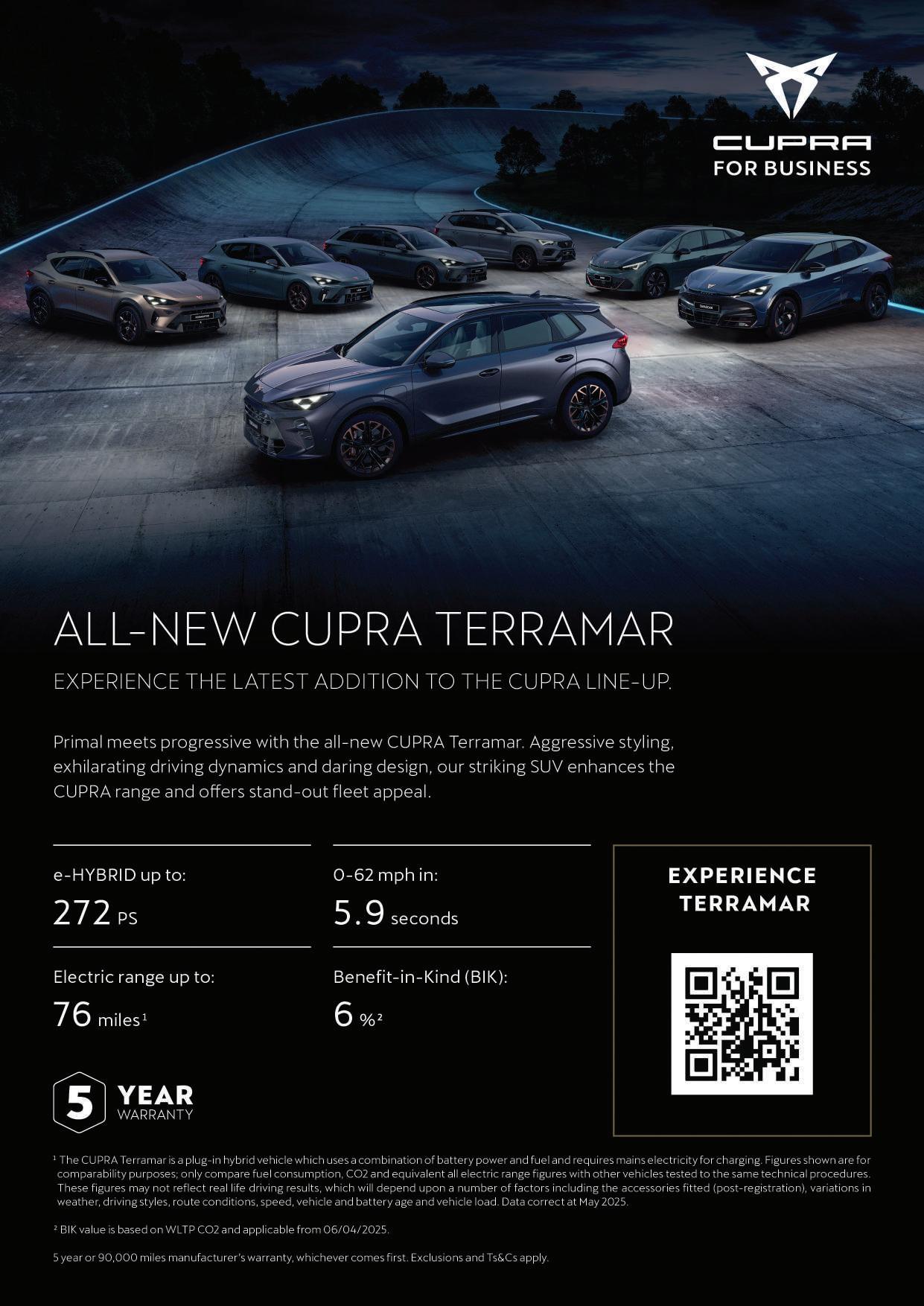


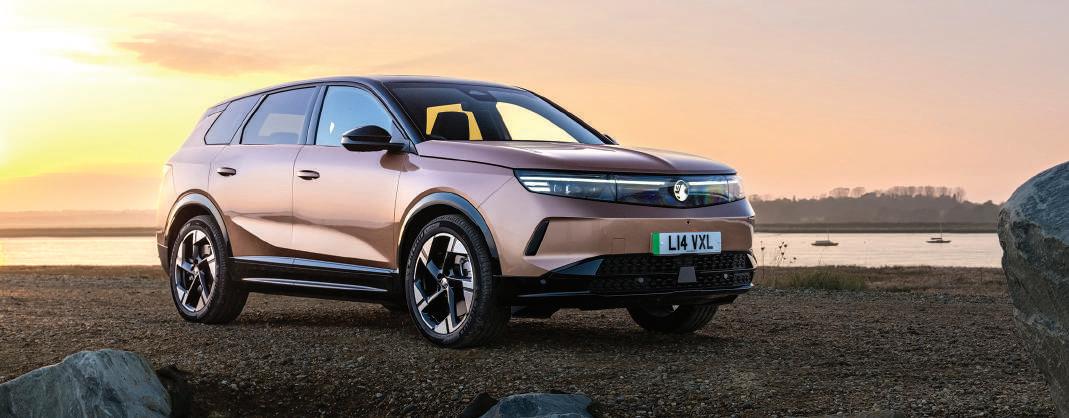
Grandland Electric puts cash back in motorists’ pockets
VAUXHALL has announced revised pricing on the Grandland Electric, with savings of up to £4,700. Design and GS models are both now priced under £40,000, resulting in significant VED savings after the change in tax rules in the most recent Budget.
Prices for New Grandland Electric now start from £37,345 in Design trim, representing a saving of £3,650. GS is priced at £38,495 (saving £4,650), while Ultimate trim sees the largest reduction of £4,700 a new OTR price of £40,495. As a result, both Design and GS trim are now below the £40,000 threshold for the additional ‘expensive car supplement’ rate of VED, which is currently an extra £410 from the second year of ownership.
On top of the lower On The Road (OTR) price, this means customers save £1,640 in VED over four years, equivalent to approximately £40 per month.
The revised pricing also means that the gap between Hybrid and Electric is narrowed – with the expected best-selling GS trim attracting a price walk of just £1,845 between GS Hybrid and GS Electric. In addition, there are the potential ownership cost savings from charging at cheap off-peak energy rates versus petrol costs.
James Taylor, Managing Director, Vauxhall, commented: “Vauxhall is committed to electrifying Britain – we have an electric version of every car and van in the Vauxhall line-up and we are doing all we can to make Britain’s switch to electric simple and attainable for our customers.
“With the new Vehicle Excise Duty rules from April 2025, we are pleased to announce that two of our three New Grandland Electric
versions, representing around an expected 80% of sales, will not attract this new tax –making going electric in our latest family SUV even more attainable”.
New Grandland Electric sits at the top of Vauxhall’s fully refreshed SUV line-up and is the first Vauxhall based on the STLA Medium platform. It features a 73kWh (net) battery, a 213hp motor with 345Nm of torque and energy-saving features such as a standardfit heat pump, enabling a range of up to 325 miles (WLTP) on a single charge. Thanks to 160kW rapid charging capability, a 20-80% charge takes just 26 minutes.
A heat pump that improves efficiency in cold weather conditions is standard across all versions – and is often a chargeable option on rival vehicles.
Plug & Go offer
Like all Vauxhall electric vehicles, New Grandland Electric also benefits from the brand’s Plug & Go offer, powered by Free2move Charge, which includes access to a variety of charging solutions to help make electric mobility even easier.
To simplify home charging, Vauxhall is offering a £500 contribution towards an Octopus Energy Ohme Pro wallbox and installation for customers who buy online. Thanks to Vauxhall’s partnership with Tesco, customers also have the option to choose £500 free charging credit at stores across the country, in lieu of the wallbox contribution. On top of this, retail customers can collect 50,000 Tesco Clubcard points (worth £500) when they purchase a new car through a participating Vauxhall retailer.
To make public charging easier, all new

Vauxhall electric vehicle customers receive an Octopus Electroverse card, giving access to more than 850,000 public chargers across the UK and Europe. In lieu of the wallbox contribution or £500 towards charging at Tesco stores, customers can choose a £500 credit with Octopus Electroverse through Plug & Go.
For added peace of mind, Plug & Go includes a battery warranty for eight years/100,000 miles and three years of roadside assistance as standard.
New pricing across Vauxhall’s electric line-up
The revised pricing on New Grandland Electric follows recent changes across Vauxhall’s electric car line-up, supporting its efforts to make electric mobility attainable for all.
The Corsa Electric is available in Design trim from the new, lower price of £29,045 OTR, with GS and Ultimate versions priced at £31,230 OTR and £33,040 OTR respectively, seeing a maximum reduction of £4,150.
The Corsa Electric Long Range is also available in entry-level Design trim for the first time. Featuring a 51kWh battery and a more powerful 156PS motor for a range of up to 248 miles (WLTP), the Corsa Electric Long Range is priced from £30,440 OTR. The Corsa Electric Long Range prices for the GS and Ultimate trims are £32,625 OTR and £34,435 OTR respectively.
Meanwhile, the Astra Electric Design is now priced at £34,945 OTR, with GS and Ultimate trims priced at £37,240 OTR and £39,395 OTR respectively.
This represents a saving of up to £3,865 on Ultimate trim.
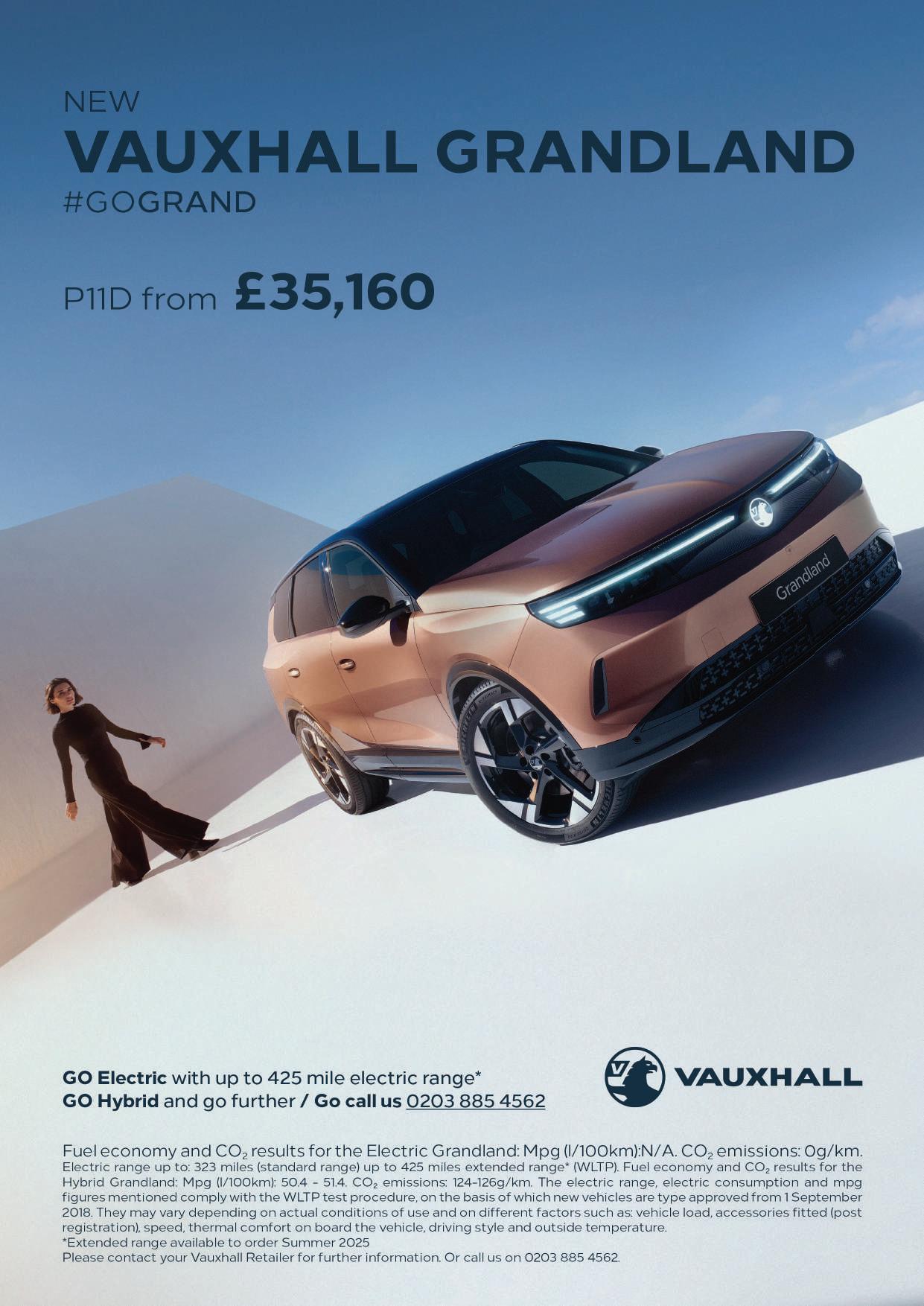


The 25th anniversary of the Commercial Vehicle Show took place at the NEC in April, and Company Car & Van was there on Day 1. More than 250 exhibitors came together to explore the technologies and policies needed to decarbonise road transport, and electric vehicle launches dominated proceedings. With commercial vehicles responsible for 36% of all road transport CO₂ emissions and 12% of the UK’s total, the challenge is immense, but with new electric LCVs launching almost monthly, the manufacturers are heading in the right direction. Here are some of the highlights of the event
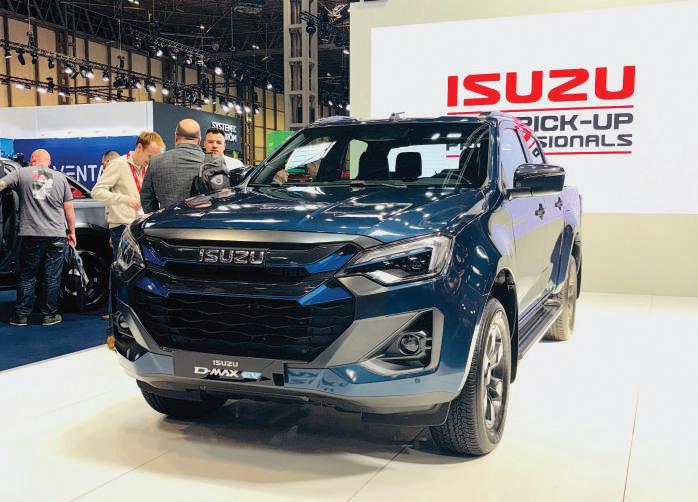
“Three new electric CVs from Renault highlighted where its intentions lay...Trafic, Goelette and Estafette all look like game-changers in the sector...”


Isuzu is a perennial CV Show exhibitor and 2025 witnessed a world first with the reveal of the all-new D-Max EV. With a battery capacity of 66.9kWh, giving a range of 164 miles, it offers over a one-tonne payload, 325Nm of torque and a 3.5-tonne towing capacity. It is a pick-up that delivers commercial capability without compromise and will be available in DL40 and V-Cross trims.




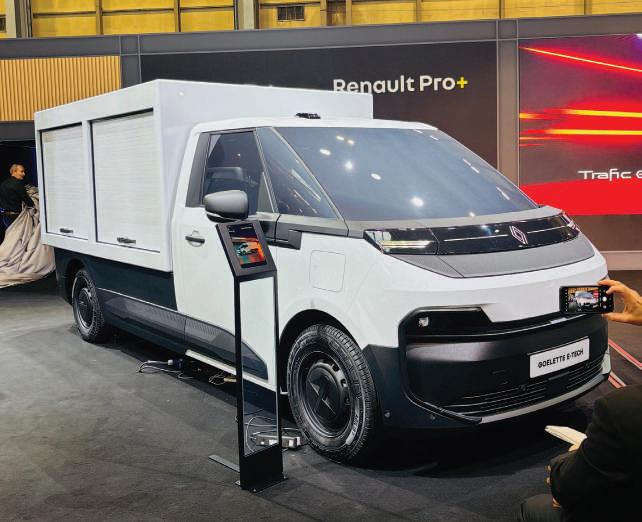
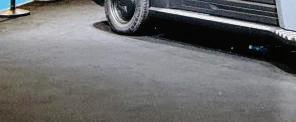

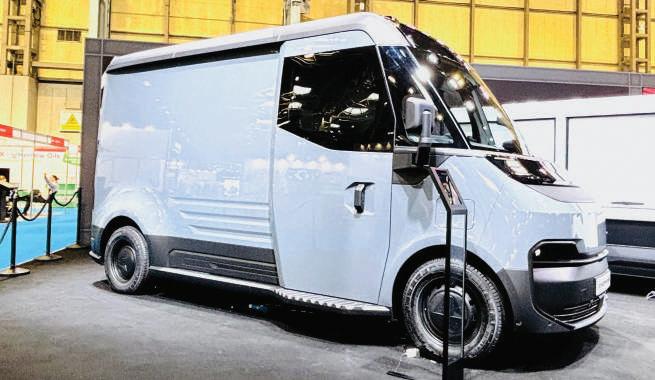



Renault had a trio of highlights at the show, with the revealing of three new electric vehicles: Trafic, Goelette and Estafette E-Tech. They all have two battery solutions that offer a choice of either 218-mile standard range or 280-mile long range. Also on display were the International Van of the Year the Master, new versions of the Trafic and more from Renault’s charging arm Mobilize, which we featured in our August issue.
Isuzu: D-Max world first
Renault: Trio launched


Ford: CV leaders put on a show
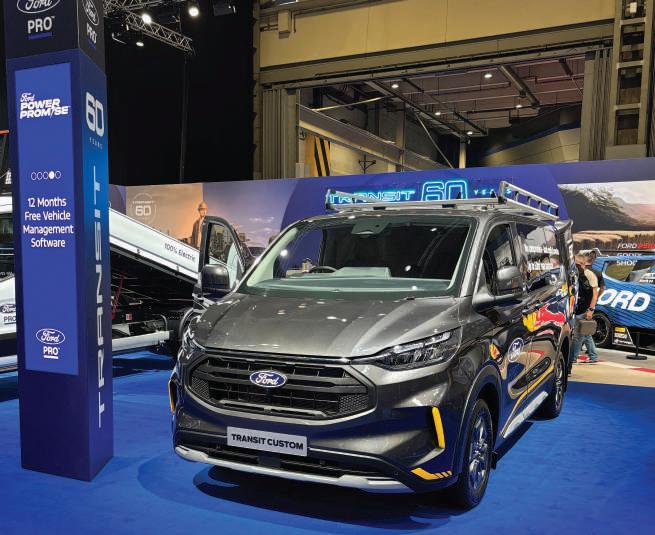
The largest show stand was taken by Ford, where pretty much every conceivable LCV and conversion was on display, including the Ranger pick-up. While there were no new model launches, Ford took the opportunity to announce its Ford Power Promise to its commercial vehicle customers. It’s a package of benefits designed to make switching to electric vans much simpler.
Building on Ford Pro’s home charging, the package provides a discounted home charger costing just £10, or an £825 contribution towards a charging installation at a


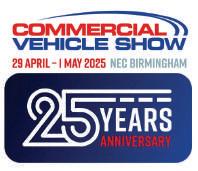
“Kudos to Renault for its innovative internal protection system, which acts as a deterrent against tool theft... the company deserves credit for identifying this real problem for business owners”

commercial premises; free five-year service and roadside assistance plan; eight-year high-voltage battery warranty; 12-month free vehicle management software and access to Ford’s expansive BlueOval Charge Network (BOCN) – all included with the vehicle.

Alternatively, for customers who do not have the ability to install a home charger and don’t need depot charging, a £500 saving on any eligible vehicle purchase will be offered on the Ford E-Transit, E-Transit Custom and E-Transit Courier all-electric vans.
Renault Trucks: Security first

It was a welcome return to the CV Show for Renault Truck, and its stand showcased its latest Master and Trafic models. Another highlight was its innovative internal protection system, fitted by P.D. Stevens, as a deterrent against tool theft. It consists of CAT1 alarm, unique internal securing system and a fully sealed steel mesh internal door system with an internal five-point locking mechanism. The addition of a ‘Safewall’ system that ensures the van panels are almost impenetrable to thieves from the outside. Kudos to Renault Truck for identifying the need and implementing this.
What Vanaways can do for your business (and it’s not just vans!)
AT VANAWAYS, our tagline might be vans without the drama, but we do far more than just sell white boxes on wheels!
Since launching in 2015 we’ve specialised in sourcing and supplying converted vans. We’ve got Luton vans, Low Loaders, Tippers, Dropsides, Curtainsiders and much more.
Need a cage or a toolpod fitted? We can take care of it. Refrigeration units? We have those too. We’ve even provided vans custom-fitted with water jets for sewer and drain clearance. We also stock car-derived commercial vehicles such as the Land Rover Defender 90 and 110, Suzuki Jimny, as well as Ford Rangers and other pick-ups.
So if you need something a bit less ordinary, we’re the right place to get it. We have access to the full market but remain completely independent. This means we have no affiliation to any manufacturer, so we remain fully brand agnostic and won’t push you towards anything you don’t want or need. It also means if you aren’t particularly van savvy or are unsure on your exact requirements, our helpful sales team will be able to guide you towards the perfect solution.
We also offer a simple three-step part exchange process, meaning we can take your


old vehicle off your hands at a competitive price as part of the deal for your new model. Just provide the year, mileage, and a brief overview of the vehicle’s condition.
Earlier this year we also launched Finaways asset funding. Perfect for all of your vehicle financing needs, but so far we’ve also provided funding for agricultural vehicles, a solar farm and even wind turbines!
By taking advantage of asset finance you can free up cash flow. And you can have low monthly payments. The Finaways team are as passionate about helping businesses of all sizes and in all industries find funding for their goals as we at Vanaways are about getting you in the perfect van for your work.


We really are your one-stop-shop to help take your business to the next level. Vanaways. Vans, without the drama. And much, much more.
WANT TO KNOW MORE?
If you want to get more information or a quote on your next commercial vehicle, or fleet upgrade? Call us on 0117 428 7721, or send an email to enquiries@vanaways.co.uk and one of our friendly team will be more than happy to help! You can also visit us online at www.vanaways.co.uk
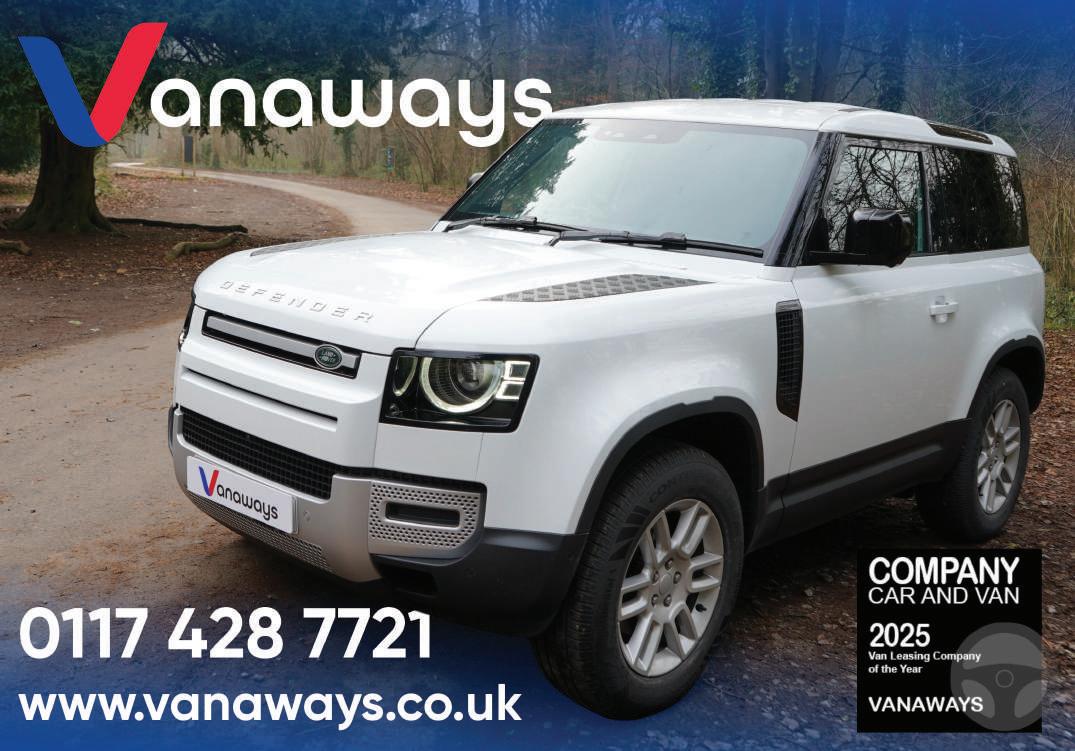


Farizon: Geely’s CV arm flexes muscles
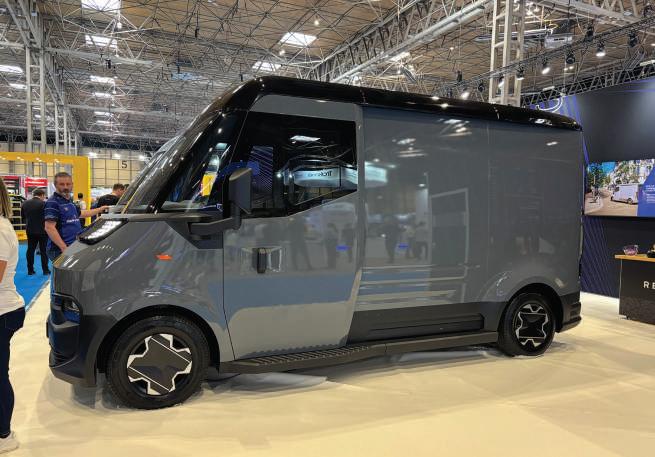
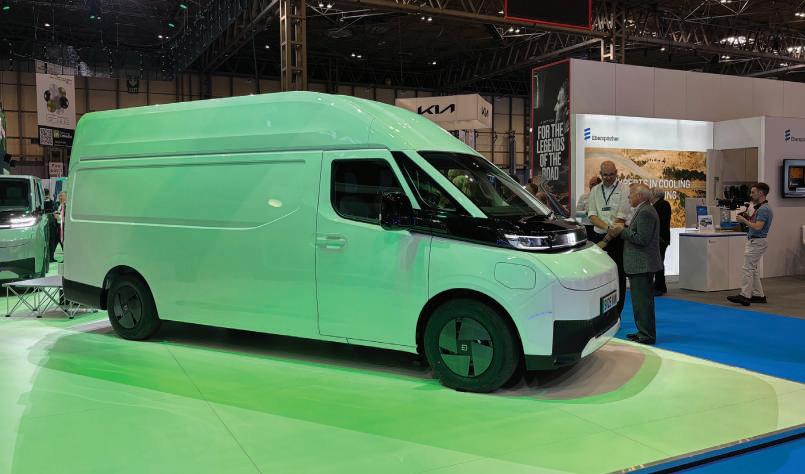
Kia: Car giant dips toe into sector
A familiar name in the car world is Kia, and it has dipped its toe into the electric van market with the launch of the PV5 panel van. It’s available in two grades, ‘Essential’ and ‘Plus’, with two battery options, a 51.5kWh standard range or 71.2kWh long range. PV5 Cargo L2/H1 offers up to 247 miles range with a payload of up to 790kg and a 4.4m3 cargo volume. Chassis and Crew Cabs will be revealed later this year.
Other manufacturers on display included KGM, which is the new name for Korean brand SsangYong. It unveiled the latest KGM-branded versions of the Musso pick-up. Also present were Rexton, with its commercial 4X4, and Ineos, which had the Grenadier Quartermaster and Grenadier Commercial models on display.
A new name to many at the CV Show was Farizon, which showcased its SV large van. It’s offered with a choice of three batteries, 67kWh, 83kWh or 106kWh, a cargo capacity of up to 13m3 and a payload of up to 1350kg. Farizon is the commercial vehicle division of Geely, China’s largest private automobile manufacturer, and looks set to offer operators an excellent range of practical electric vans over the coming years.
Flexis: Set to make its mark
Flexis is another new name in the CV sector, and in partnership with Renault Group and Volvo Group has launched its own range of three eLCVs: the Step-In Van, Cargo Van and Panel Van. All have fast charging capabilities and up to a 280-mile range. Flexis is also developing a portfolio of B2B services to help logistics operators decarbonise. Watch this space for more on this in the coming months.


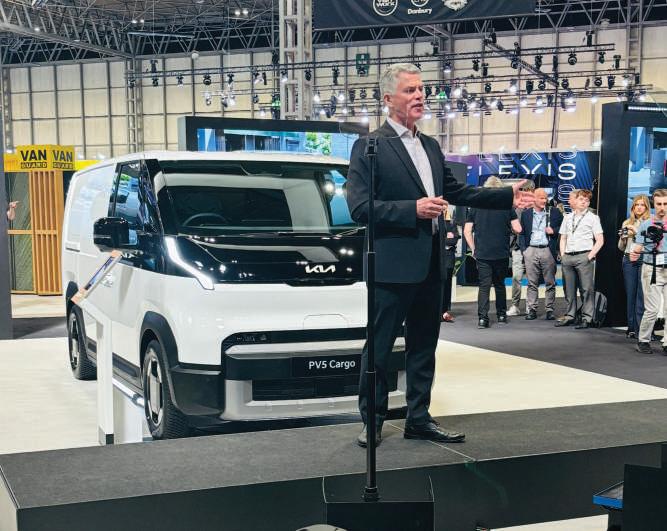
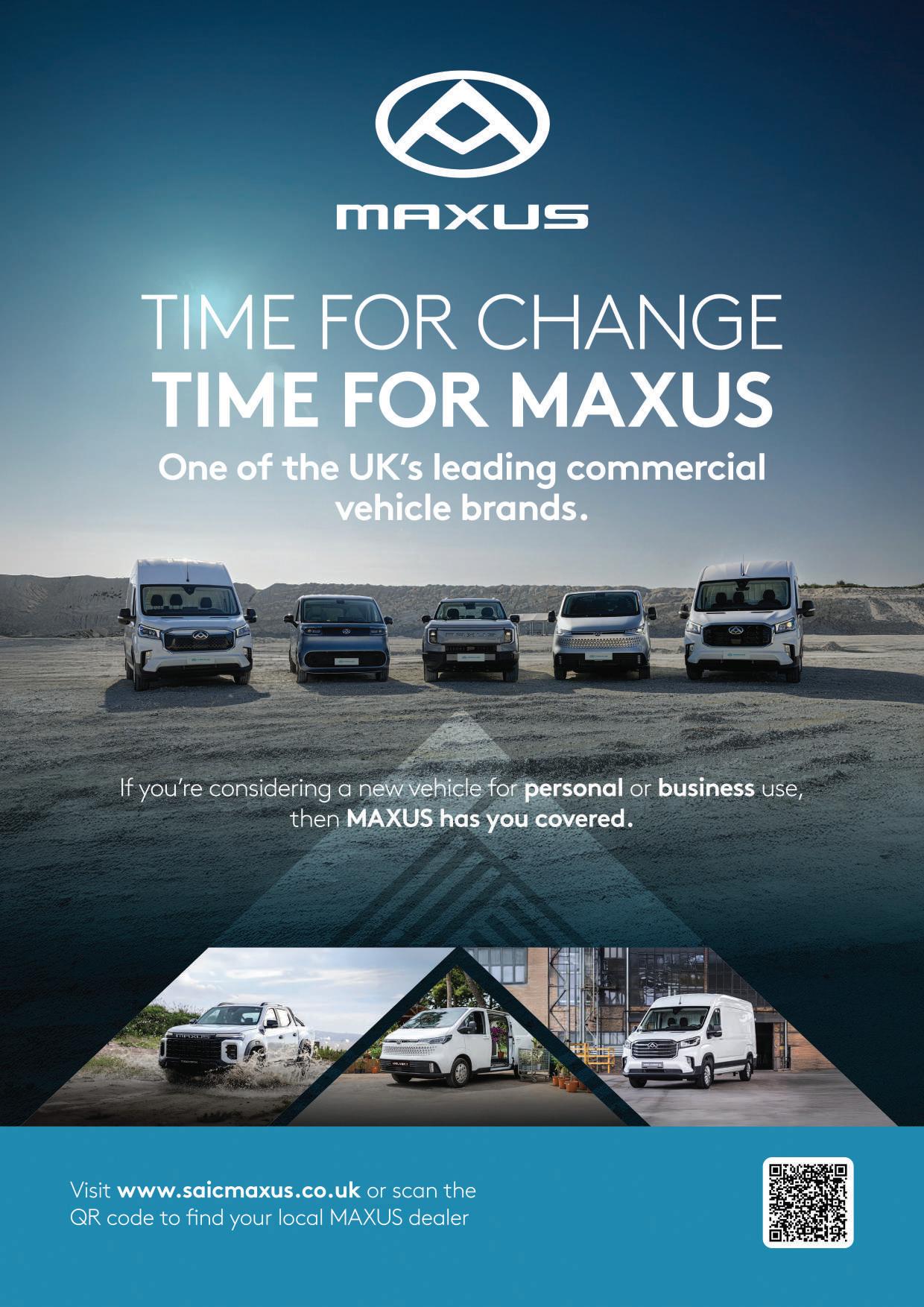

Renault E-Tech series:
The Renault E-Tech LCV range consists of Kangoo, Trafic and Master E-Tech electric, each designed to work as hard as you do.
WHY CHOOSE A RENAULT LCV E-TECH?
Choosing a Renault E-Tech offers an alternative to petrol and diesel, without comprising working patterns, while delivering low running costs. The range futureproofs your business against low emission zones and sustainability goals. But more than that it’s the high-tech option that works with you and your drivers. The E-Tech range’s multimedia system has Apple CarPlay and Android Auto as standard for a customised driving experience, while new Master – the 2025 International Van of the Year – has the open R-Link with optional integrated Google built-in and more than 50 apps, to make your life easier.
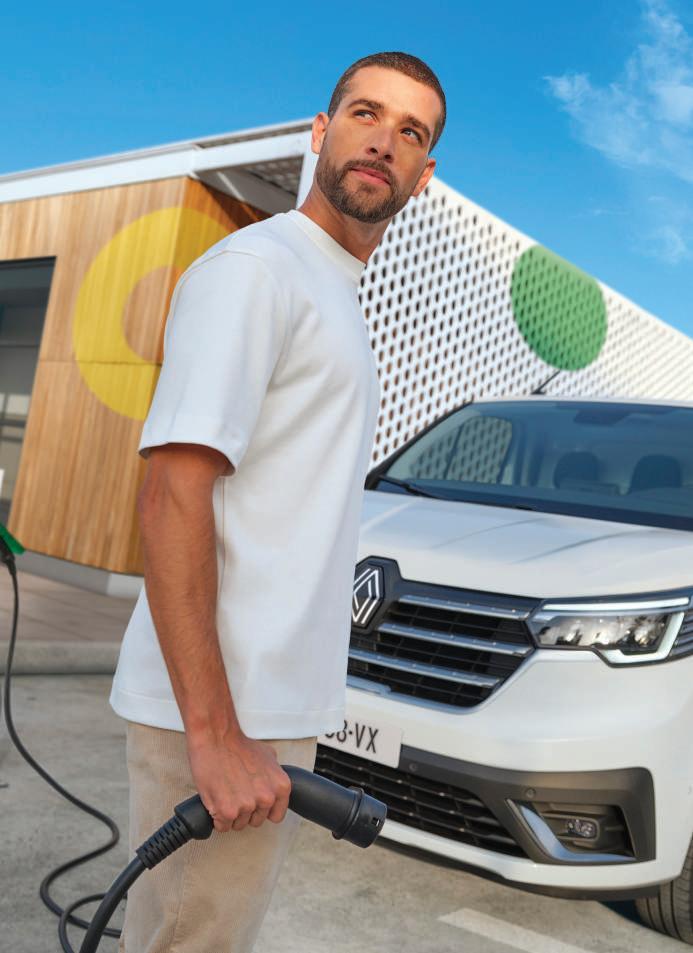
NEW MASTER E-TECH ELECTRIC
Renault’s largest electric van comes fitted with an 87kWh battery that offers an excellent driving range of up to 285 miles WLTP1.
It comes with a load length of up to 3,855 mm, a load volume of 14.8m3 (panel van only) an up to 1,500kg payload and a towing capacity of 2,500kg2.
And with 22kW AC and 130kW DC charging as standard, drivers will spend less time waiting to charge up their vehicle and more time on the road.
Prices start from £42,5003 which when you include the PIVG4 means the vehicle is under £40k.

INTERIOR TECH AND COMFORT
Van drivers spend most of their working day inside their vehicle, so Renault has worked hard on the LCV E-Tech range’s interior, tech and safety to make journeys easier and more comfortable.
MASTER E-TECH ELECTRIC comes with a 10.1” multimedia system, twin USB C inputs with Apple CarPlay and Android Auto as standard10, while optional rear parking sensors, a digital rear-view mirror, heated front seats, a wireless charging port and open R-Link with Google built in11, further enhance the cabin and driving experience.
TRAFIC & KANGOO E-TECH’S both offer an 8” EASY LINK multimedia system with Apple CarPlay and Android Auto, plus a 10” digital dashboard, digital interior mirror, heated seats, a heated steering wheel and climate controls are also available on selected models.




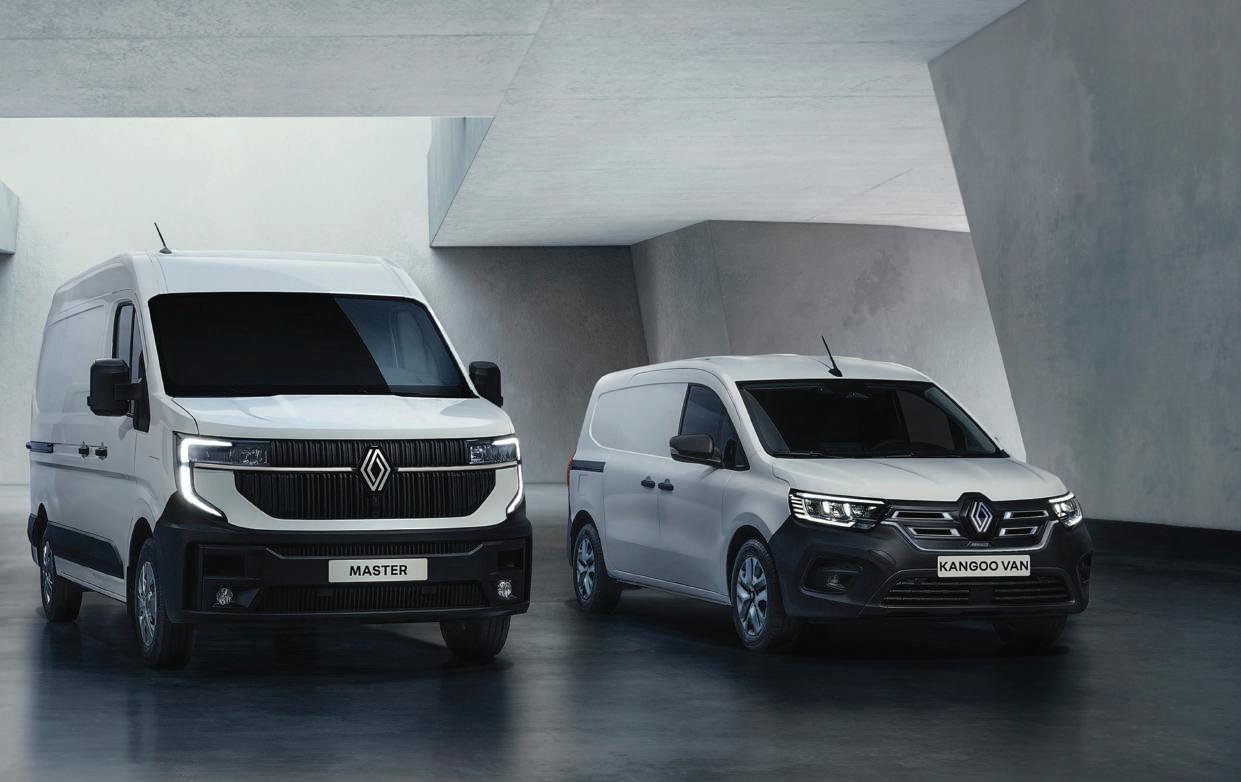
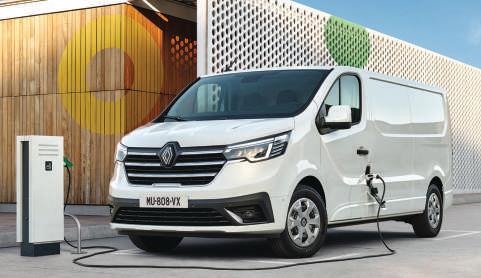
TRAFIC E-TECH ELECTRIC
With proven DNA, the Trafic E-Tech electric features a 52kWh battery delivering up to 183 miles WLTP5. Trafic E-Tech comes with 7kW AC and 50kW DC charging as standard across the range for quicker top-ups on the road.
Customers benefit from two lengths, L1 & L2, two heights H1 & H2, up to 1.2 tonnes payload capacity.6
Trafic E-Tech electric also comes with load volumes from 5.8m3 to up to 8.9m3 7
SAFETY
All of the Renault LCV E-Tech range come with up to 20 advanced safety features12 such as lane departure warning, Active Emergency Braking, intelligent speed assist with traffic sign recognition and overspeed prevention. An Emergency Call System and driver, passenger and side airbags are included.
RENAULT E-TECH WARRANTY
The LCV E-Tech range gets Renault’s standard three-year 100,000-mile warranty, and three years’ roadside assistance.
KANGOO E-TECH ELECTRIC
Renault’s small electric van boasts the same cargo carrying capability as its ICE counterpart, with up to 4.2m3 of load volume and a payload capacity of 600764kg8 from two body lengths, Standard & Long.
It’s fitted with a 45kW battery which delivers up to 186 miles (WLTP)9. The battery can be recharged using a 7kW wallbox in just over six hours, with rapid DC charging at up to 75kWh. It is also offered with a range of door and glazing options to suit trades and businesses of all types.

1 Based on 87kWh E-Tech electric L2H2 4T version.
2 Usable cargo, loading and towing capacity based on 87kWh E-Tech electric L2H2 4T version.
3 Price based on [MM35 Panel Van E-Tech Advance MY24]
4 PiVG available as part of the UK’s Government Office for Zero Emission Vehicles (OZEV) scheme. Eligibility criteria applies. Subject to availability. For full details of the scheme visit https://www.find-government grants.service.gov.uk/grants/plug-in-van-and-truck-grant-1
5 Based on SL30 E-Tech Advance RC Panel Van MY24.
6 Usable payload capacity based on 52kWh E-Tech electric SL30 version.
7 Usable load volume based on 52kWh E-Tech electric LH30 version.
8 Usable load volume and payload capacity based on 45kWh E-Tech electric LL21 version.
9 Based on 45kWh E-Tech electric ML19 version.
10 Apple CarPlay® is a registered trademark of Apple Inc. Android Auto™ is a trademark of Google LLC
11 Google, Google Maps and Google Play are trademarks of Google LLC
12 It is your responsibility to stay alert, drive safely and be in control of the vehicle at all times. Driver assistance features have speed and other limitations and should not be solely relied on. For more information, please refer to the owner’s manual or visit www.renault.co.uk/safety.
WLTP test data shown for comparability purposes only. Actual real world driving results may vary depending on factors including the starting charge of the battery, accessories fitted after registration, weather conditions, driving styles and vehicle load.



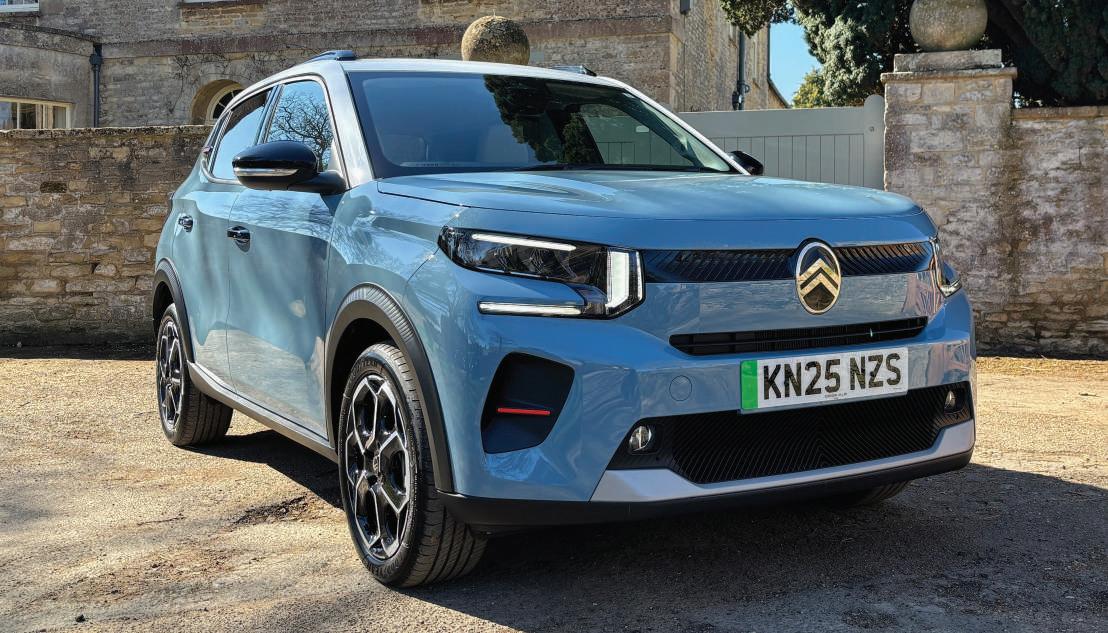

ë-C3 gives the fleet world what it wants right now
What the world needs now is not ‘love, sweet love’, but more affordable electric cars. Citroen’s all-new ë-C3 is a typically stylish take on a value-for-money EV, and CC&V had the opportunity to drive one at the UK launch. Here’s how we got on.
THE ë-C3 is the fourth generation C3, which in turn is the brand’s most popular model, selling 5.6 million units since 2002 and accounting for 29% of Citroen sales in Europe.
The electric version doesn’t position itself as a super-fast electric motor, but rather it offers the kind of everyday performance associated with a small petrol-engined car. The big news is the price: under £22,000, and that makes the é-C3 a very big deal indeed.
Model choice
Citroen has kept it simple with just two electric versions, Plus and Max. Both use the same 44kWh battery with a range of up to 198 miles. A 124-mile range ë-C3 will arrive later this year.
Engine and battery
Citroen has selected a lithium iron phosphate battery pack, which uses fewer
rare earth metals, making it cheaper to produce. The 44kWh battery capacity is modest, with the 83kW single electric motor up front offering 113bhp and 120Nm of torque to the front wheels, making the ë-C3 light on its feet. Top speed is 84mph, with 0-62 mph taking 11 seconds.
Range
Officially it’s 198 miles, although our time in one wasn’t long enough to confirm this. During our test the car was showing 3.9 miles per kWh as we traversed Oxfordshire, which would mean 170 -180 miles. Pretty close to the target figure.
Charging
This is very impressive, with 100kWh DC charging speeds, so expect under 30 minutes to charge from 20-80% on a public fast charger. At home on a 7.4kWh AC set-up, with our EDF overnight five hour tariff of 9p/ kWh will add 38kWh to your range for just
£3.30. An optional 11kW charger is available but there’s no heat pump, so winter range is likely to be lower. Connected navigation with new ë-ROUTES app ensures journey times can be optimised and a reliable ‘live’ charging network is always accessible.
Outside
At 1.57m high it’s taller than its predecessor, benefitting from SUV-style ground clearance of 163mm. Citroen’s new Chevron brand signature debuts on the bonnet/grille logo, with a new three-level lighting signature; one vertical and two horizontal lenses that look like blades. There’s an upright windscreen, short bonnet and on our test car a contrasting white roof. The rear comes with a horizontal gloss black strip that merges into the rear corner lights which match those on the front of the car, with a large Citroen Chevron logo in the centre.
Continued on page 34
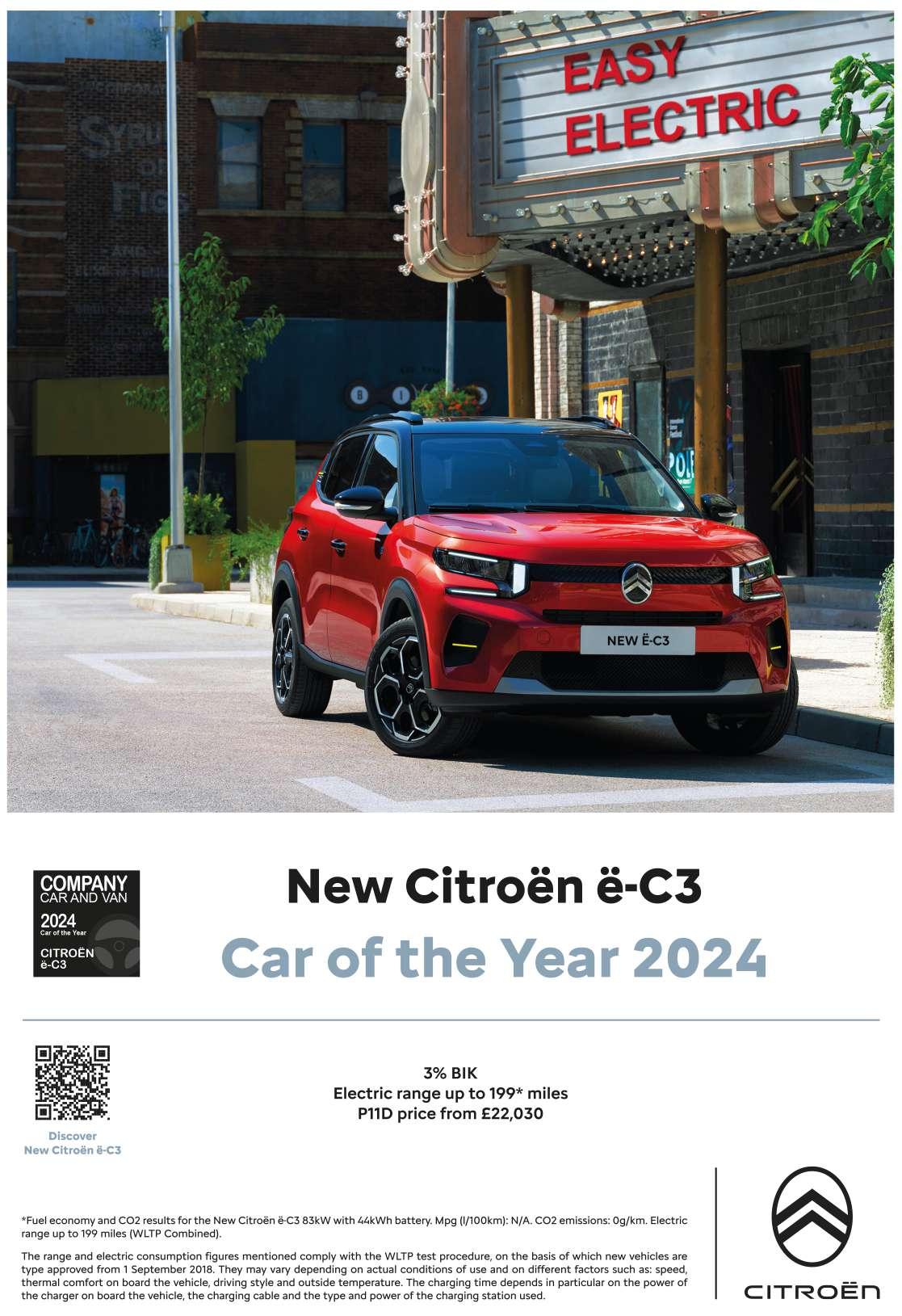
Continued from page 32
Inside
As is often the case with Citroens, the inside is very clever. The car’s more boxy shape gives it a larger cabin than other Stellantis B sector models, with rear seat space the biggest benefactor. You’ll just about squeeze three adults in side by side, something you’ve no chance of doing in the Alfa Junior or Jeep Avenger, for example.
And even with some generic Stellantis bits such as the 10.25” touchscreen, gear selector, electric hand brake and window switches, there’s plenty of Citroen touches, with the padded memory foam seats, the Citroen Advances Comfort System, the funky fabric on the dash and cool corner air vents particular stand-outs. It’s all done tastefully and to a budget but Citroen has done really well with the contrasting colours and textures, which shame those on much more expensive cars.
The steering wheel contains buttons for cruise control on the left and the infotainment and phone on the right. The wheel itself is compact, meaning you can see both the driver’s display and heads-up display clearly if fitted. The only negative we felt was that the front seats are short front to back, so don’t offer as much support for the longer legged.
Specs
The ë-C3 Plus comes with 17” alloys, roof rails, a two-tone roof, LED headlights and daytime running lights, automatic headlights. There are also two front and one rear USB-C, the aforementioned 10.25” touchscreen, DAB, Apple CarPlay, Android Auto, six speakers and Advanced Comfort front seats.
You also get as standard the Citroen safety pack which includes Lane Departure Warning, Speed Limit Recognition, Active Safety Brake, Drive Attention Alert and rear parking sensors. Finally, there’s a 7.4kWh on board charger.
Jump up to the Max model and this adds rear electric windows, front fog lights, Advanced Comfort rear seats with two third/ one third split, rear parking camera, heated front seats, a heated steering wheel, a heated windscreen and automatic air-con.
Infotainment
This is lifted from many other Stellantis models and it’s easy to use, features clear graphics, connects promptly to CarPlay and the slim horizontal digital driver’s display is another nice touch, and very Citroen. Separate climate controls sit beneath, which is more good news.
Boot and practicality
The large cabin means a smallish 310 litre boot, but this goes up to 1,188 litres if you fold the rear seats down. In the cabin is a small glovebox, twin centre cup holders, under armrest storage and large door pockets, plus


space on the dash top for odds and ends.
In the car and on the road
We were testing an ë-C3 Max in a lovely Monte Carlo blue and white colour scheme. The first thing to say is that it’s great fun to drive, feeling very much like a small petrol hatchback. It isn’t as quick as some EVs and nor does it offer thrills, but its compact size and light steering make for entertaining driving nonetheless.
The short bonnet makes the front of the car easy to position and the Comfort seats
“It’s built for comfort and city driving and does a splendid job on those terms ... it’s a really easy car to drive and to live with...”
really do work, soaking up the jolts associated with poor tarmac and completely extinguishing the battery weight under the floor. Front leg and headroom is excellent; Martyn, my companion on the test run, is 6ft 5” and had no issues at all.
Driving
The e-C3 handles just fine but don’t expect much engagement. It’s built for comfort and city driving and does a splendid job on those terms. If you do go faster than 40mph you will notice a touch of wind and road noise entering the cabin. At motorway speeds it’s louder still, but don’t let that put you off. It’s a really easy car to drive and I’m sure to live with, too. Certainly it won’t cost much to run or repair and the front tyres should last at least a couple of years when most ‘hothatch’ EVs burn through them pretty fast. All around vision is good thanks to plenty of glass and it’s easy to see behind you as well. Longer journeys should prove no issue especially with the extra seat padding Citroen has added to all C3 models.

Pros
Cute looks coupled to a practical interior make it desirable. Even the entry level Plus is very well kitted out. The smallish 44kWh battery makes it fun to drive. The Citroen Comfort seats are worth their weight in gold. A low starting price of £22,000 is coupled to a 198-mile range.
Cons
Some generic Stellantis interior fittings aside, not a lot wrong here.
Verdict
2025 looks set to be the year when cheaper electric motoring does not mean boring electric motoring. One could argue that the motor industry got it wrong by spending most of its time and effort over the past five years building and marketing large, heavy and quick electric models that come with a 300+ mile range. These may be perfect if you’re a company car driver, but not if you are on a lower income, want an urban EV, don’t travel far very often and want a practical super-mini.
If that’s you, then the Citroen ë-C3 ticks all of those boxes.
With other cool electric models such as the Renault 5 also launching in 2025 perhaps the car brands are finally seeing the light? We certainly hope so because we loved the ë-C3 and it should not only sell well to company car drivers and public sector fleet, but has a jolly good chance of doing well in retail, too.
CC&V VERDICT
The ë-C3 was our Car of the Year in 2024, and you can see why when you drive one. The perfect antidote for EV naysayers who criticise them for being too expensive. A perfect first electric car for anyone.
CC&V RATING: N N N N N

Jaecoo 7 reflects Chinese motoring excellence with a Chery on top
ANDREW WALKER
IN 2024 Chery Automobile entered the UK car sector with two Omoda models, the 5 and electric E5, both of which we drove. Neither is flawless but as a first effort from the Chinese brand, the E5 in particular struck plenty of the right chords.
As one of the largest car makers in the world, Chery sells a lot of models, especially in China, where customers want a good looking, well-equipped car, with European SUVs a popular choice. Indeed, a joint venture with JLR over the past decade has seen Chery building Jaguars and Land Rovers for the Chinese market.
Alongside Omoda, Chery has also launched Jaecoo, a more premium brand, and its first UK model, the Jaecoo 7, landed with us in April and here’s what you need to know.
Tell me more?
The 7 bears an uncanny resemblance to an Evoque from certain angles with a sprinkling of Peugeot 3008 from others. In effect it’s


targeting the mid-sized SUV sector and aims to offer a premium product at a more mainstream price, with entry level models priced at £30,000.
There’s a choice of a petrol or plug-in hybrid powertrains and it’s the latter we were

testing as it comes with just 8% BIK making it company car friendly. The petrol model is offered in both front and all-wheel drive, while the PHEV is front-wheel drive only and features the brand’s Super Hybrid System. Continued on page 36
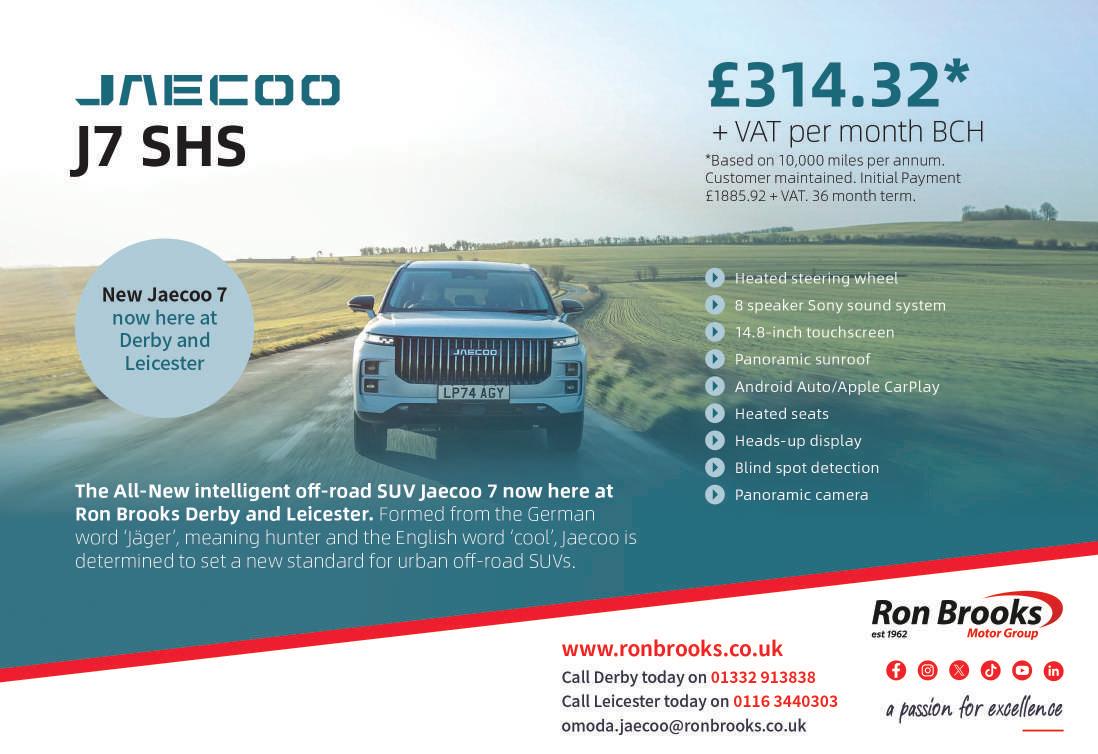

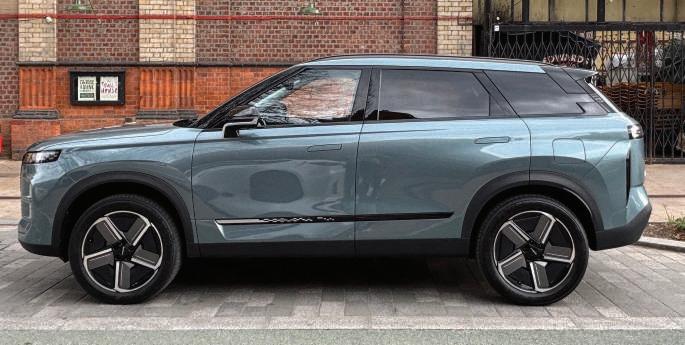
Continued from page 35
Trims
Deluxe or Luxury, with the plug-in only offered in Luxury trim. Goodies include a full length panoramic sunroof, 13.2” portrait touchscreen, electric boot, heated and electrically adjustable front seats, keyless entry, dual zone climate control. On Luxury, add a heated steering wheel, seat cooling, heated rear seats, a Sony audio system and a larger 14.2” portrait touchscreen.
Outside
The large front waterfall grille gives the Jaecoo 7 some kerb presence. Vertical LED lights adorn the front edges, with the sides featuring flush door handles and tinted rear windows. The roofline slopes downwards to the back of the car elongating the profile. At the rear ‘Crystal Array’ LED’s stretch across the width of the car. It’s attractive.
Plug-in performance, emissions and MPG
With 204PS the plug-in is the most powerful Jaecoo 7 engine and offers 310Nm of torque. Acceleration from 0-62mph takes 8.5 seconds. CO2 emissions are just 23g/km with overall claimed fuel consumption as high as 403mpg. As ever with a PHEV we’d caution readers to expect a more realistic combined economy of 50mpg.
Inside and infotainment
The cabin feels light and airy thanks to a combination of the panoramic sunroof and clutter free dashboard. The synthetic leather seats and dashboard top look more premium than they actually feel to the touch. Quality overall is very good with the tactile dashfront a stand out.
Almost everything is controlled via the touchscreen, which is good – keeps the dashboard tidy – and bad; adjusting the side mirrors via the screen, for example, is one function too far.
Although the climate controls are located on the screen, they’re at the bottom and can be adjusted fairly easily. The overall layout follows the Tesla set-up that seems to be popular with many brands, including BYD, Volvo and Polestar, in that everything comes

from the screen menus, so you’ll need time to take it all in.
You can access quite a few of the more popular functions via a quick-access menu; music/radio, phone, SatNav, by swiping down from the top of the screen. The system uses an android set-up and the functions resemble apps so smart phone users will feel right at home. Connecting to Apple CarPlay was straightforward, but try as we might, we could not get any clear DAB radio reception without significant hissing and background noise. An early gremlin perhaps?
The gear lever is located to the right of the steering wheel where you’ll also find the lights and wiper stalk on the left and some steering wheel buttons to access the cruise control and infotainment buttons. The driver attention warning module sits above the screen behind which is a neat and tidy 10.25” display and a clear head-up display. It all looks good, is extremely functional and again is very Tesla in its construction.
Range and charging
When the Jaecoo 7 was delivered fully fuelled, the tank indicated a 695-mile driving range plus 11 miles of electric range. Fully charged the Super Hybrid System is good for 56 miles of electric-only driving, making it very company car friendly. This never falls to zero as the 7’s tech enables it to set its own self-charging level.
The 7 can also be fast charged at up to 40kW so a 30%-80% charge can be achieved in just 20 minutes. And it comes with a useful 3.3kW charging plug offering V2L capability.
Driving and comfort
The Jaecoo 7 is pretty accomplished when handling your day-to-day driving needs. There’s no starter button, you just get in and go by selecting D on the gear stalk. And the car turns itself off when you exit as long as you’ve depressed B on the end of the gear lever stalk.
On the motorway the adaptive cruise control makes easy work of long distances. Only when you put your foot down does the engine whine a bit as the electric motor gets up to speed. This is because most of the work

is done by the electric motor, rather than the 1.5-litre petrol engine, which means the 18.3kWh battery never gets completely flat. The downside then is a slight lapse in power as the petrol-engine finally kicks in.
On the plus side, even on the motorway you can drive in pure EV mode, although we’d recommend the HEV setting once you go over 30mph, and EV setting when driving below.
Out and about, Sport mode adds some heft although the difference between that setting and Normal is minor. Eco mode does reduce power and is a good motorway option. On some local, more challenging roads you get the chance to play a bit. Here we found that the Jaecoo 7 suffers from notable oversteer, is hyper-sensitive and has quick-fire brakes. None are enjoyable. However, by changing the Vehicle Settings you can alter all three and get them more to your liking and driving style.
Pros
It’s competitively priced with low BIK. Equipment levels are high as is build quality. Looks good from the outside. Large UK dealer network and decent warranty.
Cons
Over reliance on the touchscreen for some simple adjustments can be frustrating. Handling is only so-so, with oversteer and sensitive brakes the main culprits.
CC&V VERDICT
Many are still tempted by a practical SUV PHEV despite a rise in BIK tax. Many will love the Tesla-like infotainment screen, and the minimalist interior and specification are top-notch as well. It’s also a very attractive looking car. Driving is a little vanilla, but overall, what the Jaecoo 7 does well is to offer a low price point with plenty of goodies. British customers love value and spec, and the Jaecoo 7 offers both and should do well as a result.
CC&V RATING: N N N N

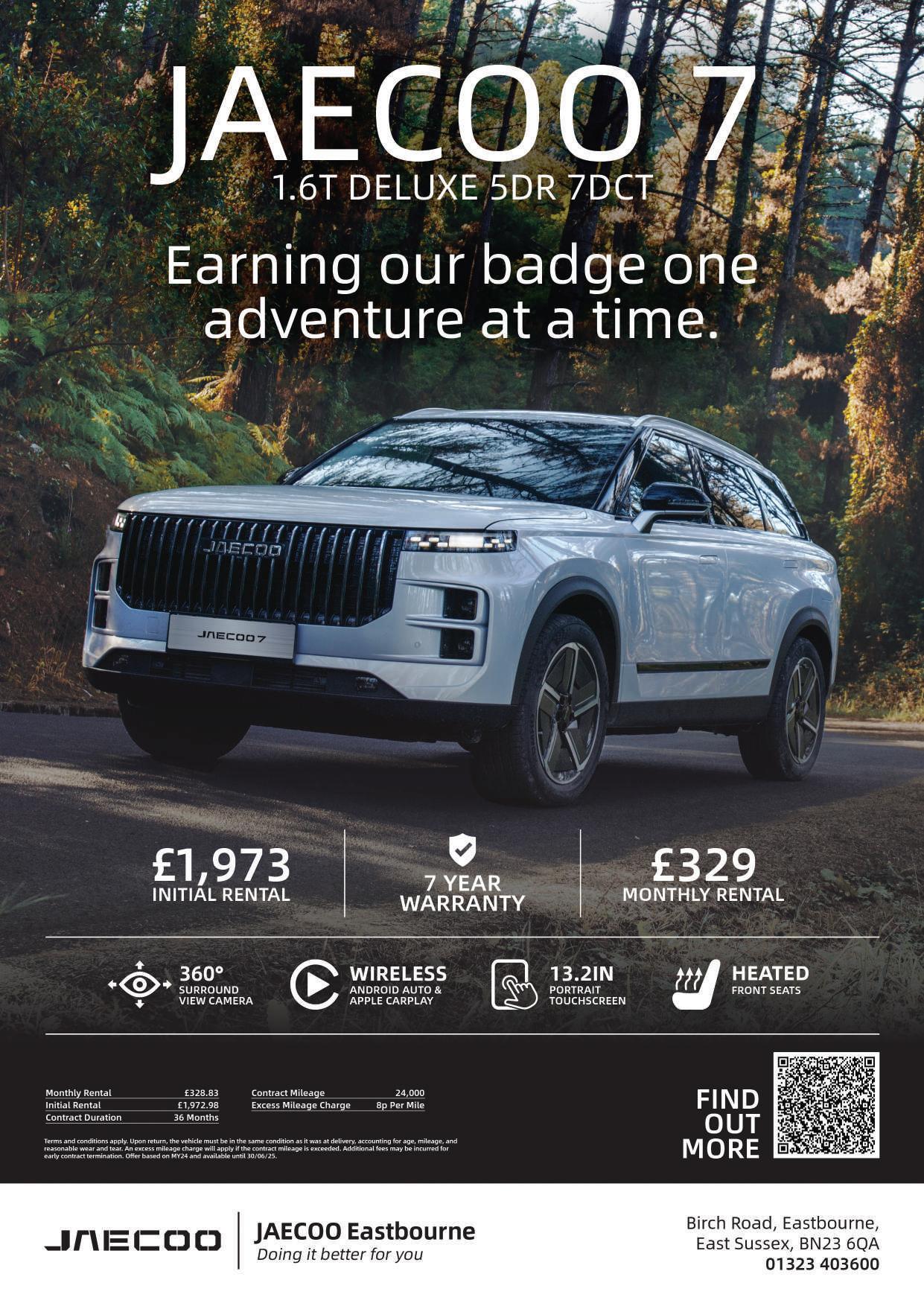
Cooper Electric has enough MINI DNA to keep everyone happy
ANDREW WALKER
SINCE it was relaunched in 2001, Mini’s success can be put down to BMW’s willingness to make the new versions as drivable as the original, and to fit them with retro Mini fixtures and fittings.
Up to now it’s a plan that has definitely succeeded but the introduction of a new electric Mini with bigger heavier batteries could put that drivability to the test. We spent some time in the Cooper E and SE and here’s what we found out.
Model choice
Two versions: E and SE. The Cooper E comes with useable battery capacity of 36.6kWh, up from 28.9kWh in the outgoing Mini Electric. This means it offers a WLTP combined electric range of 190 miles. The Cooper SE’s useable battery capacity is larger at 49.2kWh, and comes with a WLTP combined range of up to 249 miles. The Cooper E costs from £30,000, the Cooper SE is £34,500.
Exterior
They’re Minis, definitely, but perhaps not as cute or as recognisable as such, with a much more pared down aesthetic. No fog lights, plastic wheel arches or chunky chrome door handles adorn the new model. It’s more streamlined with a less upright windscreen and features a less exciting front grille with new corner rear lights and front circular headlights being offered.
Interior
Inside it is quite spartan compared to my 55 plate Cooper bar the textile-inspired dashboard front which runs the width of the car and onto the door panels. Slim horizontal air vents and the circular speedo infotainment screen are the only instrumentation on the dash, with some neat toggle switches located underneath. These include the starter button, driving modes (Experiences ) and gear lever.
Beneath this on our SE test car was a portrait phone charging pad, twin cup holders, an armrest and a storage space with movable covered lid that goes from front to rear through the centre of the car. The interior door handles are chrome, narrow and cleverly hidden low down.
The quality throughout is excellent and to keep up Mini’s green credentials, much of what’s used is made from recycled textiles.
Practicality
There’s a touch more room in the rear than the original Mini Electric, while up front you now sit a little higher to accommodate the battery. Front seat passengers get loads of seat adjustment too, while in the back, headroom is okay but your legs may feel cramped. It’s a small car so space under the boot floor is a plus for cable storage as are decent front door pockets and a small glove box. Boot space is only 210 litres below the parcel shelf. The rear seats fold down in a 60/40 split with the height adjustable boot floor allowing flat access to the load bay.
Charging
The Cooper SE has a maximum charging speed of 95kW from a public charging point. That means a 10-80% top-up will take around 30 minutes. The Cooper E only charges at 70kW so the miles will be added more slowly.
Specification
Choose from three trim levels: Classic, Exclusive or Sport. Entry level Classic features LED headlights, a heated steering wheel, cruise control and two-zone climate control. If you’re prepared to buy the Level 1 extras package (£2,000) that’s standard on Exclusive and Sport, you’ll add a head-updisplay, customisable front and rear light signatures, keyless entry, power-folding door mirrors, wireless phone-charging and heated front seats.
Exclusive trim adds additional exterior design elements, such as the option for a multi-tone roof with a combination of three colours, as well as offering the front grille in Vibrant Silver.
Sport trim uses high-gloss black as the frame for the front grille and logo colour with a contrasting Chilli Red roof and red/black bonnet stripes as further options. Adding Level 2 and 3 packs brings more goodies but pushes the price into £40k territory.
Infotainment
Cooper electric uses the MINI ‘Interaction Unit’ and it runs an Android-based System 9 operating software. This has been specifically designed to look and feel similar to a modern smartphone, so you can stream video and play games on it, too. It also offers the MINI Experience Modes where you can configure different settings Core, Green, Go-Kart, Vibrant, Timeless, Balance and Personal. Only three though, Go-Kart, Core and Green, actually change the way the Cooper Electric
drives, by either altering the regenerative braking levels for an increased range, or lightening or tightening the steering most noticeable in town. You can increase or decrease accelerator response, something you’ll get hooked on in Go Kart mode.
The circular display is in keeping with Mini’s heritage with the operating system, graphics and speed all very impressive. You also have an avatar in the voice control system. Either a Bulldog or a cartoon Mini which would certainly appeal to the kids. We only spent an afternoon fiddling with this, and over time you’ll realise just how in depth the whole set-up is, so just beware of getting lost in the system’s sub-menus.
Driving
We’d all like to think that driving a Mini will offer up fun and excitement but my own Cooper diesel from 2005 did neither. It was and felt heavy and the diesel engine just wasn’t powerful enough to offer hot-hatch driving. The electric Minis are even heavier. The Cooper E tips the scales at 1,540kg , the SE at 1,615kg (the old Mini Electric came in at 1,326kg). But while some have poo-pooed them both as less fun to drive than what went before, we’d have to politely disagree.
The Cooper Electrics are great fun with that ‘hugging the road’ feel that many electric cars offer. Yes, you can feel the battery weight and yes, over poor road surfaces there are perhaps more jolts than in the petrol Cooper, but ultimately Mini has made a pretty good fist of making the latest electric Minis enjoyable to drive.
In reality, even at 1,540kg, compared to most, it’s actually a light EV, so don’t be put off by the fidgety ride on bad tarmac as all EVs are more or less the same. And as a motorway companion we had no issues whatsoever, although with four adults on board it will feel a little cramped.
Pros
A much improved range over the Mk 1 electric mini. BIK of just 2%. Good fun to drive. Top quality interior and safety are a bonus and the retro touches are clever as well.
Cons
Fidgety ride on poor road surfaces. If you want a lot of goodies things start to get expensive. The infotainment is good but perhaps too many functions are controlled via the circular touchscreen. The exterior isn’t as fun anymore.

CC&V VERDICT
While many company car drivers are seeking a 300-mile plus electric company car, the Cooper Electric will appeal to those who don’t drive long distances but want a fun and good looking car to drive every day. And, of course, in either spec, it’s very company car tax friendly.
Some Mini aficionados, while seduced by the retro toggle switches and infotainment screen, may not be as keen on the spartan exterior, but it’s handling, ride and performance offer a large dollop of Mini DNA, and that’s good enough for us.
CC&V RATING: N N N N N



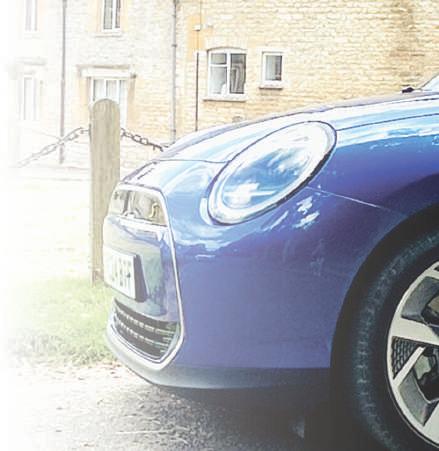


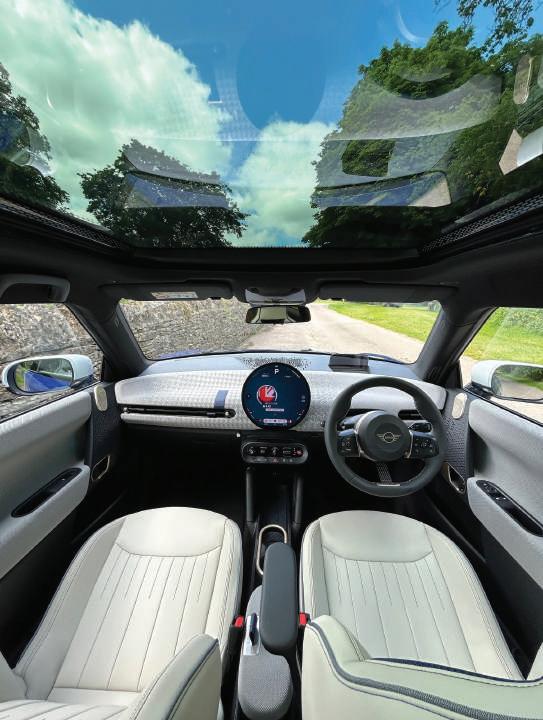

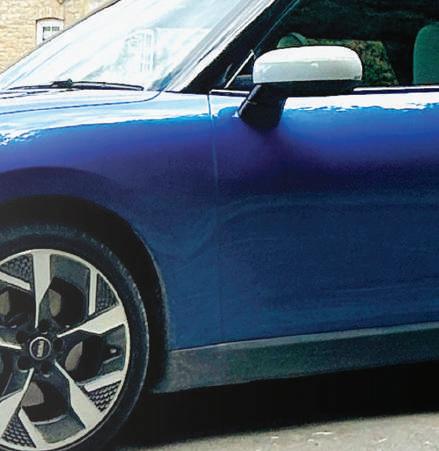
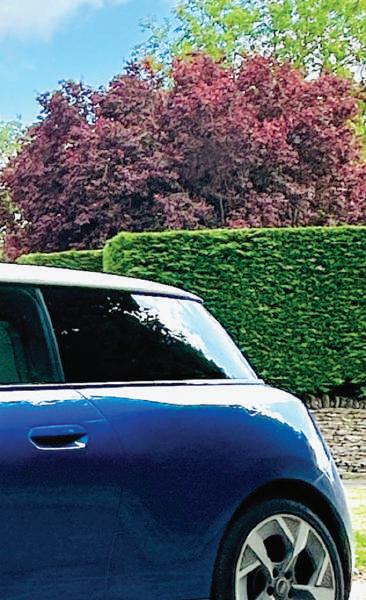
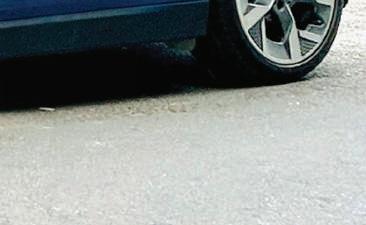
KIA adds range and spec to give EV6 new lease of life
THE Kia EV6 has received some updates for 2025, to increase the driving range and also to match it more closely with the newer EV9 and EV3 models.
What’s different outside
New adaptive LED headlights, with a new front bumper and wheel designs, give a more aggressive look. There’s an updated tail lamp and the rear black section is now split into three sections.
And inside
Kia has updated the infotainment system, added a new steering wheel and wireless charging pad. The plastics on the dashboard are smudge-proof and there’s a fingerprint scanner we first encountered on a Genesis GV60. Apple CarPlay and Android Auto are now offered across all specs and over the air updates are now available.
Battery
The EV6’s 77.4kWh battery has been replaced with a new 84kWh battery, increasing range to 307 miles, 12 miles more
than before. On the Air model, the combined range could now be as high as 340 miles.
Powertrain
This remains unchanged, so you can choose from a single-motor RWD model with 226bhp or a dual-motor, 4WD one with 321bhp.
Interior
Updates aside it’s still as good as before. The dashboard is still dominated by the car’s infotainment and instrument cluster screens, which stretch across two-thirds of the car. Below the central touchscreen sits the car’s multi-mode display. This replaces physical buttons with a dedicated ‘haptic’ touchscreen, providing shortcuts to control the EV6’s climate control, the infotainment and SatNav.
The good news is that you don’t need to delve into too many sub-menus to choose what you want, a problem associated with many existing car infotainment systems. It’s easy to work, featuring a small arrow which when pushed, switches from climate to the

car’s functions, which helps free up dashboard space.
Practicality
Up front you get a storage tray, a glovebox, twin drinks holders, two USB inputs, a normal and a C version. In the rear, twin C USB inputs are located on the inside edges of the front seats. There’s also a plug socket which sits in the centre rear and two rear drinks holders. Another design feature is the floating front centre binnacle, with additional storage space underneath.
The boot offers an excellent 490 litres of storage and if you fold down the rear seats this increases to almost 1,300 litres. The EV6 also offers a ‘frunk’, 52 litres of storage under the bonnet and space underneath the rear boot floor.
Charging
The EV6 comes with a multi high-speed charging system which means that the system is compatible with both 800V ultra-fast charging and more mainstream 400V fast charging, without the need for a


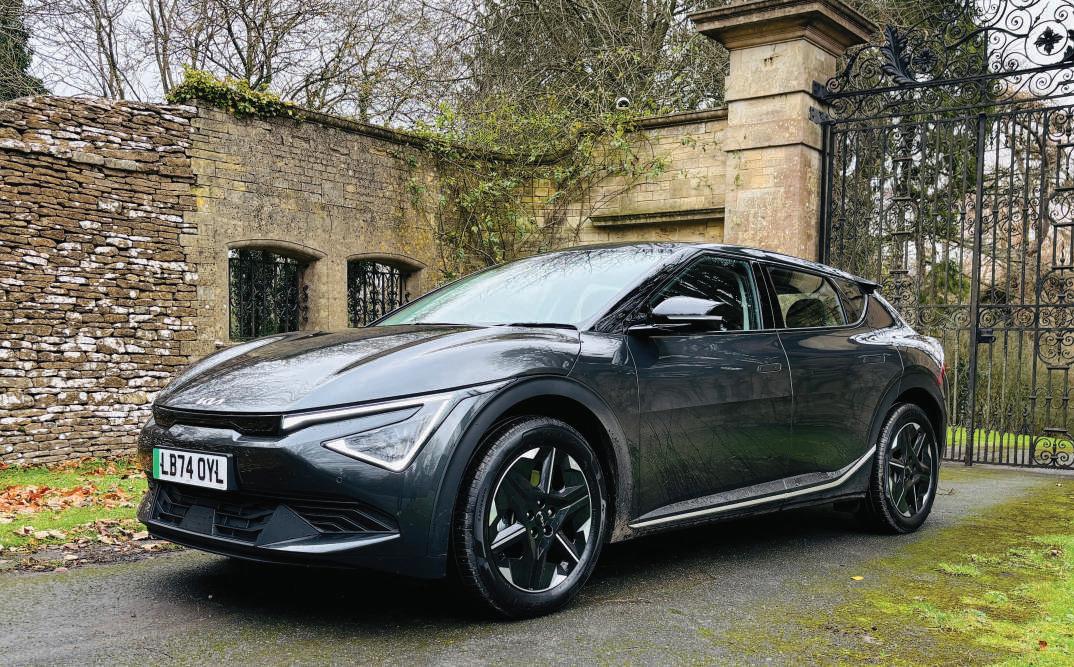
special adapter or additional on-board charger.
The Air is fitted with a Type 2-to-Type 2 charger, as well as a Type 2-to-Domestic three-pin plug charger. A 7kW home charger will recharge the EV6 Air from 10 – 100 % in 7 hours 40 minutes. A 50kW rapid charger will take the car from 10 -80% in just 1 hour 20 minutes. Plug in to a 350kW ultra-fast charger and it will only take 20 minutes to recharge from 10-to-80%.
Driving modes and regeneration
Three modes to choose from: Eco, Normal and Sport Sport. Each does what it says on the packet. Which brings us to the i-Pedal. Alongside the driving modes, the EV6 has several levels of brake regeneration; Zero, 1, 2, 3 and then the i-Pedal, which makes the accelerator heavy and is best used in town. Venture onto 30mph roads and Level 2 or 3 gives you a bit more zip, while on the motorway, Level 3 or Zero allows you to drive the EV6 unhindered.
The updated model still drives exceptionally well, masking the battery weight brilliantly and we’d expect a 1:1 ratio of distance travelled to battery range used –unlike some of Kia’s competitors.
Pros
For the company car driver the low BIK and improved 340-mile driving range are appealing. It’s still an exciting car to look at.

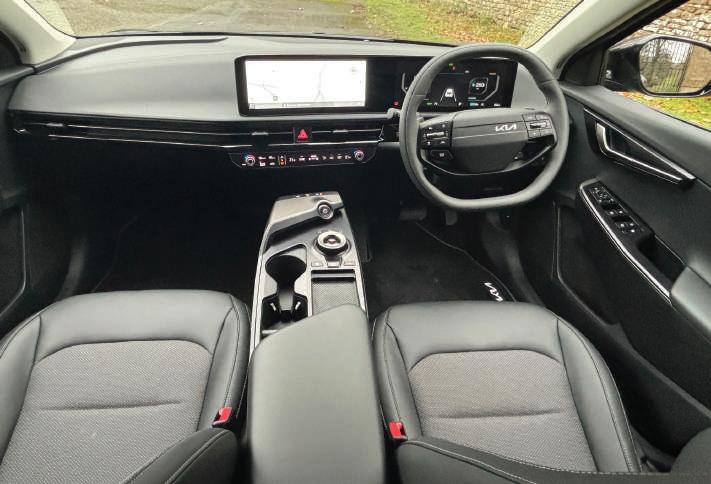
Air is also the cheapest way into an EV6 costing £45,475.
Cons
The i-Pedal will aid battery range, but makes your right foot work hard for it. Others are now offering EVs with a 400-mile range. The interior, dare I say, is looking dated compared to, for example, the all-new Kia EV3.

CC&V VERDICT
Updated EV6 drive looks and drives better than its predecessor. Interior and exterior improvements are a step up in class. Range isn’t great compared to some rivals, and smaller EV3 has nicer cabin, but EV6 Air is the cheapest to buy or to lease.

CC&V RATING: N N N N

BYD’s ready to make more waves with the SEALION 7
Andrew Walker checks out the latest model to join BYD’s Ocean Series, the SEALION, and sees how its SUV bodystyle fares alongside its siblings, the DOLPHIN and SEAL.
Model choice and cost
There are three models: Comfort RWD from £46,990, Design AWD which costs £51,990 and the range-topping Excellence AWD, at £58,990.
Battery, power and range
Comfort comes fitted with an 82.5kWh battery and power of 230kW, which is good for 300 miles. Design also feature the 82.5kWh battery, but power increases to 390kW with range dropping to 283 miles. Range topping Executive has a larger 91.3kWh battery, with 390kW of power which increases range to 312 miles.
Charging
All three models can be charged at speeds of up to 150kW DC and feature 11kW AC charging and a heat pump. Plug-in the Comfort and Design and DC charging time from 10-80% take just 32 minutes, while the Excellence achieves this in only 24 minutes. At home on a 7.4kW AC charger you’ll be able to add 55kWh of charge in five hours when overnight electric tariffs are cheapest for under £5. All versions come with a V2L function as standard.
Outside
It’s a large fastback SUV which takes its cue from similar models from the Audi and Genesis stables. The front of the SEALION 7 incorporates an ‘X face’ motif, with Dual U ‘floating’ LED headlights.
The rear comes with a ducktail rear spoiler, a full width rear light signature and waterdrop tail lights.

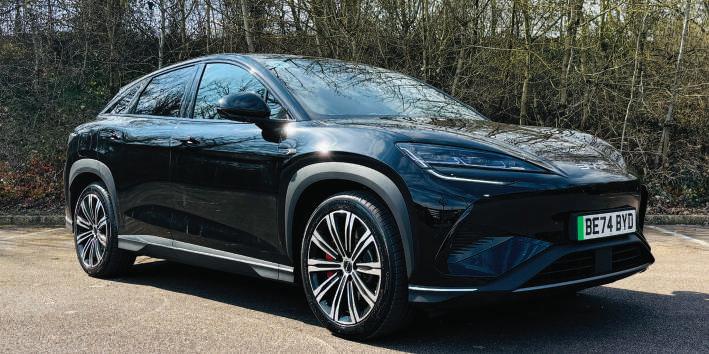
Inside
This is the brand’s most expensive car so you’d expect some quality and plenty of features inside, and in that area it doesn’t disappoint. Electrically adjustable power heated and ventilated seats, a panoramic sunroof with electric blind, wireless smartphone charging a 15.6”rotatable touchscreen and 10.25” digital instrument panel all feature. The quality of the plastics used is top-notch.
Practicality
A 520-litre boot extends to 1,789 litres with a 58-litre ‘frunk’ at the front to store your charging cable. The cabin itself has more than 20 cubbyholes.
Warranty
All versions are offered with a six-year manufacturer’s warranty and eight years for the battery and electric motor.
Driving
The SEALION glides around the city in near silence enabling passengers to take full




advantage of the car’s excellent infotainment system.
The suspension, even with the very heavy Blade battery located underneath, does a fine job of coping with poor road surfaces and is even better when you head out onto the motorway.
I took the opportunity to sit in the back and it’s impressively spacious as well as comfortable, with reclining seats adding a touch of luxury.
The adaptive cruise control and other safety systems are easy to work as is the wireless connection to Apple CarPlay.
Pros
Incredibly well equipped, very well built and very, very comfortable. Furthermore it’s an attractive looking car and comes with both low BIK and a strong warranty. It’s perfectly designed for UK customers.
Cons
Battery range is average for the sector.
CC&V VERDICT
BYD is learning quickly. Perhaps it’s not the greatest car to drive, nor does it have the longest battery range. But we feel that these are areas that the UK car-buying public will largely ignore in favour of what the SEALION does well. Take your pick from an amazingly spacious interior, incredibly comfortable seats, high specification, excellent build quality, an attractive exterior and a competitive starting price. There’s also some great contract hire offers for fleet customers as well.
CC&V RATING: N N N N


Keeping local business moving: How Fish Brothers Nissan supports regional businesses with the Nissan Townstar
AT Fish Brothers Nissan in Swindon, supporting local business is more than just supplying vehicles; it’s about building long-term partnerships and offering tailored mobility solutions.
One standout example of this approach is a recent fleet handover to Tithegrove Groundworks, a well-established Swindonbased civil engineering and groundworks company with roots stretching back to 1984.
What began with an initial conversation about replacing ageing Ford Transit Custom Crew Cabs quickly evolved into something far more strategic. When local business manager Stephen Emmett first visited Tithegrove’s premises, the discussion centred around the Nissan Primastar. But by July it became clear that a more compact and efficient option might suit their needs better, and so the Townstar Crew Cab was recommended.
A few months later, the decision had been made. Tithegrove placed an order for ten Townstars, a significant investment that reflects the confidence they had in both the product and the team at Fish Brothers Nissan.
Delivered in January 2025, each vehicle was supplied with a bespoke set of customer accessories including a three-camera CCTV system, roof and floor vents, and a custom ply lining kit crafted from marine plywood. Every van was professionally sign-written, ensuring the fleet not only performs well on the road, but also projects a smart and cohesive image for the business.
“It was a textbook example of listening to the client, understanding their operational needs, and offering a vehicle that could genuinely add value to their business,” explains Emmett. “These petrol-powered Townstars ticked all the boxes for Tithegrove, compact, practical, and economical. The crew cab variant meant they could transport both people and materials efficiently.”
And Tithegrove isn’t the only business to turn to Fish Brothers Nissan to help modernise their fleet. Just over the county border in Melksham, Wiltshire-based E&H Drylining has also been investing in the Townstar over the past 15 months.
E&H Drylining, established in 1981, is another family-run business with a strong local presence. Initially ordering ten Townstars, they later returned for a further two, followed by an additional three. Proof, if any were needed, that the vehicle is performing exceptionally well for them in the field.

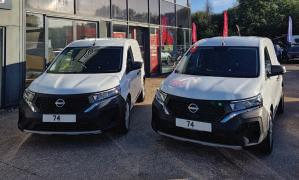
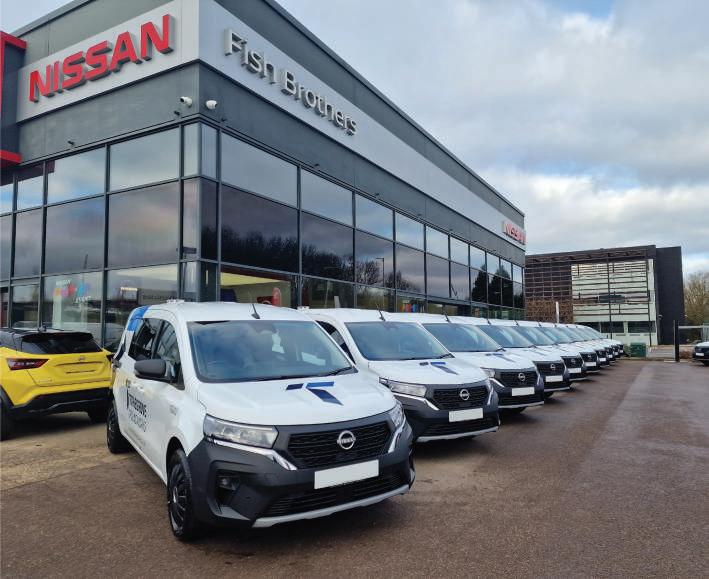

Stephen has built a productive working relationship with them that demonstrates the trust businesses place in Fish Brothers Nissan when it comes to fleet mobility.
Both of these cases are notable not just for the numbers involved, but for the origin of the relationships, and a result of proactive outreach by the business team at Fish Brothers Nissan, as Stephen explains. “We weren’t just selling vans, we were offering real solutions.
“We showed that we could help them move away from old, inefficient vehicles and into something new, reliable and better suited to their day-to-day needs.”
The Townstar, available in both petrol and 100% electric powertrains, has proved to be an ideal vehicle for SMEs looking for flexibility, comfort, and value. With a payload of up to 800kg, a load volume of up to 4.3m³, and advanced features like Apple CarPlay, Android Auto and a full suite of driver assistance technologies, it’s little wonder that the model is gaining ground in a fiercely competitive segment.
With a dedicated local business manager like Stephen Emmett on hand, Fish Brothers Nissan is uniquely placed to help businesses throughout Wiltshire and beyond navigate their fleet requirements with ease. From understanding the right model and spec, to
The fleet of Townstars for Tithegrove and (inset) Drylining came back for more vans after its first order proved successful

handling accessories, signwriting, and finance options, the dealership offers a full end-toend service that’s difficult to match.
As commercial vehicles continue to evolve, with increasing pressure on emissions, efficiency, and operating costs. Fish Brothers Nissan are trying to make the difference by offering the right advice, the right vehicles, and the right aftersales support.
For more information or to speak with Stephen directly about how the Nissan Townstar could support your business, contact Fish Brothers Nissan, Swindon, on 01793 887500


Local business manager Stephen Emmett
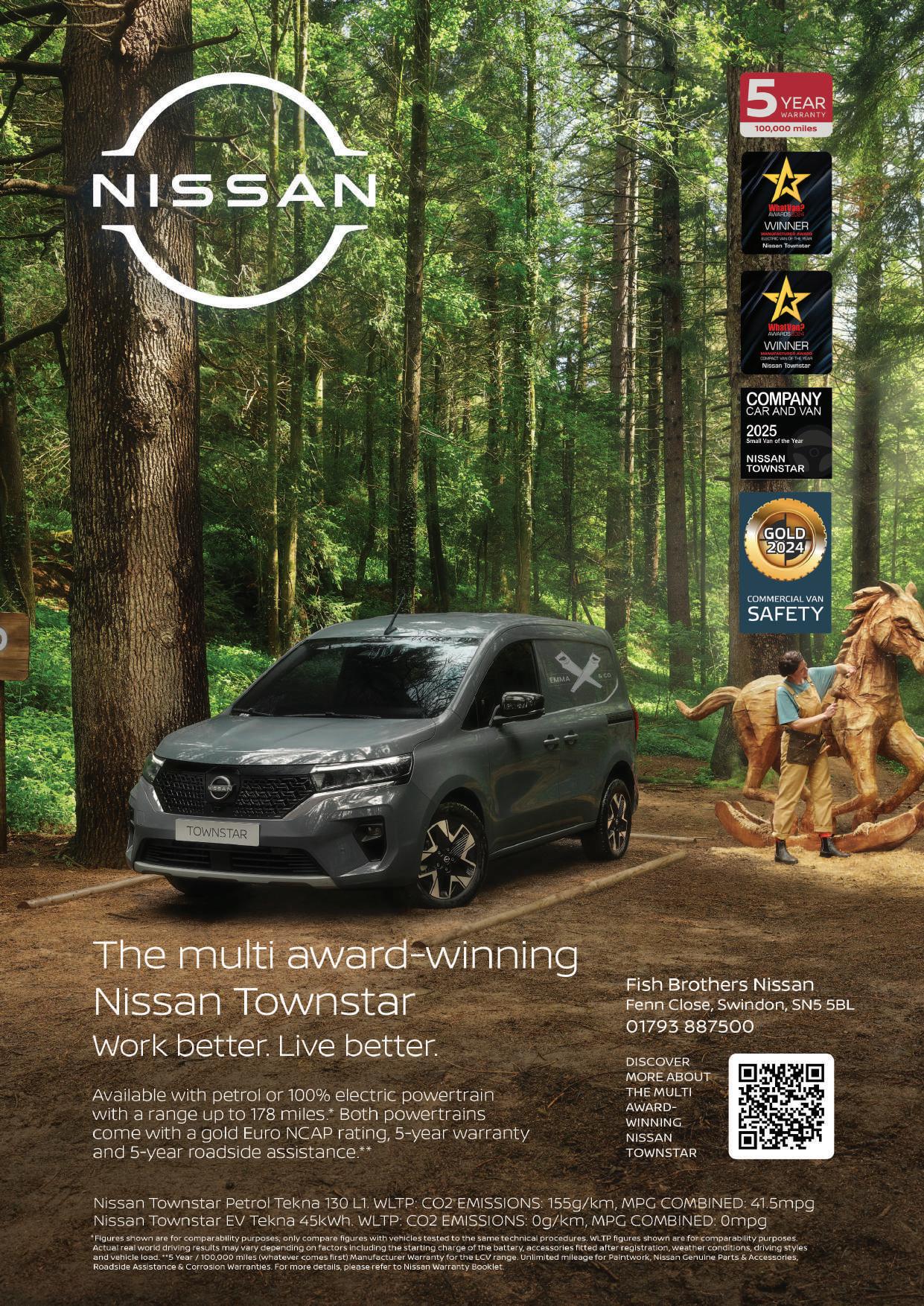
Around town or on the motorway, Nissan has a star EV on its hands
The Nissan Townstar EV is part of the company’s collaboration with Renault, with the small electric van, first unveiled at the CV Show in 2023, a replacement for the e-NV200 range. Andrew Walker took a look
Powertrain, range and charging
Fitted with a 45kW battery and an electric motor fitted on the front axle, the Townstar EV delivers up to 186 miles (WLTP). The battery can be recharged using a home 7.4kW charger in just over six hours, while rapid DC charging up to 75kWh gives users an 80% charge in 42 minutes. The battery size, 45kW, means that if you utilise a night time charging discount, if your Townstar EV battery is a third full when you plug-in, you’ll be able to fully charge it up overnight at a cheaper rate.
The system produces 122hp with 245Nm of torque, leading to a 0–60mph time of 14 seconds and a top speed of 84mph.
Model range and payloads
Options are Visia, Acenta, Tekna and Tekna+, in two wheelbases: L1 SWB and L2 LWB. Payloads are up to 600kg (SWB) or 800kg (LWB), with the maximum braked towing capacity being 1,500kg. Load volume is 3.3 or 4.3 cubic metres and load lengths are 1,806mm for the L1 or 2,230mm for the L2. The electric van offers exactly the same payloads as the petrol version.
The L1 can take a pair of Euro pallets and comes with a single sliding side door as standard. On the L2 models, the twin sliding side doors are wider, increasing from 615mm to 831mm, wide enough to load a Euro pallet through them.
Specs
All models get a full-width bulkhead, 60:40 split rear doors and a nearside sliding door to access the load area. L2 variants have an off-side sliding door as well. All versions feature a plastic bulkhead separating the cabin from the load area, but there’s no load-through option.
Standard kit on Visia models includes air-con, remote central locking with deadlocks, electric heated mirrors, automatic headlights and automatic wipers.
Acenta adds an 8” colour touchscreen, Apple CarPlay and Android Auto smartphone connectivity, cruise control, climate control, rear parking sensors and AEBS automatic braking, while Tekna adds SatNav, front parking sensors keyless entry and start and a useful rear camera. Tekna+ models come with 16” alloy wheels and a suite of extra

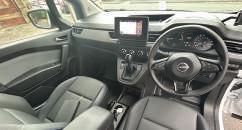
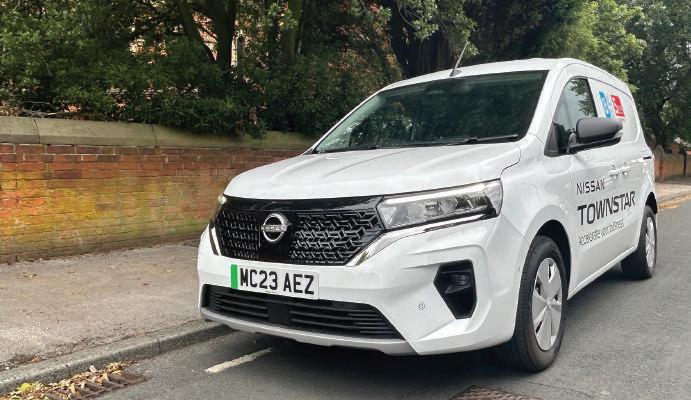
driver assistance tech, including 360-degree monitor, Park Assist, Blind Spot Intervention, traffic sign recognition and driver attention alert.
Interior
Doesn’t disappoint and feels very car-like, with good quality plastics and finishes throughout. Storage wise you get a small glove box, a dash top lidded box with two USBs and a 12v socket inside. The rear load area features six load lashings and an LED light. Our L2 model had twin side sliding doors and twin 180 degree rear opening doors.
In the cabin, the auto gear lever is nicely positioned in the centre of the dash.The dashboard and steering wheel controls, left for cruise control, right for infotainment, are easy to use, and there are piano-key buttons under the central screen as short cuts to features such as central locking, ECO and in our range topper the all around camera and parking functions.
Technology includes wireless smartphone charging, an 8” touchscreen, EASY-LINK display plus smartphone integration via Android Auto and Apple CarPlay with three USB connections. The system works well although some of the icons feel a little dated, especially those used in the Nissan SatNav. In our short time in the Townstar EV we connected wirelessly to Apple CarPlay. It all worked seamlessly so a big tick for us.
On the road
Our Tekna+ test van was very comfortable and eerily quiet with a nice bit of acceleration when nipping in and out of the traffic. A very relaxed experience when driving in the city. The battery is located underneath the van

and this really helps set the Townstar EV up for a comfortable low-speed ride. It’s quite supple over potholed tarmac and it’s not noticeably bouncy for an unladen van.
On the motorway we set the cruise control to 70mph and our unladen van finally let some tyre and wind noise into the well insulated cabin. The golden rule with any electric van is never drive too fast so you can conserve the battery range. If you’re only going to travel 50-100 miles in a day then 70mph is fine. However, with a maximum 186 mile range on your Townstar EV you’ll need to take into account payload including two passengers and cold weather, an EV’s worst enemy. We reckon that 62mph is the optimum speed. Fast enough to get past trucks, slow enough to conserve battery.
Positives
Car-like cabin and impressive handling. Very practical and a myriad of storage places. Safety to the fore on all models. It comes with zero emissions and class leading towing.
Negatives
Electric model is more expensive than the petrol versions. There’s only one battery option. The 600kg payload on the L1 is less than some rivals. Bulkhead compromises space for taller drivers.
CC&V VERDICT
Big step forward for Nissan’s small e-van offer.Clever storage solutions, well equipped and a quiet, relaxed driving experience. L2 is best option for better payload. 186-mile range is good too.
CC&V RATING: N N N N N

VW Transporter gives Ford a push as it eyes urban fleet customers
A TRIP to Athens saw CC&V get to grips with the latest Volkswagen Transporter van. Based on the class-leading Ford Transit Custom, the Ford/VW strategic partnership has already delivered the Connect/Caddy and Ranger/Amarok. Transit Custom sales dwarf those of the Transporter, but Volkswagen has come out fighting, pitching the Transporter at a lower list price, a longer warranty and a higher specs. Diesel and electric versions are available, and here’s what you need to know about the diesel.
What
is it?
This is the seventh generation Transporter, and has an enlarged load, passenger space, a higher payload and increased efficiency. From launch there’s a Panel Van, with Kombi, Shuttle and Double-Cabs following later in 2025. All models are available with turbodiesel, plug-in hybrid and electric drives.
Drivetrains
The TDI diesel comes with three outputs: 81 kW (110 PS), 110 kW (150 PS) and 125 kW (170 PS). The 125 kW TDI is always combined with an 8-speed automatic gearbox, an option on the 110 kW TDI as an alternative to the 6-speed manual gearbox. The 110kW and 125kW can be ordered with 4MOTION AWD.
A plug-in hybrid will arrive in 2026 with 171 kW (232 PS). The electric option has a 65kWh battery.
Trims
Three trims: Commerce, Commerce Plus and Commerce Pro. All are available as either standard or long wheelbase.
Commerce comes with 16” steel wheels, LED headlights, rear wing doors, near side door, 12” driver’s display, 13” touchscreen, cruise control, rear parking sensors, keyless start and Wireless App Connect.
Commerce Plus adds body-coloured bumpers, a leatherette steering wheel, front and rear parking sensors, a rear-view camera, keyless start with Safelock and an anti-theft alarm.
Range-topper Commerce Pro ups the ante with 16” alloys, a heated windscreen, heated seats, wireless phone charging, auto air-con, Adaptive Cruise Control, Blind Spot Assist, extra USB ports and super-bright LED lights in the load area.
Load space
The panel van with standard wheelbase and normal roof has a load capacity of 5.8 m3, 0.3 m3 more than its predecessor. The high roof and long wheelbase increases this to
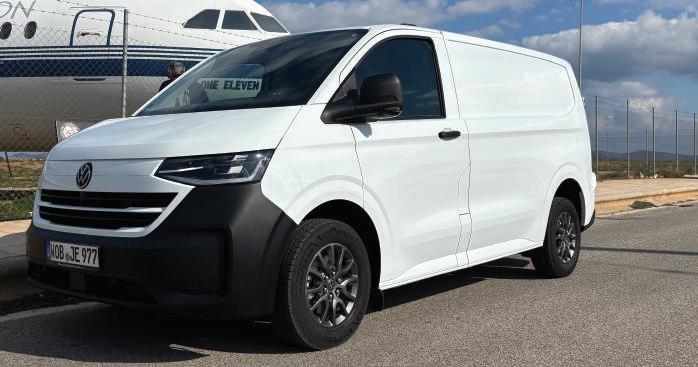

9m3 with the maximum payload up from 1.2 tonnes to 1.33 tonnes. Three Euro pallets now fit inside. Payloads range from 767kg on the 150PS 2.0 TDI 8 speed up to 1238kg in the 170PS 2.0 TDI 8 speed auto SWB model. There’s a 1,400mm aperture for the back door with 1,932mm of space between the arches.
The SWB offers 5.8 cu m3 of space increasing to 6.8cu m3 for the LWB model.
Safety
Standard equipmentis excellent and includes Autonomous Emergency Braking, Lane Assist, front and side curtain airbags, cruise control, rear parking sensors, Dynamic Road Sign Display and Front Collision Warning.
Cabin
Climb aboard and the interior immediately smacks of quality. The electric handbrake is located between the centre air-vents and the gear selector is on the right steering wheel stalk, freeing up floor space for easier access. If there are three in the cab, there’s decent legroom for the centre passenger.
Infotainment
Touchscreen inputs and menus are straightforward. There are some physical buttons on a single section under the screen. Apple CarPlay and Android Auto are included as standard.
On the road
The Transporter diesel is available with five Drive Modes; Normal, Eco, Sport, Slippery and Tow/Haul. These tailor throttle response, steering and gear-change, based on the outside environment and weather conditions. From the driver’s seat everything is easy to reach including the touchscreen. Visibility is also good, although you will need to lean

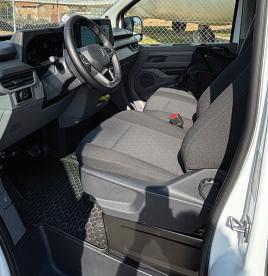

forward to look left on some occasions. On some narrow, winding and hilly Greek roads the auto is an absolute doddle to drive and there is enough power to make it up steep inclines with power to spare. On a short dual carriageway we engaged cruise control and comfortably overtook some slow-moving traffic. Cabin insulation is very good.
Performance and fuel economy
The diesels will hit 62mph in 13.4 – 16.9 seconds dependant on model. Combined economy ranges from 31.4-40.9 mpg
Pros
Practical and drives beautifully. Classy user-friendly interior. Plenty of model choice.
Cons
Almost but not quite the same as a Ford Transit Custom.
CC&V VERDICT
Similarities to Ford Transit Custom may upset Volkswagen loyalists, but utilising a tried and tested platform and Ford engines has pushed VW to a better, more practical panel van than it had before. Trims and finishes feel nicer than Ford’s, and the cabin feels classier, more modern and more durable too. We liked it.
CC&V RATING: N N N N N

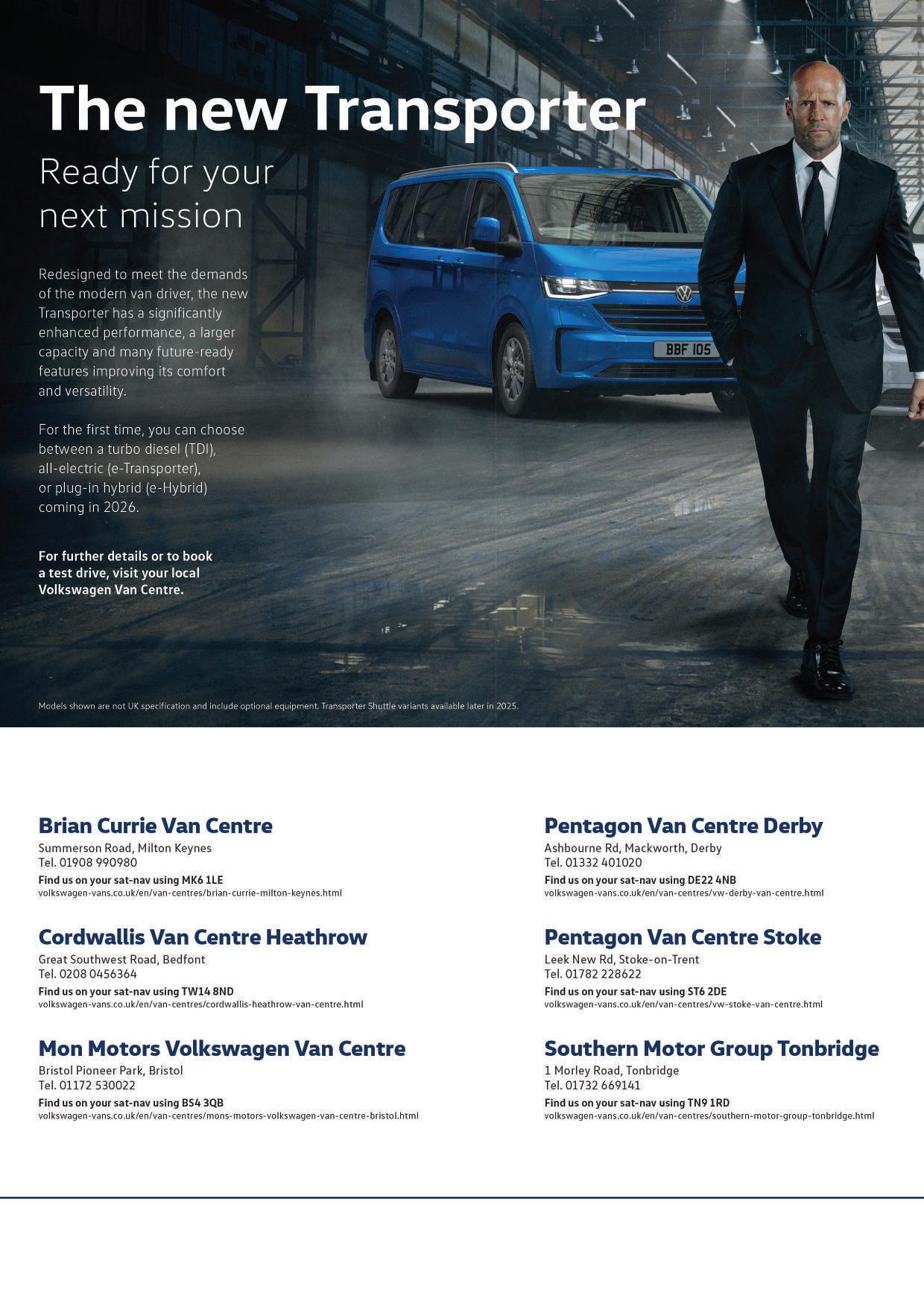
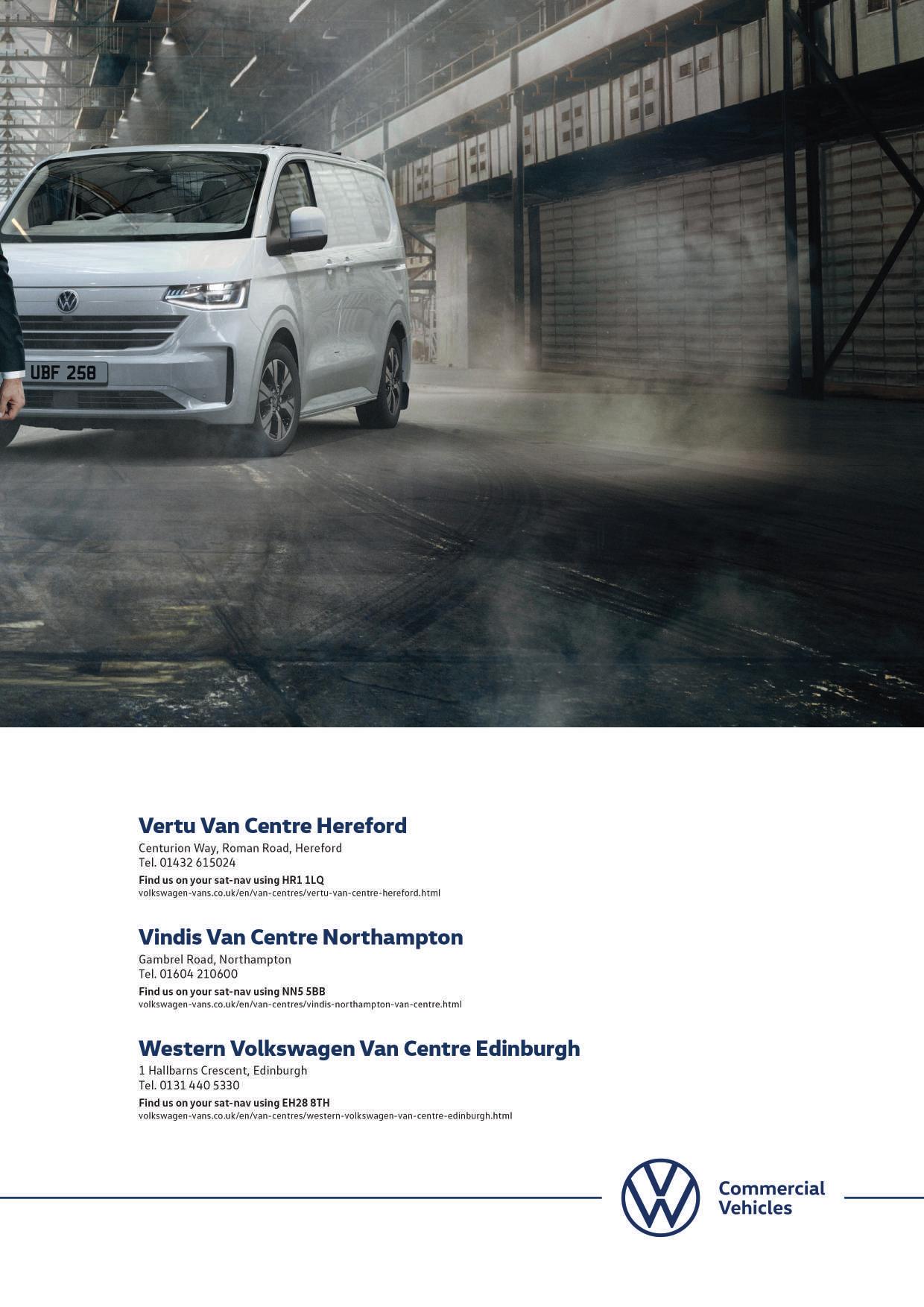
Supporting businesses with a personal touch – that’s Culverwells Isuzu
WITH over 30 years as an Isuzu dealer and a trading history dating back to 1932, Culverwells Isuzu is one of the most experienced and trusted names in the South East.
We’re proud to combine big-brand capability with small-team attention, offering fleet and business customers across the region a reliable, responsive, and genuinely personal service.
While we’re well-versed in supporting smaller fleets and independent operators, our capabilities extend much further. We continue to support a range of major utility companies across the UK who trust the rugged reliability of the Isuzu D-Max. From national roadside services to local councils and hardworking sole traders, our customers know they can rely on us not just for vehicles, but for the dependable service that keeps their operations moving.
As Marc Jones, General Manager at Culverwells, explains: “Business customers need more than just a handover – they need ongoing support, clear communication, and someone who understands the pressures they’re under. That’s where our team makes

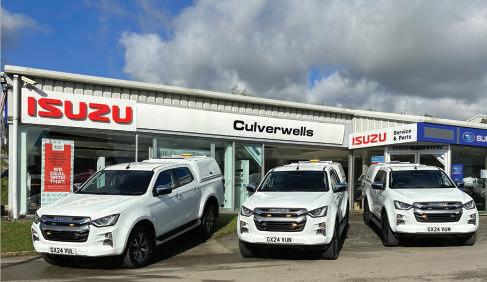
the difference. We’re small enough to keep things personal but experienced enough to support businesses of all shapes and sizes.”
Our dealership has evolved with the times. Through our Subaru franchise, we’ve invested heavily in electric vehicle infrastructure, putting us in a strong position for the arrival of the all-new Isuzu D-Max EV later this year. That forward-thinking approach, coupled with decades of commercial know-how, makes Culverwells a natural choice for business and fleet operators preparing for the future.
Every Isuzu customer – from sole trader to
“Business customers need more than just a handover – they need ongoing support, clear communication and someone who understands the pressures they’re under. at’s where our team makes the difference...”
national fleet – receives the same
national fleet – receives the same commitment to reliability, value, and service that defines our business.
If you’re looking for a commercial partner who’ll pick up the phone, solve problems quickly, and treat your business like their own, we’d love to hear from you.
Culverwells can be contacted at Culverwell Cars, Station Road, Robertsbridge, East Sussex TN32 5DG Tel: 01580 880567 www.culverwells.co.uk
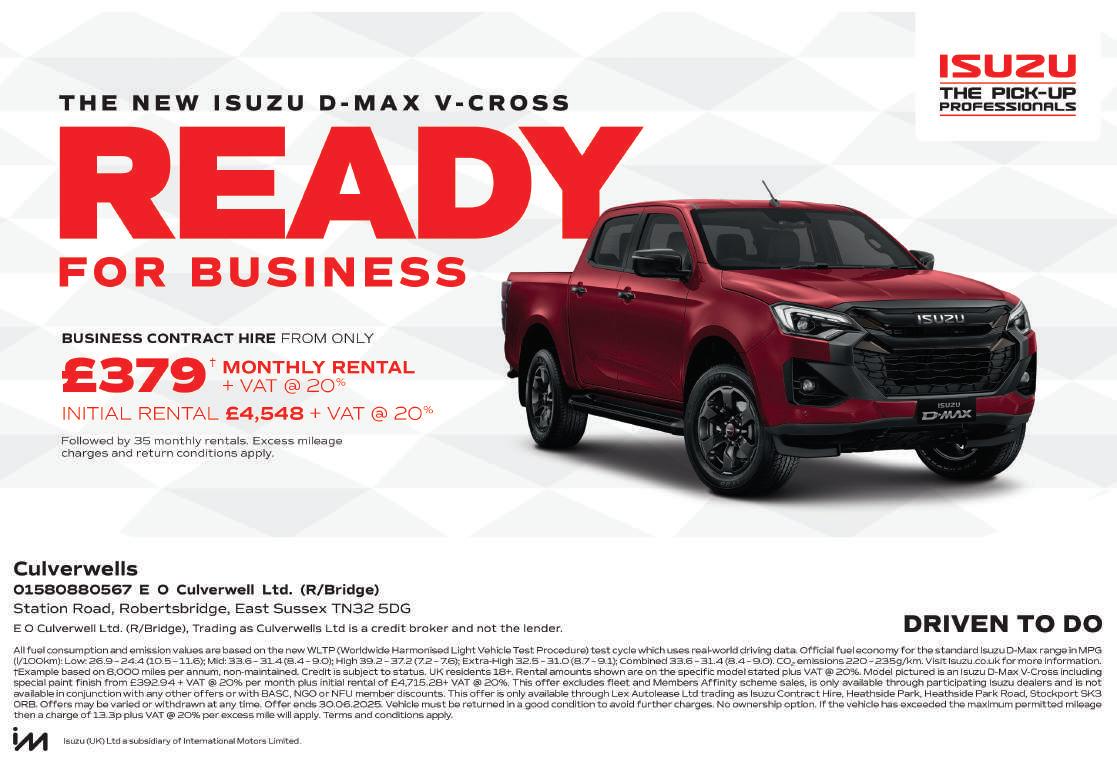
Built for the field but ready for work, too
ISUZU launched the D-Max Huntsman at the 2025 Commercial Vehicle Show. Based on the D-Max V-Cross, the Huntsman represents the perfect blend of rugged capability and practical refinement, tailored specifically for forestry maintenance professionals, gamekeepers, and countryside pursuits.
The Huntsman has evolved to keep pace with the modern countryside user, while staying true to its purpose-built roots. Now equipped with the latest Huntsman Accessory Pack, this special edition embodies everything that makes the D-Max the ultimate vehicle for those working and living in the great outdoors.
Built for the field, equipped for the job
The Huntsman is more than just a showpiece, it’s a working companion. Its practicality starts at the rear, with an Aeroklas Commercial Canopy and under-rail bed liner, providing a secure and functional load area. A custom-fitted Gearmate drawer system sits in the load bed, designed to safely store hunting rifles and essential gear, keeping tools organised and out of sight.
A Brink towbar with 13-pin electrics makes full use of the D-Max’s impressive 3.5-tonne towing capacity, while allowing for additional

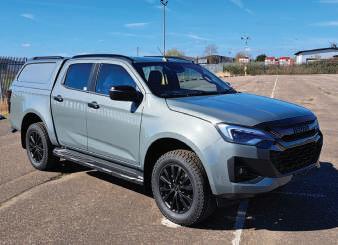
cargo on a trailer. 3D Mat Set come as standard, offering a quick-clean solution for muddy boots and fieldwork debris.
To blend in with the woodland environment while still turning heads, the Huntsman is finished with matt black accents across the grille badge, door handles, and roof rails, giving it a stealthy, purposeful look, available as an optional extra through Isuzu dealer network. A set of 18” black alloy wheels wrapped in General Grabber all-terrain tyres provide additional traction in rural conditions, while custom side steps aid access and enhance the overall visual.
A comprehensive accessory pack Includes an Under Rail Load Liner, an Aeroklas Canopy (choice of Commercial or Leisure version),
Brink towbar, custom black side steps and 18” Black alloy wheels.
The Isuzu D-Max Huntsman is loaded with advanced technology and premium features. Inside the cabin, drivers will find a large 9” touchscreen infotainment system, seamlessly integrated with wireless Apple CarPlay™ and Android Auto™ to keep them connected on the go. The 8-speaker premium sound system ensures crisp audio quality, while dual-zone climate control maintains comfort across all seasons.
Beyond creature comforts, the Huntsman remains true to its utility roots, boasting a rear differential lock and Rough Terrain Mode for challenging conditions, alongside an extensive suite of Advanced Driver Assist Systems (ADAS) – including Intelligent Adaptive Cruise Control, Lane Keep Assist, and Rear Cross Traffic Braking. Safety is further enhanced with eight airbags, including a central airbag for added protection. With a 3.5-tonne towing capacity and over a tonne payload, the D-Max Huntsman doesn’t just look the part – it’s built for serious work.
Alan Able, Managing Director at Isuzu UK, commented: “The D-Max Huntsman is a true tribute to our heritage and a bold step forward in vehicle versatility. ”





eDELIVER 7 keeps the buzz around Maxus flowing
Maxus continues to create an exciting buzz with its collection of electric vans. Andrew Walker runs his eye over the eDELIVER 7
The Maxus eDELIVER 7 is a mid-size electric van that sits between siblings the eDELIVER5 and eDELIVER 9 in the burgeoning Maxus electric van range.
Model range
It’s available in three sizes: L1H1, L2H1 and L2H2; and with two battery choices, the 77kWh or the 88kWh.
L1H1 and L2H1 models are available with both batteries, while the largest version, the L2H2, is only offered with the 88kWh battery.
Payload and capability
As with all electric vans, the size of the battery impacts on the payload available, so the L1H1 with the 77kWh battery offers the largest payload, at 1,200kg. The same van with the 88kWh battery comes with a slightly smaller payload of 1,125kg.
The larger L2H1 with 77kWh battery offers a 1,135kg payload, the 88kWh version, 1,055kg and the L2H2 with the 88kWh
battery a 1,025kg payload. All versions will tow up to 750kg.
L1H1 offers a cargo volume of 5.9m3, a length of 2,547mm, width 1,800mm and a height of 1,390mm. The side-facing sliding door is 900mm wide.
L2H1 has a volume of 6.7m3, is 2,913mm long, 1,800mm wide and 1,390mm high with a 990mm wide side sliding door.
To complete the figures, the largest van, the L2H2, offers up a carrying capacity of 8.7m3, with a length of 2,913mm, a height of 1,693mm, width of 1,800mm and also offers the 990mm side sliding door.
Whichever size and battery combo you pick, you will find a comprehensive list of extras and equipment. So they all feature a steel bulkhead with an observation window, rear wing doors with 90°/180° opening and
“The cabin is eerily quiet and the eDELIVER 7 makes smooth, almost serene progress. Select cruise control on a motorway and away you go...”
six tie-down loops.
Options include a dual sliding door and a power kerbside side-step which is available in conjunction with alloy wheels. Included too are a 6m power charging cable and rear trailer hitch interface.
Power and performance
Maximum power with both batteries is 150kW and maximum torque is 330Nm. Top speed is limited to 55mph if you drive in ECO mode, or 75mph in Normal or Power mode. It will take 10.8 seconds to go from 0-62mph.
Charging and range
At home on an 11Kw AC charger you’ll be able to charge your eDELIVER 7 77kWh battery from 5-100% in 8 hours. Away from home using a 90kW DC charger a 20-80% charge takes just 43 minutes.
Charging is a little slower with the 88kWh battery, so 9.3 hours from 5-100% charge on a 7kWh home charger, and 43 minutes from 20-80% using a 90kW DC charger. As ever, we recommend checking out Rolec, at www.rolecserv.com/home-charging.
WLTP combined range with the 77kWh battery is 200 miles, while the 88kWh battery increases the range to 230 miles. Continued on page 54
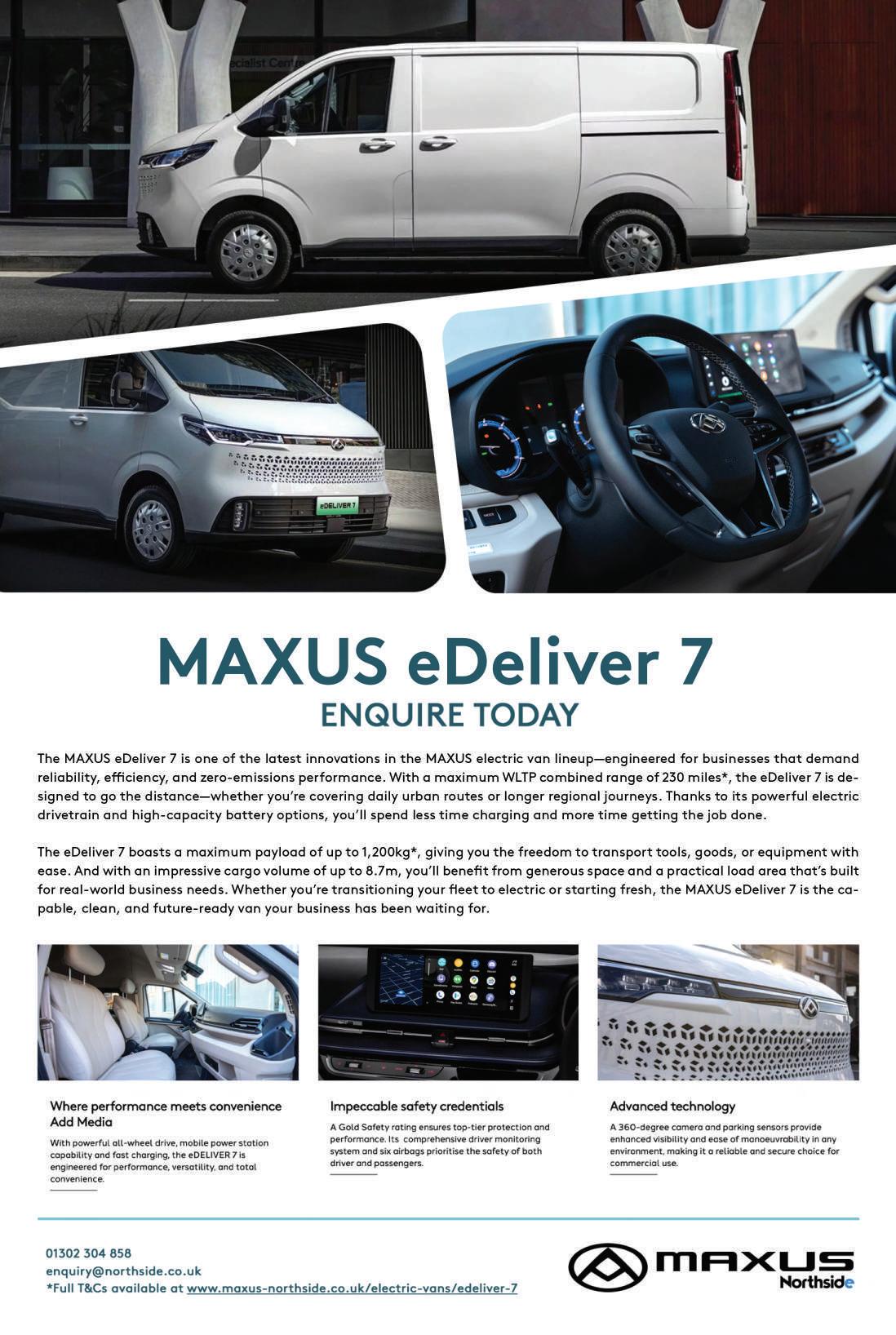
“The dash can be best described as sparse but it does make the cabin look very upmarket for a van... all controls are clear...”
Continued from page 52
Technology and comfort
All variants of the eDELIVER 7 feature a 12.3” touch screen infotainment system with Apple CarPlay and Android Auto, MP5, DAB, Bluetooth, a single USB input, a 12v socket and four speakers. All specs also offer a heated steering wheel, manual air-con, one touch start, automatic LED headlights, a heated windscreen and front and rear fog lights
You can select your eDELIVER 7 with either a two-seat passenger front bench or a single passenger seat. The steering wheel only offers rake adjustment. The driver’s seat comes with a heated function, single armrest and is height adjustable, reclines and has adjustable lumbar support to ensure your driver and crew should emerge relaxed after a spell in the cabin.
Safety
The eDELIVER 7 comes equipped with an impressive array of standard safety features and smart technologies.
These include blind spot detection, lane change assist system, rear cross traffic alert, front and rear parking sensors, autonomous emergency braking system (AEBS), reversing camera, front collision warning system (FCW), 360° camera, lane departure warning and lane keeping, emergency lane keeping assist system, adaptive cruise control with stop&go, intelligent headlight control (ihc), speed limit sign identification system and fatigue driving monitoring and early warning system.
Exterior
The eDELIVER 7 shares a lot of similar lines with other mid-sized vans it will be competing with, including the Stellantis electric options (Citroen eDispatch, Peugeot eExpert, Vauxhall Vivaro Electric and Fiat Professional e-Scudo), as well as the Toyota Proace Electric and the electric Ford Transit Custom.
The front features a bee-hive shaped grille with narrow LED headlights above on each corner and a Maxus logo dead centre. The fog lights sit low down on the front and the rear comes with a high-mounted brake light and narrow edge light clusters. The SAIC Motor and Maxus eDELIVER 7 logos finishing things off.
Interior
The eDELIVER 7 dash and controls can best be described as sparse, as it utilises the same infotainment system you’ll find in the brand’s



MIFA 9 people carrier. This does de-clutter the dash however, and makes it look very upmarket for a van, but when travelling we’d surmise that to access some functions would be challenging. For example, we wanted to turn off the lane departure while on the move, and it proved tricky. In time, we’re sure that the driver would adapt, but for ease of use, in some areas, it’s unnecessarily complicated.
On the plus side, Maxus has included short cut climate controls which is big tick from us, and to the right of the driver there are manual buttons for the driving modes, Eco, Normal or Power, electric mirrors, and electric parking brake.
In front of the driver is a clear and concise digital driver’s display which illustrates the battery charge, your speed and current vehicle range. Steering wheel controls allow
“Positioning the gear lever on a steering wheel stalk frees up space for the legs of the third front seat passenger and makes cross-cabin access easier”

you to adjust the infotainment, receive a hands-free phone call and set the vehicle’s cruise control function.
Apple CarPlay is offered via the single USB, useful for our iPhone and Apple Maps.
Storage comes in the form of a good sized glove box, large door pockets, a dash mounted bin just to the left of the driver handy for the keys, a half dash-top storage area and a low down space in front of the centre passenger.
More good news is that you change gear using a steering wheel stalk located on the right side of the steering wheel. This not only frees up space for the legs of your third passenger but is easy to reach and to use as well.
The interior itself features some decent plastic finishes across the dash and doors and the seat upholstery feels hard wearing. The floor is protected by a black, shiny, vinyl wipe clean carpet.
Prices
Pricing for the eDELIVER 7 starts from £44,995 + VAT for the L1H1 77kWh version, rising to £49,995 + VAT for the largest L2H2 88kWh model.
Continued on page 56


Continued from page 54 Warranty
All MAXUS vehicles come with five years’ warranty or 60,000 miles, and include five years, roadside assistance cover as standard.
On the road
We had the opportunity to drive two versions, the L1H1 and L1H2, both fitted with the 88kWh battery. The first thing to say is that driving the eDELIVER 7 is a doddle. It feels like piloting a large SUV. Climb aboard, push the start button, select Drive and away you go.
We began in Eco mode which limits your top speed to 55mph. That may sound low but with two of us on board the van still felt plenty powerful enough.
As we headed onto the M57 we changed into Normal and accelerated up to motorway speeds. The cabin is eerily quiet and the eDELIVER 7 makes smooth progress. We selected cruise control and allowed the van to sit at 65mph as we headed towards Runcorn. All around visibility is good with the added bonus of front and rear parking sensors, a reversing camera and a 360° camera, meaning reversing or parking is easy than in may vans.
Being an EV, the eDELIVER 7 offers three levels of regeneration which you can select via the touchscreen. High, for the most assist; Low the least; and Standard, which is the de facto setting.
We tried all three. High does add a bit more accelerator weight to the drive and you’d want to utilise this level in town or stop-start driving situations. Low gives the van a little more oomph, which proved useful on the motorway, while Standard unsurprisingly sits
somewhere in between. Given time we’re sure you’d find which works best for you. Similarly, with the driving modes, you’d want to use Power if you’re carrying a larger load, especially if the journey involves any inclines. We found that Normal allows you to do most of our driving, but Eco is a good idea when your van is empty or you’re not in any hurry and can happily stay below 55mph.
As far as comfort goes, the seats are nicely adjustable, all of the controls fall easily to hand and the bonus of a heated steering wheel and heated seats mean you can utilise both to keep warm and to stop you from draining battery power via the climate controls.
The only negative we could find is that the steering wheel does not adjust for reach, only up and down.
Pros
Comfortable and spacious interior. Fantastic safety is fitted across all versions. Neat and tidy dashboard with large, bright and clear infotainment that you can reach from the drivers seat. Two batteries, two heights, two lengths and a 1 tonne payload gives operators a decent choice. A 200 or 230 mile driving range is ultra competitive.
Cons
No chassis version yet. Even the entry level version isn’t cheap.
Verdict
Maxus has done it again. It’s only five years since we drove the LDV EV80, a precursor to the eDELIVER range, and Maxus has already managed to launch three electric vans and an electric pick-up. The step up in quality is clear to see, with the eDELIVER 7 joining the
eDELIVER 9 as two of the nicest electric van cabins out there.
With the eDELIVER 7, the brand has tried hard to cover as many bases as it can, offering two heights and two lengths, with the option of two batteries as well. In 2023 only Vauxhall sold more electric vehicles than Maxus, so it is a company that is clearly heading in the right direction.
As an aside we were given a tour of the brands parts warehouse and it would appear that Maxus can look after customers as well.
On the downside, the eDELIVER 7 doesn’t come cheap, but if you do make the switch, both versions offer good battery ranges.
Furthermore, Maxus is utilising vehicle telematics via LEVL GEOTAB, which offers significant benefits to operators who are in electric vehicles already or who are looking to make the switch, by enabling data and AI to improve driver’s performance and vehicle use.
More miles for your buck and at a lower cost. What’s not to like?
CC&V VERDICT
This is a welcome addition to the EV commercial world. Not cheap, but then, nothing of quality ever is. Well worth considering whether you are already running electric vans, or are about to dip your toe in to test the water.
CC&V RATING: N N N N N

The eDELIVER 7 alongside a Maxus Mifa 9 people carrier. The van takes its dashboard cues from the passenger vehicle
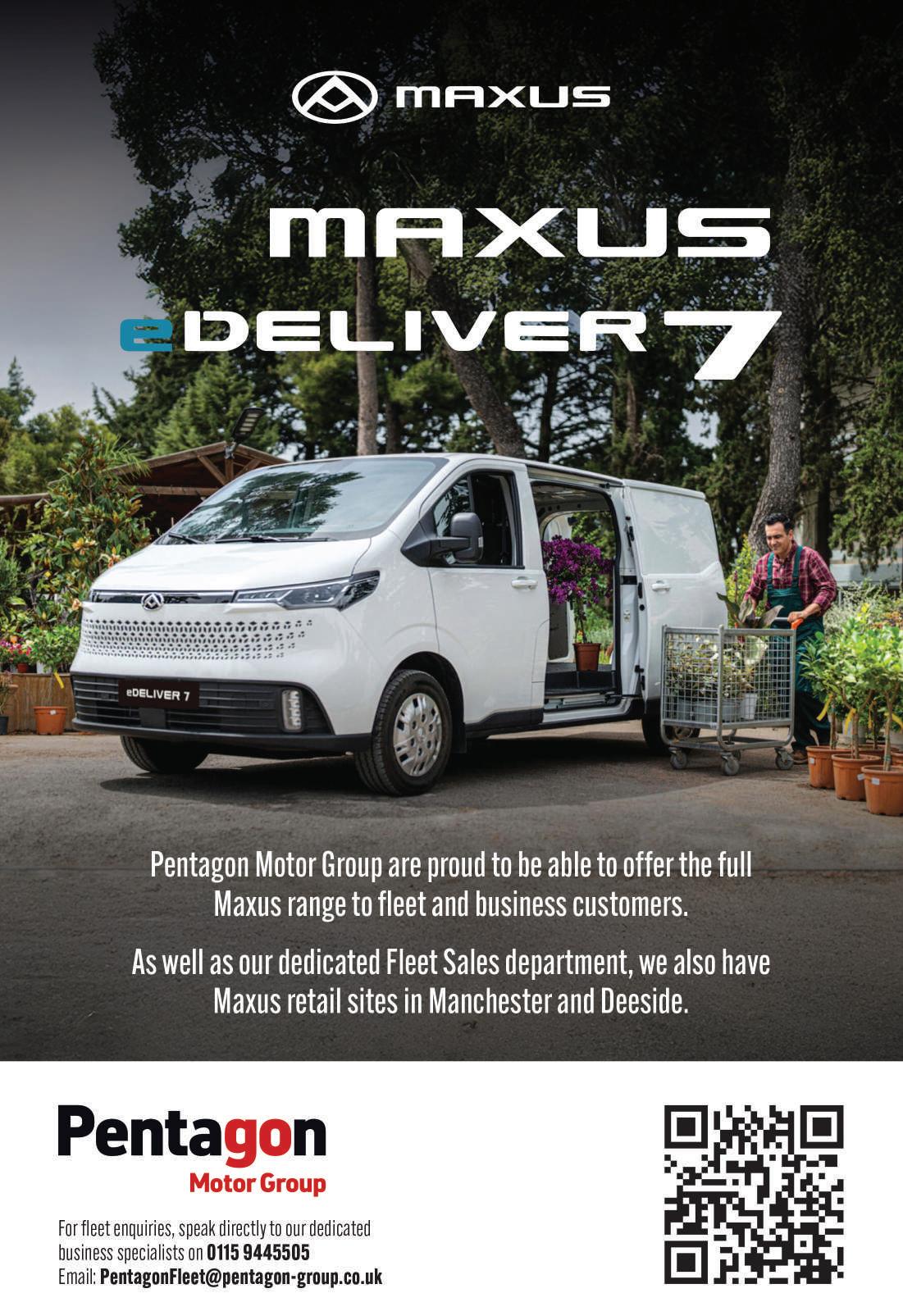
The MAXUS Deliver 7 and eDeliver 7 – the vans that mean business
A new contender for fleet leaders
AS the commercial vehicle market continues its shift toward smarter, more sustainable solutions, two vehicles are generating some serious buzz - the MAXUS Deliver 7 and the MAXUS eDeliver 7.
Bridging the gap between mid-size manoeuvrability and full-size capability, these models are setting the new standards for technology, efficiency, and all-day usability.
Backed by Rivervale, one of the UK’s most experienced MAXUS dealers, businesses now have access to these innovative vans alongside tailored funding solutions, long warranties, and transparent maintenance packages for peace of mind.
Let’s explore whether the MAXUS Deliver 7 and eDeliver 7 live up to the high requirements set by fleet managers and business owners.
On the road: Smart, silent, and surprisingly sophisticated
We tested the all-electric MAXUS eDeliver 7 to see how it performs under real-world driving conditions, and the results were impressive.
With two battery options—77kWh and 88kWh—and a range of up to 230 miles, the eDeliver 7 proves that range anxiety is becoming a thing of the past. The 150kW electric motor delivers smooth, instant power, and its regenerative braking makes stop-start city traffic surprisingly manageable.
Inside, the experience is more akin to an executive saloon than a cargo van. The 12.3” touchscreen is sharp and responsive, with Apple CarPlay, Android Auto, and built-in navigation as standard. The digital dash provides clear battery and route info, while the 360-degree camera system makes city driving and narrow parking safer and simpler. If electric isn’t yet feasible for your business, the diesel-powered Deliver 7 offers a robust and well-proven 2.0-litre turbo diesel engine, providing a familiar experience with added refinement and modern technology.
Versatility where it matters most
The MAXUS Deliver 7 range is available in L1H1, L2H1, and L2H2 configurations, making it adaptable to a wide variety of business needs, from last-mile delivery to construction. Load volume maxes out at 8.7m³, with payload capacities reaching over 1,000kg, depending on the specification. The flat load bay and dual sliding side doors make this a highly functional workspace on wheels. It’s not just about the drive, it’s about what it can carry, and how easily you can work from it each and every day.

Rivervale: More than just a van dealer
Choosing the right commercial vehicle is about more than powertrain and payload. That’s where Rivervale comes in. As an official MAXUS dealer, Rivervale supports business customers across the UK with a comprehensive suite of services and tailored packages designed to reduce downtime and improve cash flow.
From fleet management to vehicle branding, from funding packages to aftercare. Rivervale acts as a true business partner working alongside you to drive your business forwards. Whether you’re looking for contract hire, finance lease, or hire purchase, the Rivervale team will tailor the right solution for you. Rivervale provides nationwide delivery, professional handovers, and even help you spec your vehicle to match your brand and job requirements.
In addition to leasing, Rivervale operates a state-of-the-art Bosch Car Service centre in Portslade, Brighton. This facility offers comprehensive vehicle services, including MOTs, servicing, and maintenance for all vehicle makes and models. Their team of highly skilled technicians utilises advanced diagnostic tools to provide accurate, transparent, and cost-effective solutions, ensuring vehicles remain safe and roadworthy.
Pricing & packages: Designed for business
MAXUS Deliver 7 from £28,137 (ex VAT) MAXUS eDeliver 7 from £44,995 (ex VAT)
Qualifies for the £5,000 OLEV. This grant is a government initiative that provides financial assistance towards installing electric vehicle (EV) charge points.
And right now, Rivervale is offering a standout package:
n Three years’ free servicing
n Five-year / 60,000-mile vehicle warranty
n Eight-year battery warranty on the eDeliver 7
n Flexible finance and zero upfront options available
Meeting the challenges of 2025 and beyond
The demands on commercial fleets are changing fast. Clean air zones, sustainability targets, fuel costs, and driver expectations are all rising. The Deliver 7 and eDeliver 7 answer these challenges head-on.
With lower running costs, zero-emissions options, and the modern comforts that reduce driver fatigue and improve the driving experience, these vans aren’t just tools— they’re assets.
With a dealer like Rivervale offering expert guidance and end-to-end support, the transition to electric or to a smarter diesel becomes not just feasible, but easy.
Our verdict: A serious step forward
Whether you’re electrifying your fleet or simply upgrading to a smarter, more techforward vehicle, the MAXUS Deliver 7 and eDeliver 7 deserve a spot on your shortlist.
With their bold design, premium features, and the backing of a strong dealer network in Rivervale, they represent one of the best business vehicle propositions of the year.
So, if you’re ready to future-proof your business with a van that’s as hard-working as you are, it might be time to get behind the wheel.
For more information, visit rivervale.co.uk/ maxus or call 01273 433480 to book your demo today.

eCitan offers a distinctive option for high-profile fleets
The Mercedes-Benz eCitan is based on the Renault Kangoo, as the diesel version is, but the Germans are keen to point out that they have taken a much greater role in the project this time around. Andrew Walker sees if he can spot the differences
Trims and body styles
There are two trim levels, Progressive and Premium with L1 and L2 wheelbases offered. Prices start at £33,995 + vat.
Powertrain and range
Fitted with a 45kWh battery, the eCitan comes with a WLTP range of 175 miles.
Performance
The system produces 122hp with 245Nm of torque, leading to a 0–60mph time of 14 seconds and a top speed of 84mph.
Charging
The eCitan supports AC charging up to 22kW and DC charging at up to 75kW. Charging at home on a 7kW wall box will take 6.5 hours (http://www.rolecserv.com/ home-charging). On a 75kW rapid charger a 10-80% top-up will take just 38 minutes. There’s a handy charging cable bag which can be secured in the rear load space, and you can open the charging socket via a dashboard button. The socket is located underneath the MB three-pointed star in the centre of the front grille. And the key fob has a cable unlock function, too.
Outside
While the rear is almost identical to the Renault and Nissan, with mid-height rear lights, Mercedes has chosen to ‘MB’ the front end with its own grille and front end. It’s a little bland to look at compared to the nose on a Kangoo but it does keep the Citan in line with the other vans in the Benz range.
Inside
The cabin is where the Citan really shines as it features a better quality finish and look to those you’ll find in the Kangoo or Nissan Townstar. It’s actually very Mercedes-like, with cylindrical air vents, the Germans’ own MBUX infotainment system, a really nice touchscreen and a higher quality finish than

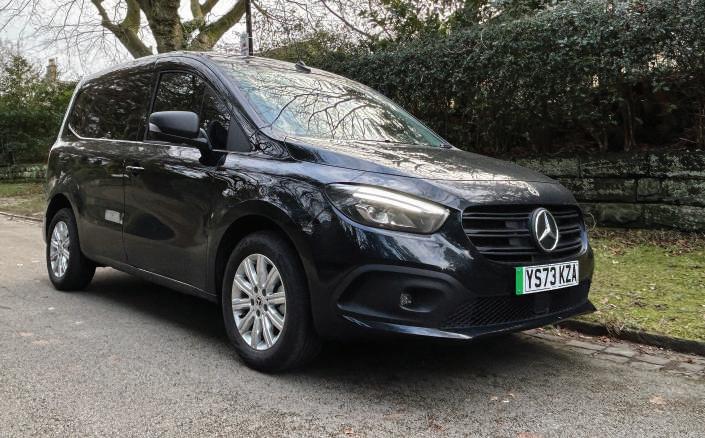
its siblings. The hard plastics look very car-like, with separate climate controls that feature digital displays within the dials. There are also some useful short cut button under the screen. Lower down you’ll find two USB C inputs and a 12v socket.
Cabin
This is decent as well, with door pockets large enough for 1.5 litre bottles, twin centre cupholders, a sizeable glovebox, an overhead storage shelf, a small under armrest area and lidded storage on top of the dash. You can specify a meshed or a fixed bulkhead plus a fold-flat passenger seat if you want to carry longer loads.
The electric gear lever is located high in the middle of the dash and the driver’s seat offers height and lumber adjustment. The steering wheel comes with both reach and rake. However, as we found out in the eKangoo and Townstar EV, with the fixed bulkhead fitted to our test van, there’s not much room to push the driver’s seat back. Taller drivers take note.
Loadspace
The front doors open a full 90 degrees for access and our test van’s side sliding door is 615mm; it’s on nearside of the vehicle. You also get a 59cm low loading sill height for easier access with a 1,059mm height. Load length is 1,806mm, load width 1,524mm and load height is 1,256mm. Payload is 499kg + 75kg for driver.
The L1 can take a pair of Euro pallets and comes with a single sliding side door as standard. On the L2 models, the twin sliding

side doors are wider, increasing from 615mm to 831mm wide so are large enough to load a Euro pallet through them.
Specification
Both models come well equipped. Progressive offers 16” steel wheels, air-con, heat insulating glass, Active Brake Assist, keyless go, LED interior lighting, cruise control, rear parking sensors and reversing camera, the MBUX infotainment system with smartphone integration, DAB, WiFi hotspot, Bluetooth and a multi-function steering wheel. Premium adds 10-spoke alloys, metallic paint, body coloured bumpers, high beam assist, LED headlights and fog lights.
You also benefit from some decent safety features including ABS, ESP, six airbags, autonomous emergency braking, hill-start assist, crosswind assist and attention assist. You can add extras too, including active lane-keeping assist, blindspot monitors and speed limit assist.
Infotainment
Technology includes smartphone integration via Android Auto and Apple CarPlay via the C USB input. The screen icons, clarity and ease of use are first class and certainly better than the systems fitted to the Renault and Nissan vans.
Warranty
This is excellent: three-year unlimited mileage warranty and eight-year /160,000km / 100,000 miles on the battery’s capacity and recharge. Continued on page 62
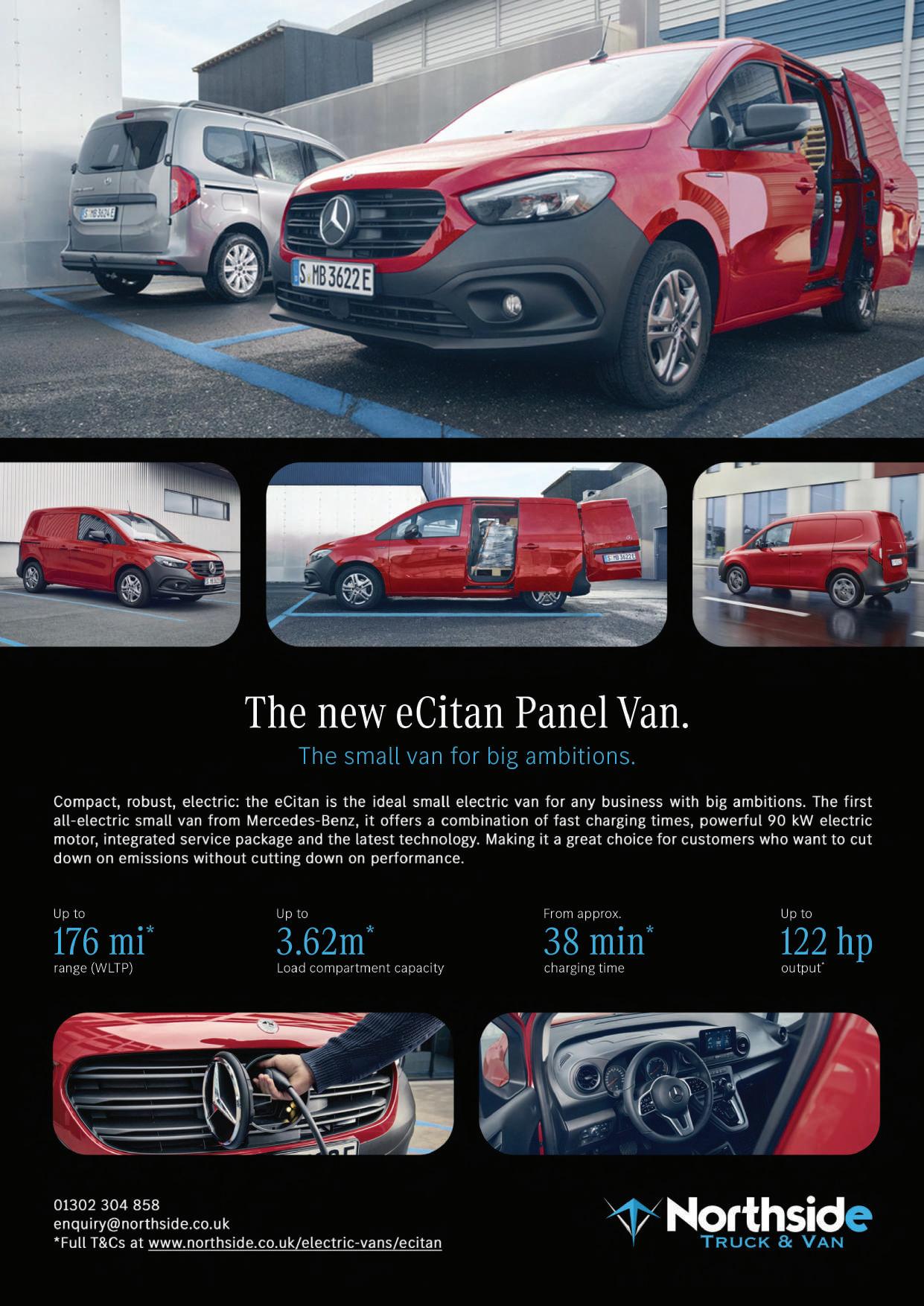
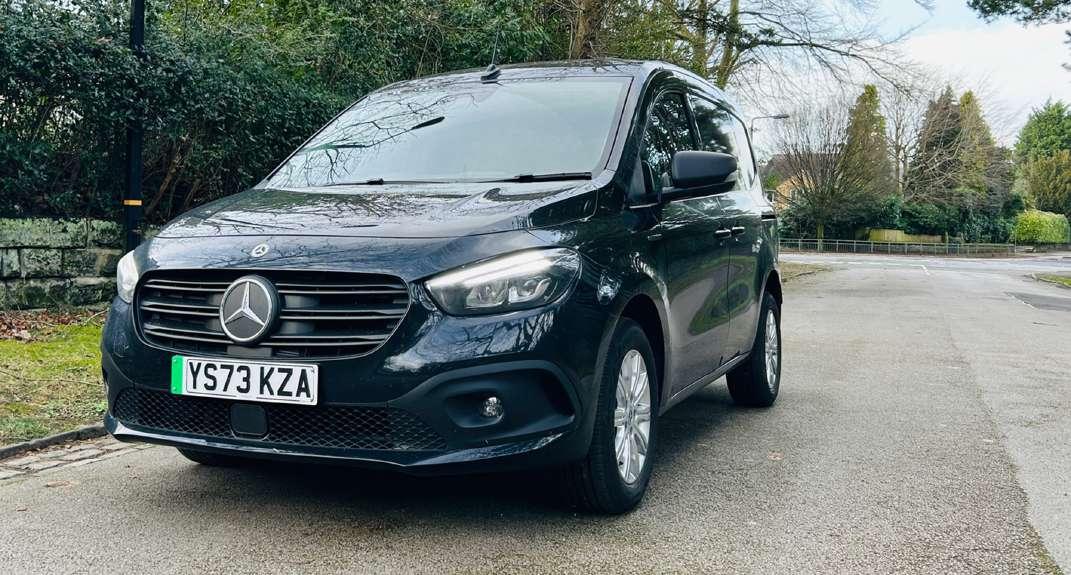
Continued from page 60
e Citan also comes with up to 30 years roadside assistance with out of charge cover included, and an integrated service package. This features four free services – two-year A (minor) and two-year B (major) – and is transferable with ownership
In partnership with RightCharge, Mercedes-Benz Vans is offering customers with a fleet size of 50 vans or less £1,000 (incl. VAT) towards the purchase and installation of a chargepoint when they buy the new eCitan.
Utilising the load bay
Access via the rear doors is good as it is via the kerb side sliding side door. The rear doors are heavy and open and close with a decent thud. The side door doesn’t feel quite as sturdy, so you may want to consider some inside door protection for your own piece of mind.
On the road
We were testing the eCitan L1 Premium panel van. As with other small electric vans, it’s a cinch to drive. In town it’s short, squat dimensions make for nimble city driving and parking is a doddle thanks to the rear view camera, which shows up on the touchscreen when you select reverse.
The eCitan handles the urban jungle very well, even keeping bad road surfaces at bay despite the extra battery weight under the load floor. It’s good in corners and hugs the road well and we’d go as far as to say that the battery adds to the vehicle’s road holding, and it’s not noticeably bouncy for an unladen van.
The cabin is quiet even when you
accelerate to nip in and out of traffic. At higher speeds, though, some wind noise does enter the cabin thanks in the main to the large exterior mirrors, but actual tyre noise is reasonable. Any driver who regularly negotiates city streets will find it more relaxing in the electric Citan than in the diesel version, for example.
On the motorway we selected cruise control and set off at 60mph. We took the speed up to 70mph to see how it felt, but as I’m sure operators are aware, this significantly
“eCitan
is a cinch to drive... its short, squat dimensions make for nimble city driving, and parking is a doddle thanks to the rear camera”
reduces the vehicle’s range. Best to stick to 55-60mph as we did on a sojourn to Liverpool and back where the eCitan comfortably managed one mile travelled to one mile of range used.
The eCitan also features a DYNAMIC driving mode button on the dashboard, so you can choose from Eco or Comfort. If you select Eco mode then the baby Benz won’t go faster than 70mph, including when you’re driving in cruise control. This will help you eke out a few extra miles if used regularly as it slows down the vehicle’s responses.
Pros
The baby Benz offers a lovely car-like cabin and a high quality infotainment system. It’s a
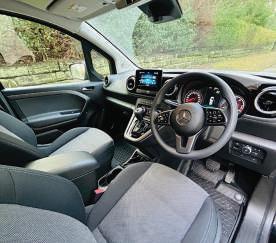
quiet, easy-to-drive urban companion. Safety is high on all models. It comes with zero emissions.
Cons
Load volume and load capacity are far from class leading. The electric Citan is more expensive than the petrol versions. The fitted bulkhead means that taller drivers can’t push the driver’s seat back quite as far as they’d like.
Verdict
UK customers can finally benefit from the expected quality of a small electric Mercedes van. The eCitan offers some clever storage solutions in the cabin and the nicest interior of any small van. Furthermore it offers a quiet, relaxed driving experience, coupled to swift acceleration, a real bonus when negotiating urban traffic.
The load space and load volume might put some off but as electric vans evolve, the eCitan is most definitely heading in the right direction.
CC&V VERDICT
eCitan shows how far electric vans have come. This is a driver-friendly, high-quality option for any fleet looking to make a statement while reducing emissions
CC&V RATING: N N N N


